My most current blog entry:
Entries in Fyvie Castle, Scotland (2)
A Ramble in Scotland with a Visiting Friend (10/31 - 11/3, 2015)
 Sunday, March 18, 2018 at 11:18AM
Sunday, March 18, 2018 at 11:18AM Although I have left Scotland and am living back in Bangkok now, I am still going through photos I took on my many photographic rambles. This entry is of a three day ramble (mostly the northeast of Scotland) I took when my good friend John Stiles visited me. I took many, many photos on this ramble, so it will take some time for me to complete it. These are 'The Best of John's Visit.' Enjoy.
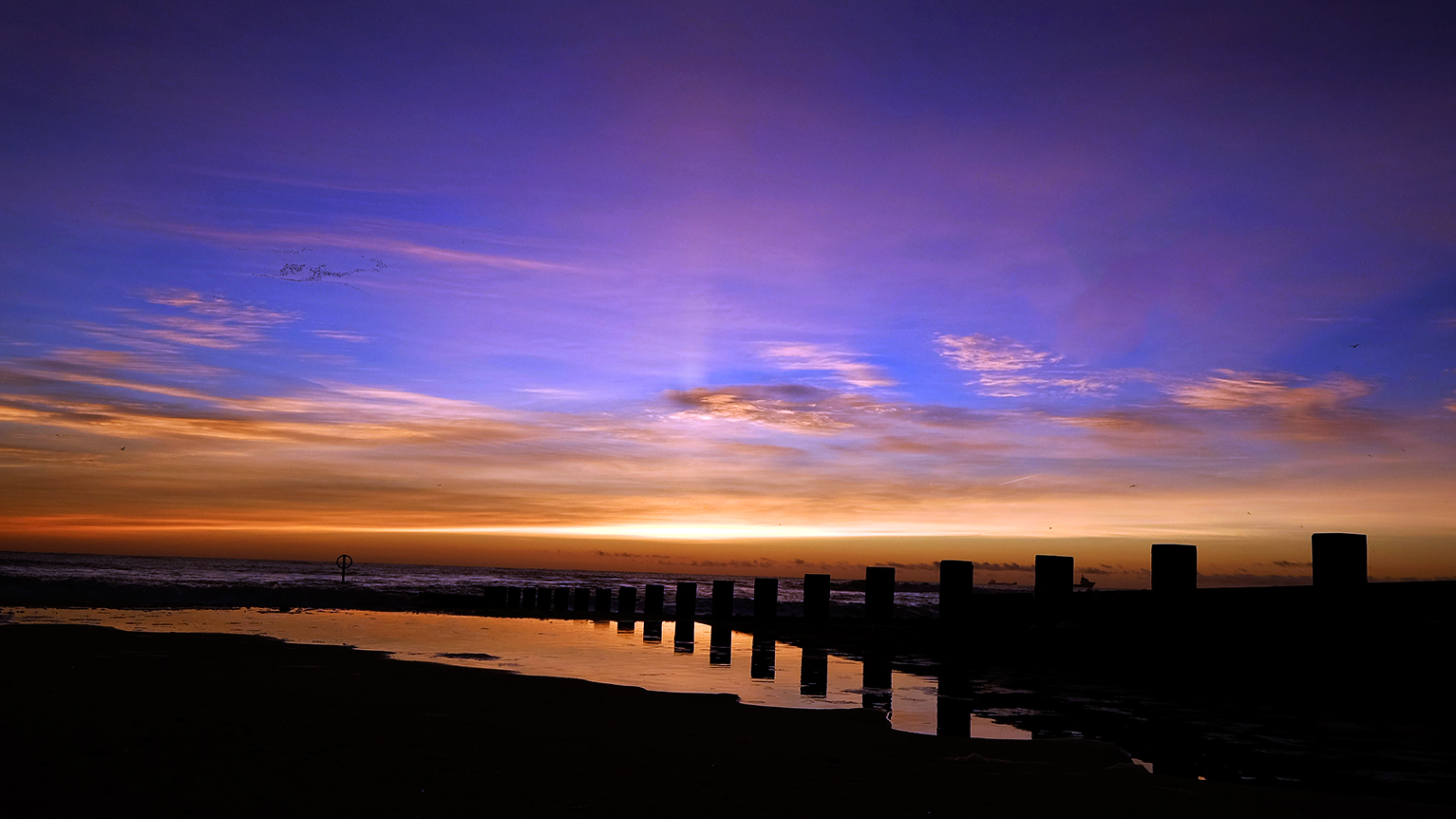 A North Sea sunrise along the Aberdeen Esplanade. Just above freezing.
A North Sea sunrise along the Aberdeen Esplanade. Just above freezing.
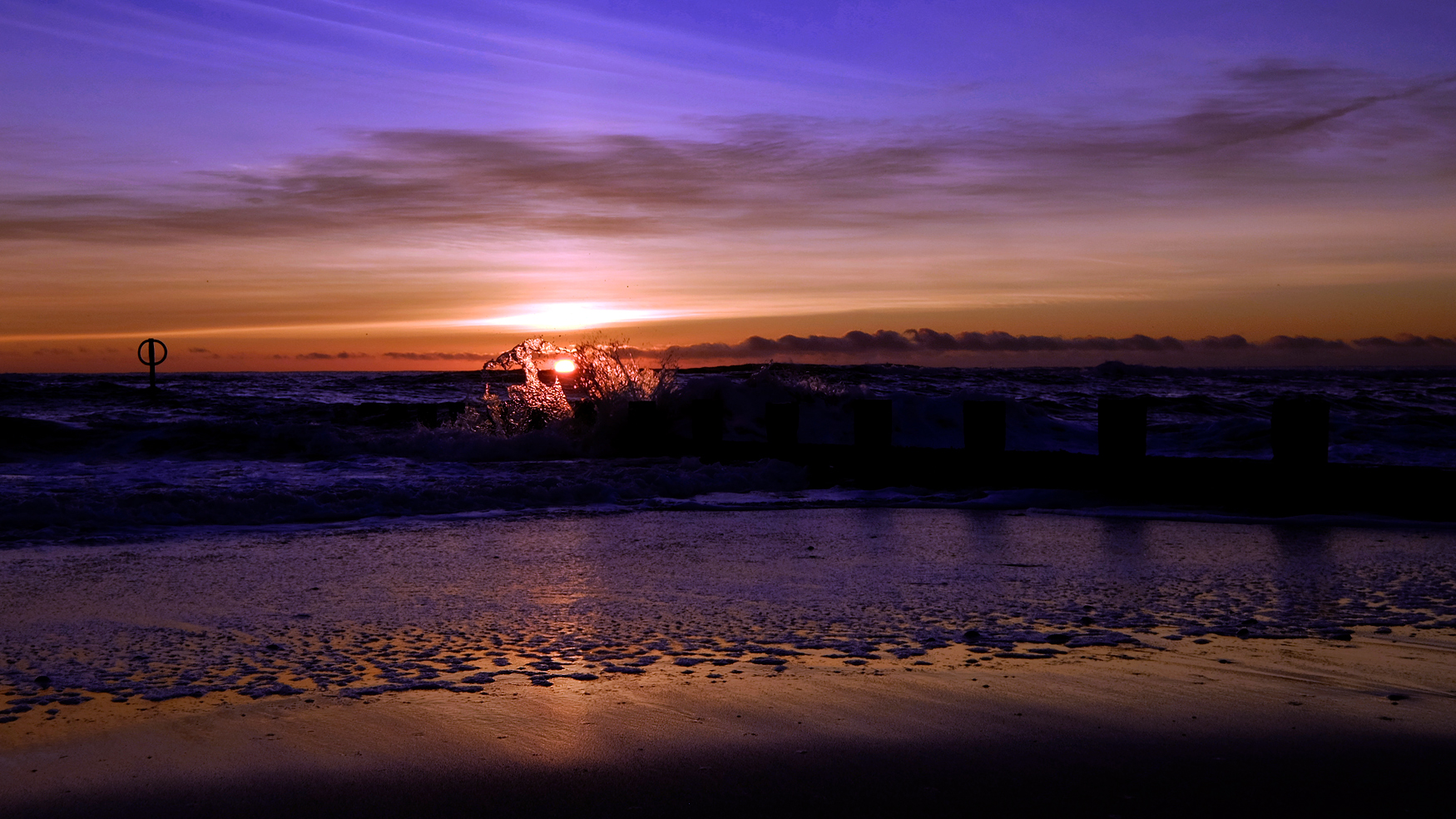 First Light. North Sea.
First Light. North Sea.
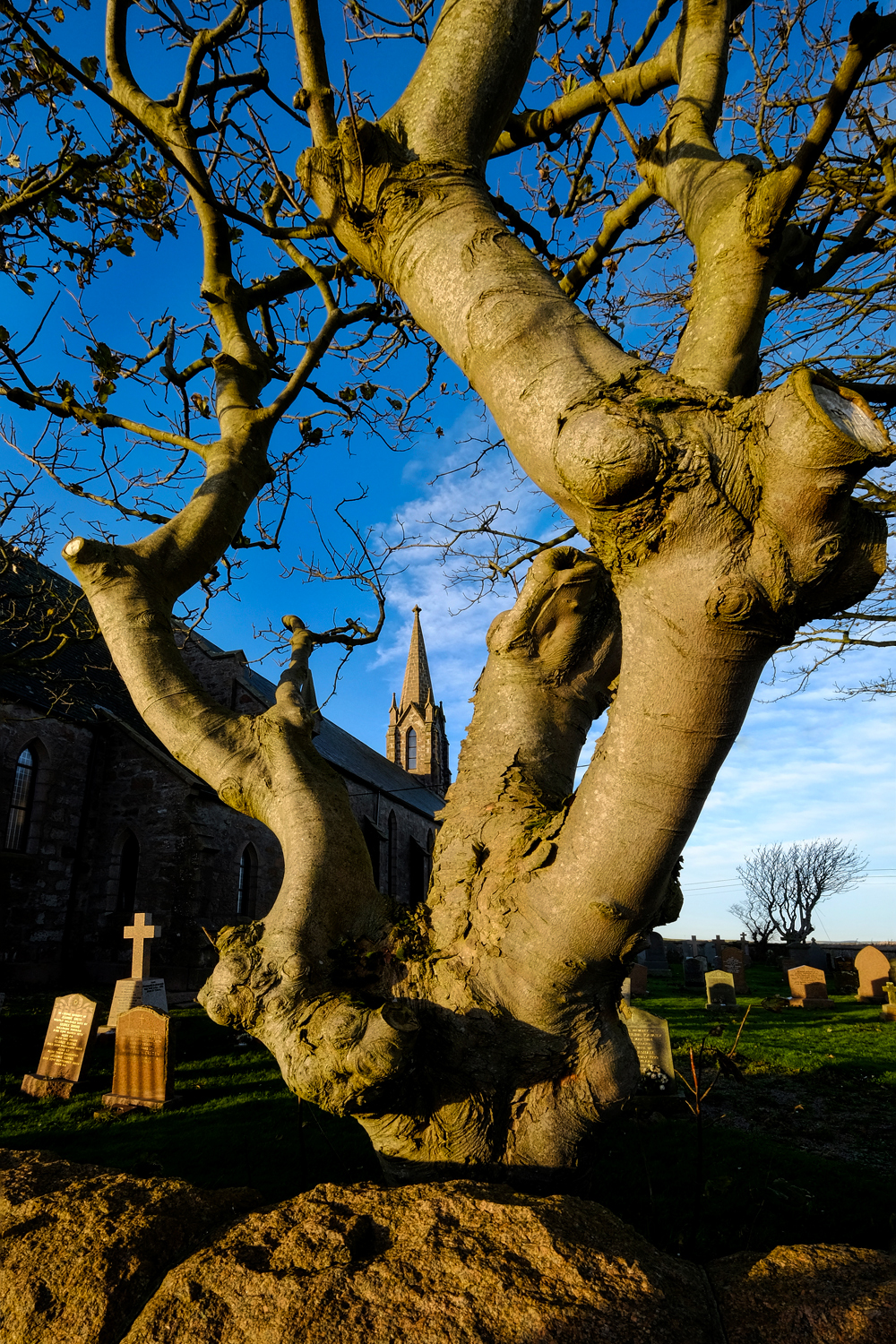 A church along an Aberdeenshire rural road.
A church along an Aberdeenshire rural road.
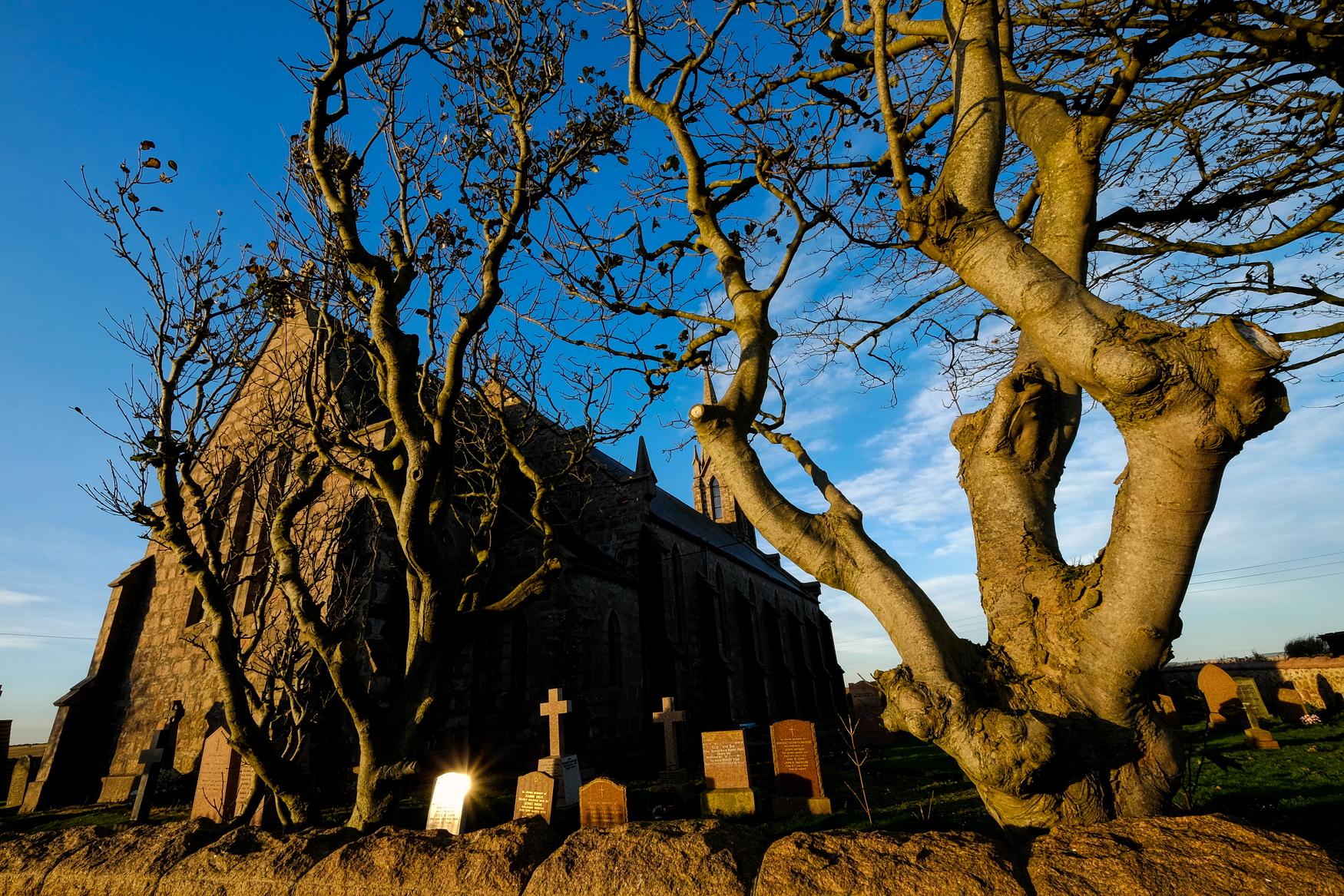 Stunning November weather for northeast Scotland.
Stunning November weather for northeast Scotland.
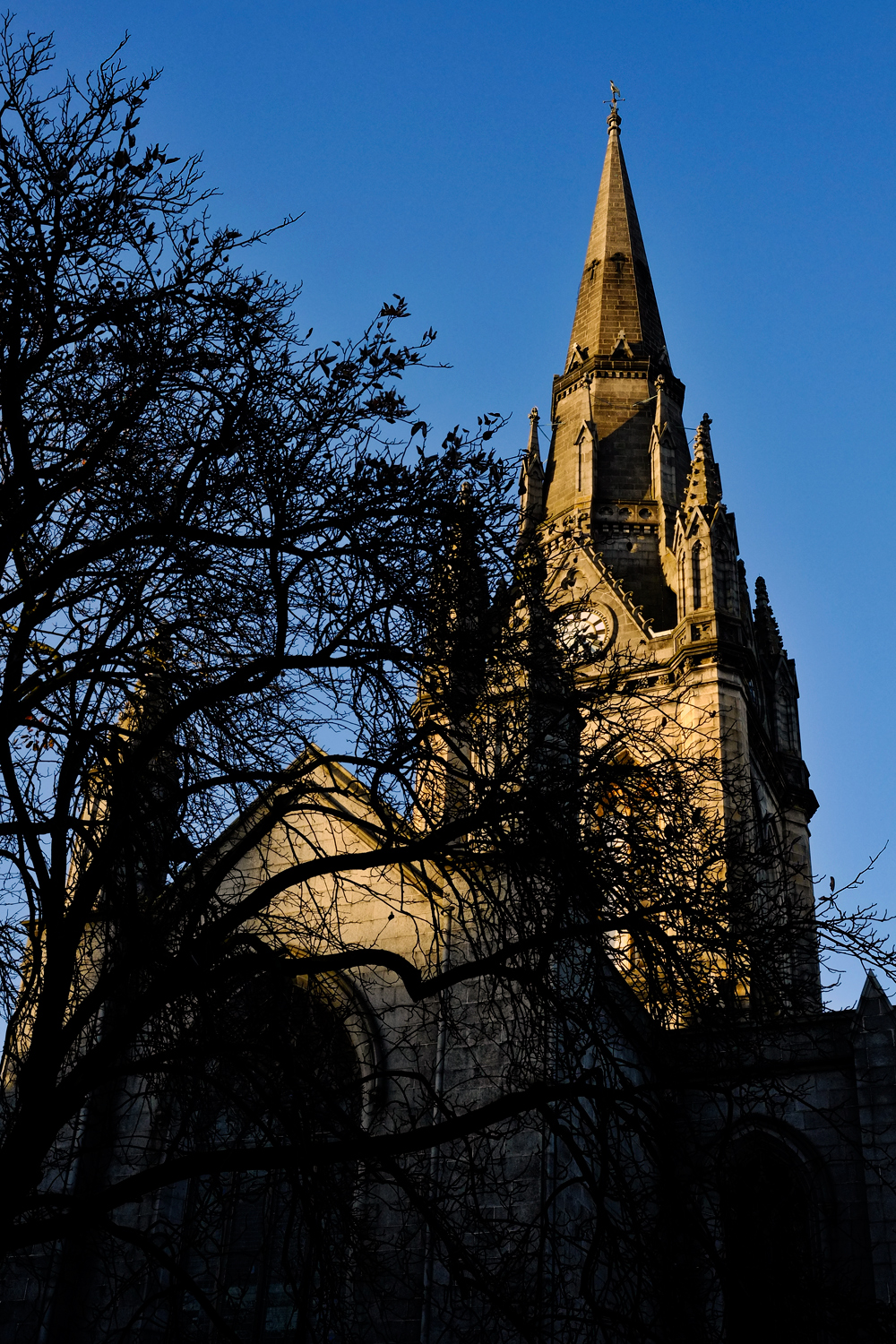 I the middle of the Aberdeen city centre is a wonderful church and cemetery.
I the middle of the Aberdeen city centre is a wonderful church and cemetery.
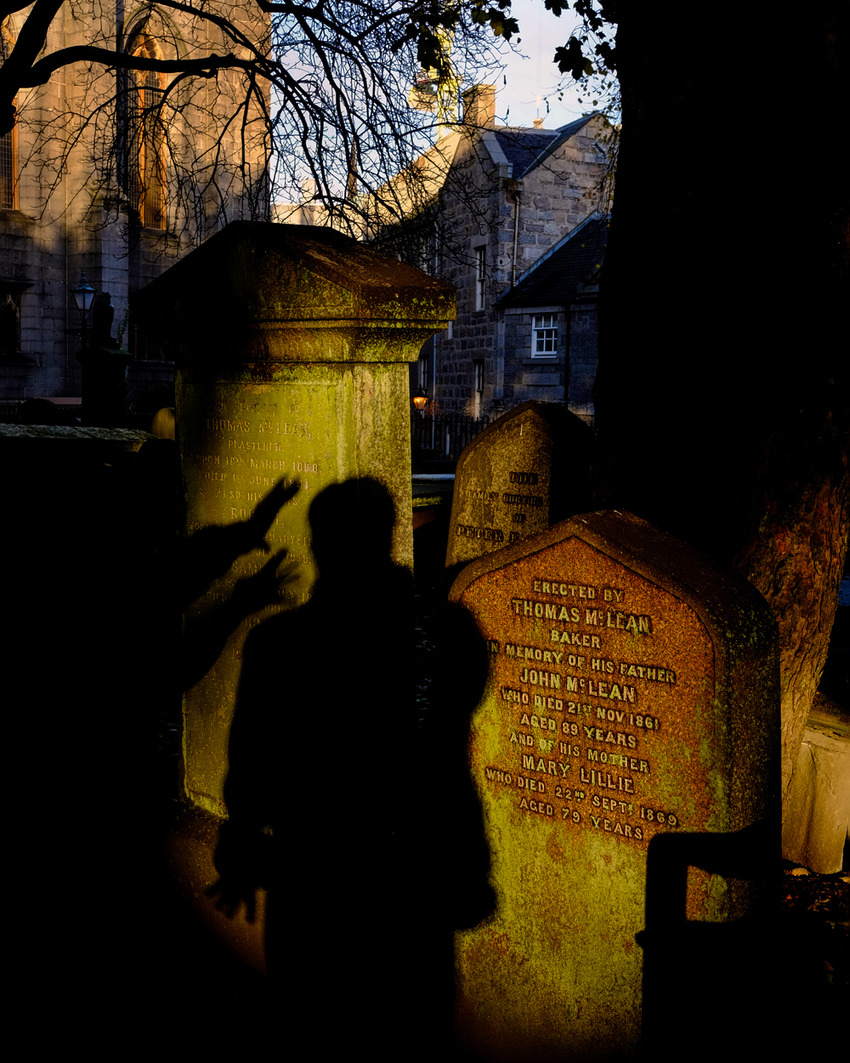 When an old friend visits that you haven't seen in a while, and it's Halloween, and you are in an old graveyard . . . you must play!
When an old friend visits that you haven't seen in a while, and it's Halloween, and you are in an old graveyard . . . you must play!
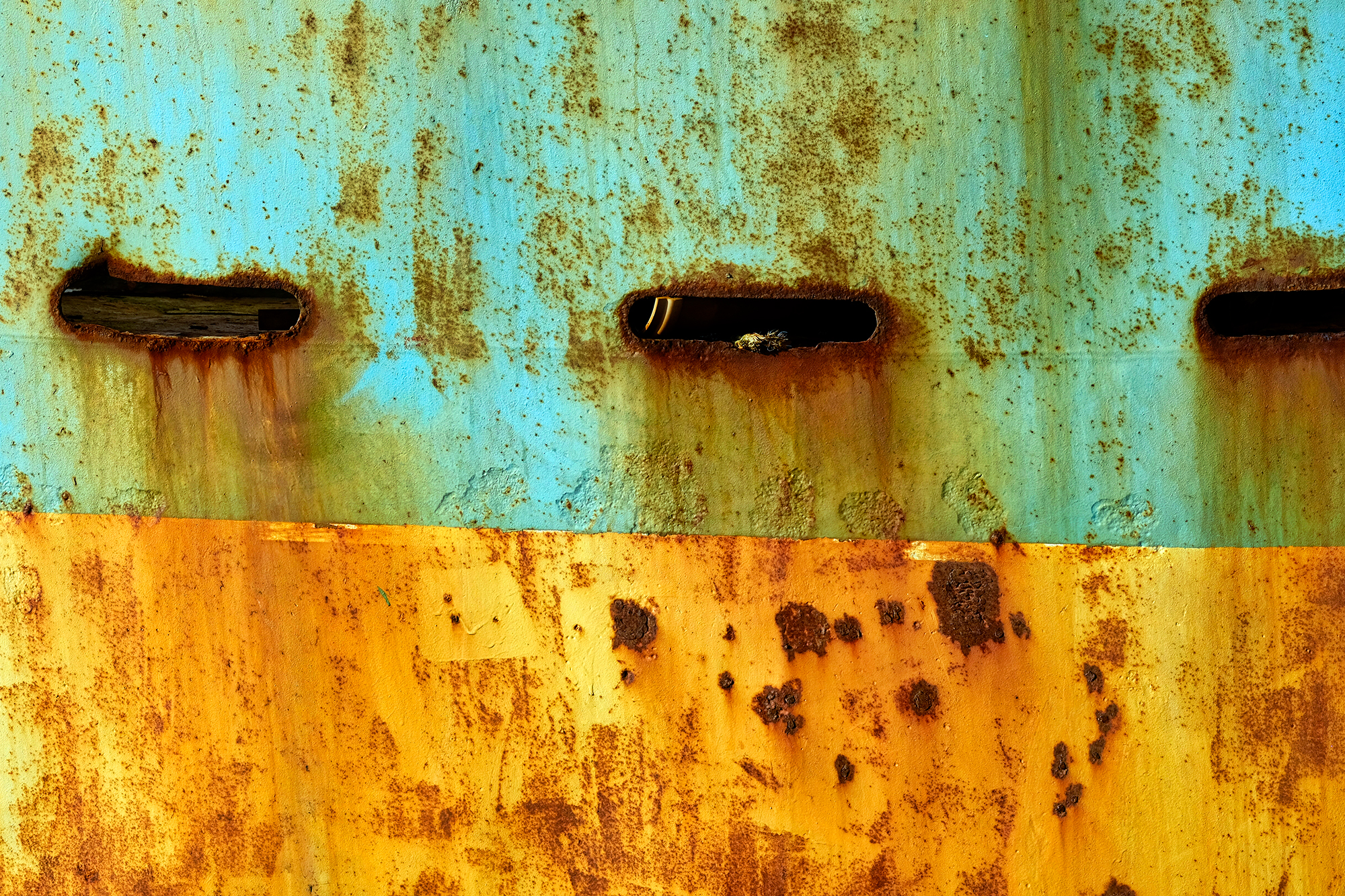 After that stunning sunrise at the Aberdeen Esplanade, our day one ramble took us up the coast to the little fishing berg of Baddam where the hulls of the beached trawlers provided extraordinary abstract studies in decay and color.
After that stunning sunrise at the Aberdeen Esplanade, our day one ramble took us up the coast to the little fishing berg of Baddam where the hulls of the beached trawlers provided extraordinary abstract studies in decay and color.
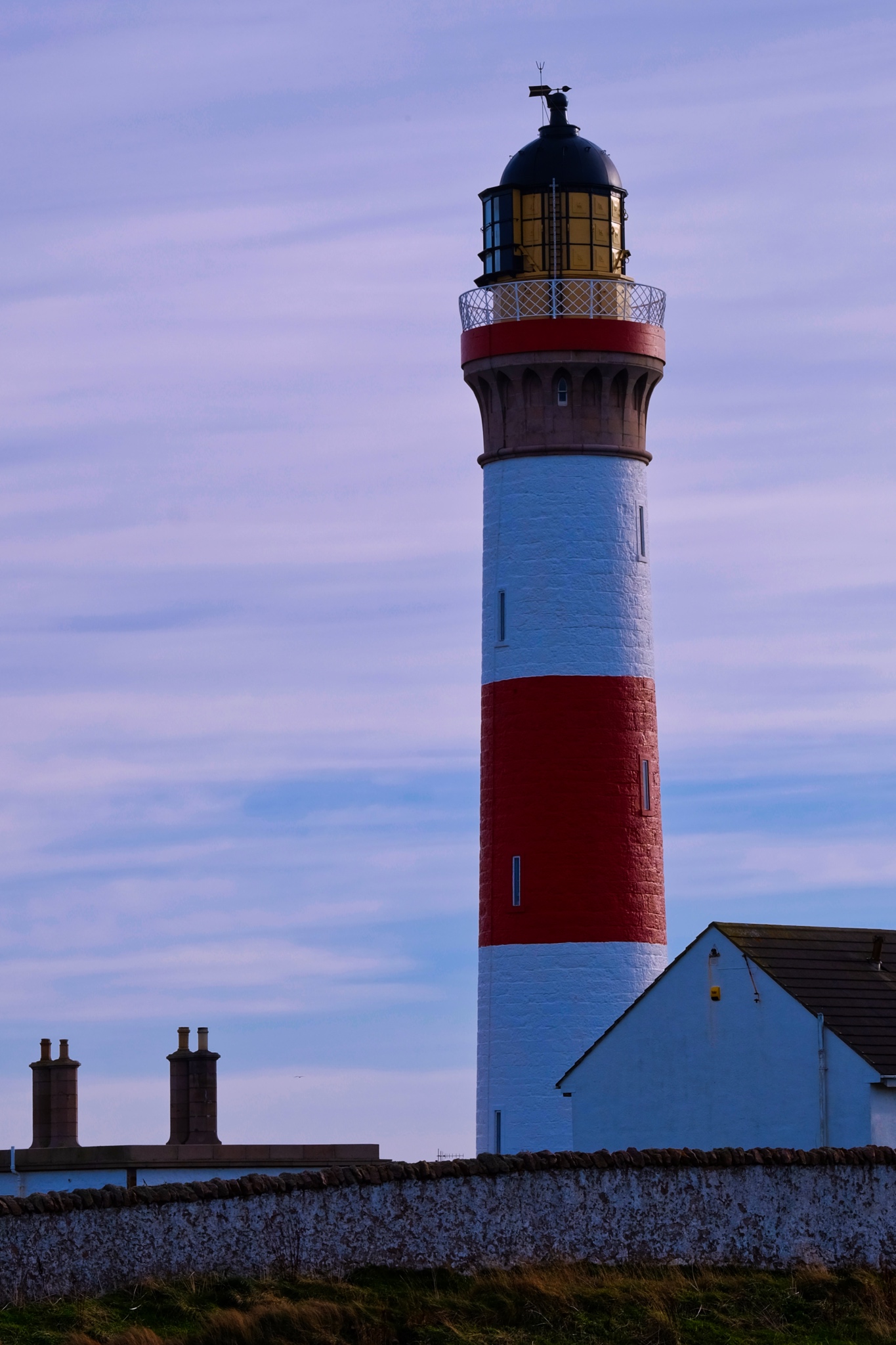 The lighthouse at Baddam.
The lighthouse at Baddam.
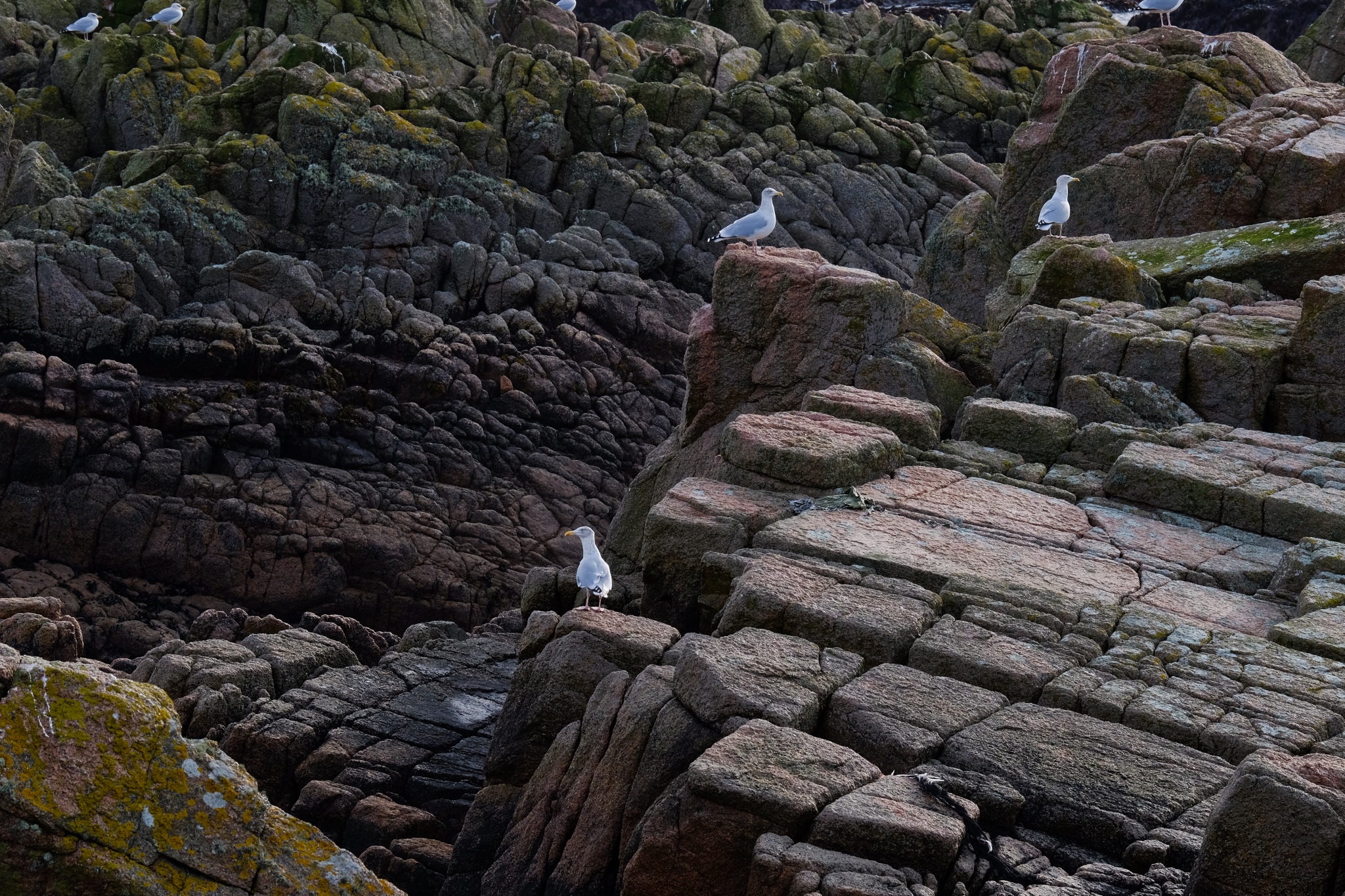 Exposed rocks near Baddam harbour.
Exposed rocks near Baddam harbour.
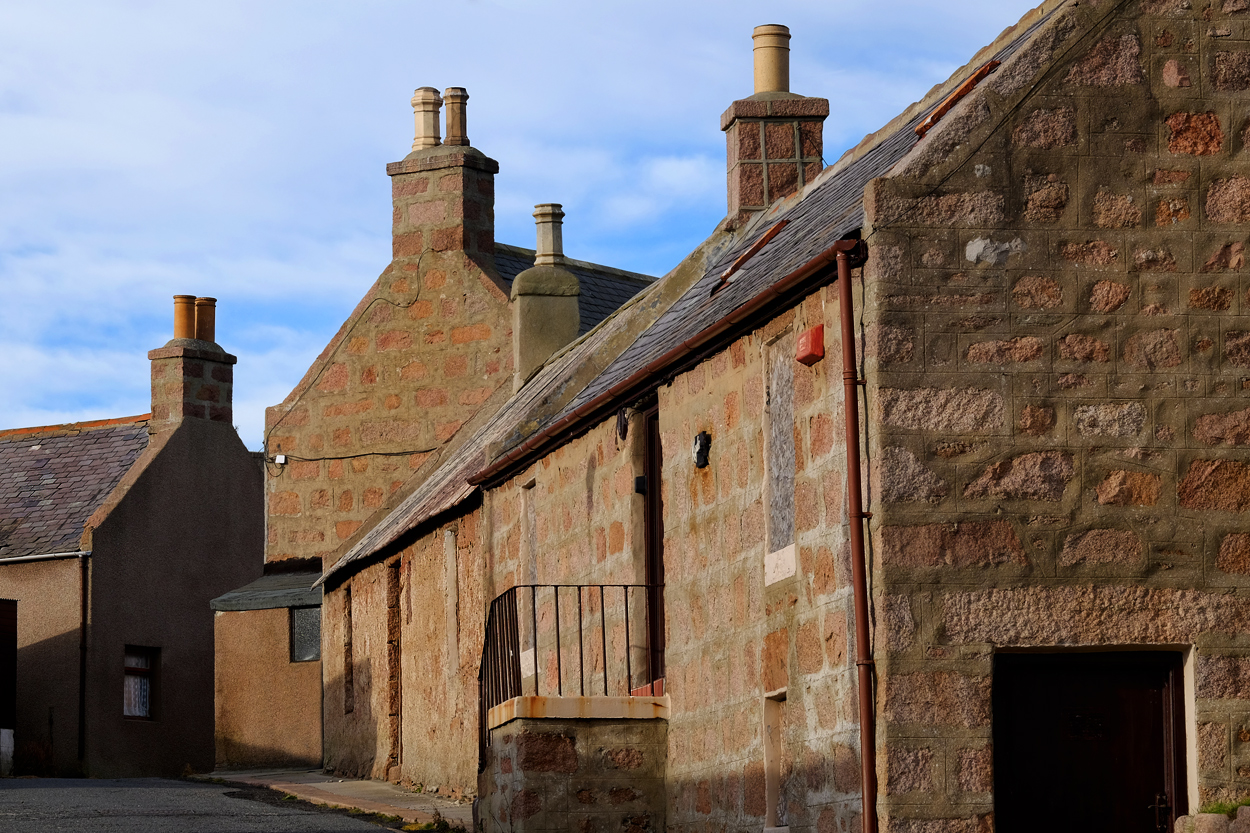 The austere old section of Baddam village.
The austere old section of Baddam village.
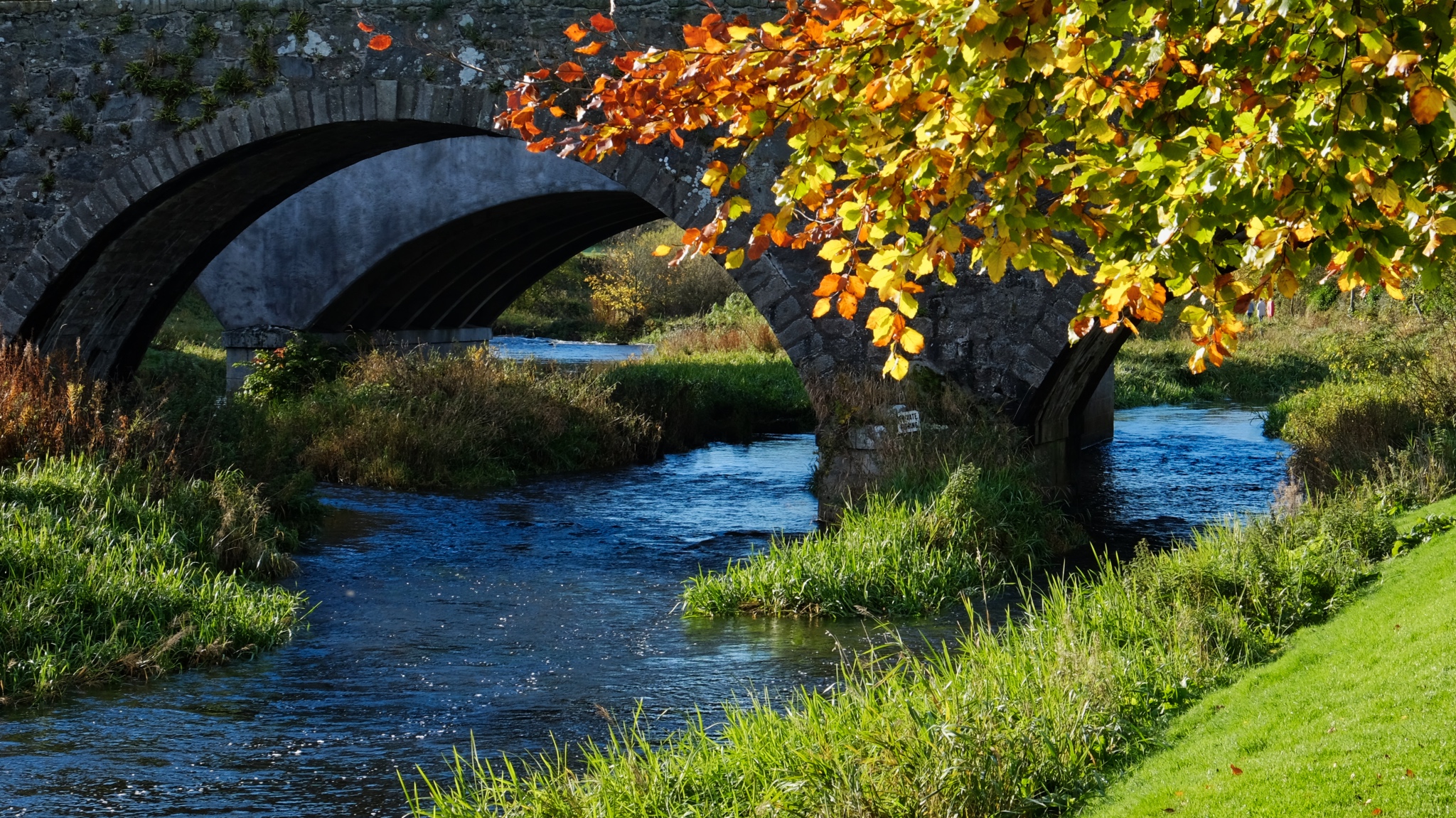 All along our small road route, we were continually 'discovering' fantastically beautiful scenes.
All along our small road route, we were continually 'discovering' fantastically beautiful scenes.
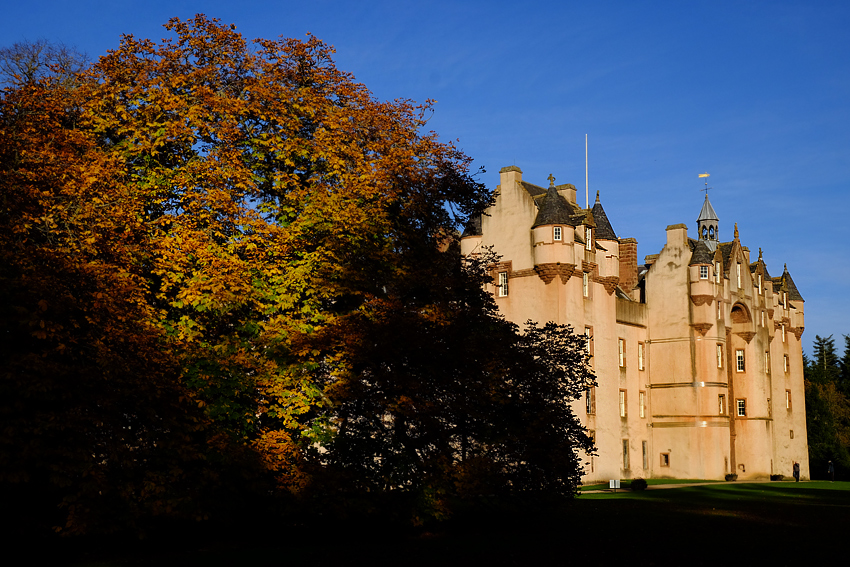 The stunning Fyvie Castle.
The stunning Fyvie Castle.
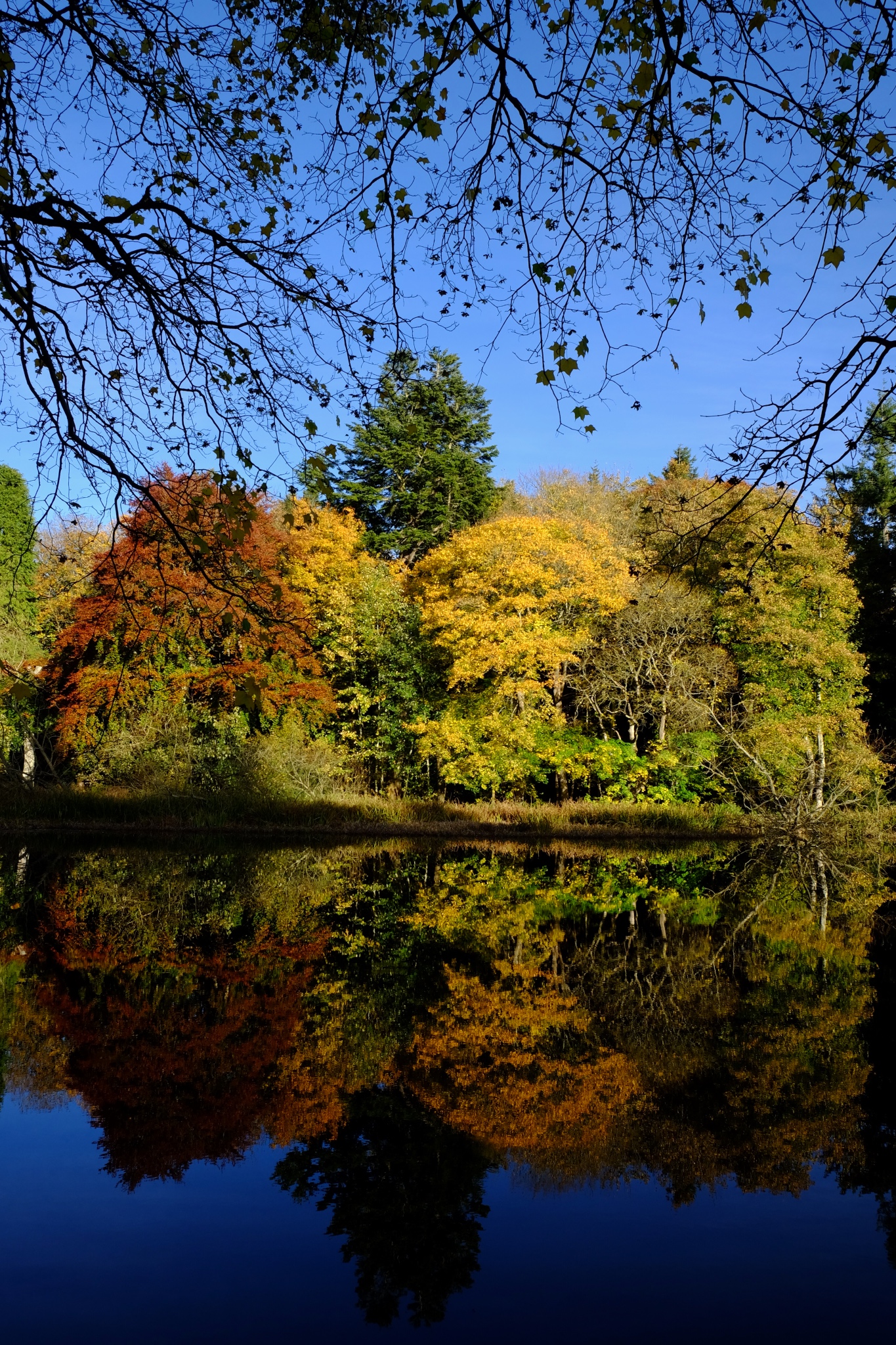 Gorgeous autumn scenes all around the grounds of Fyvie Castle.
Gorgeous autumn scenes all around the grounds of Fyvie Castle.
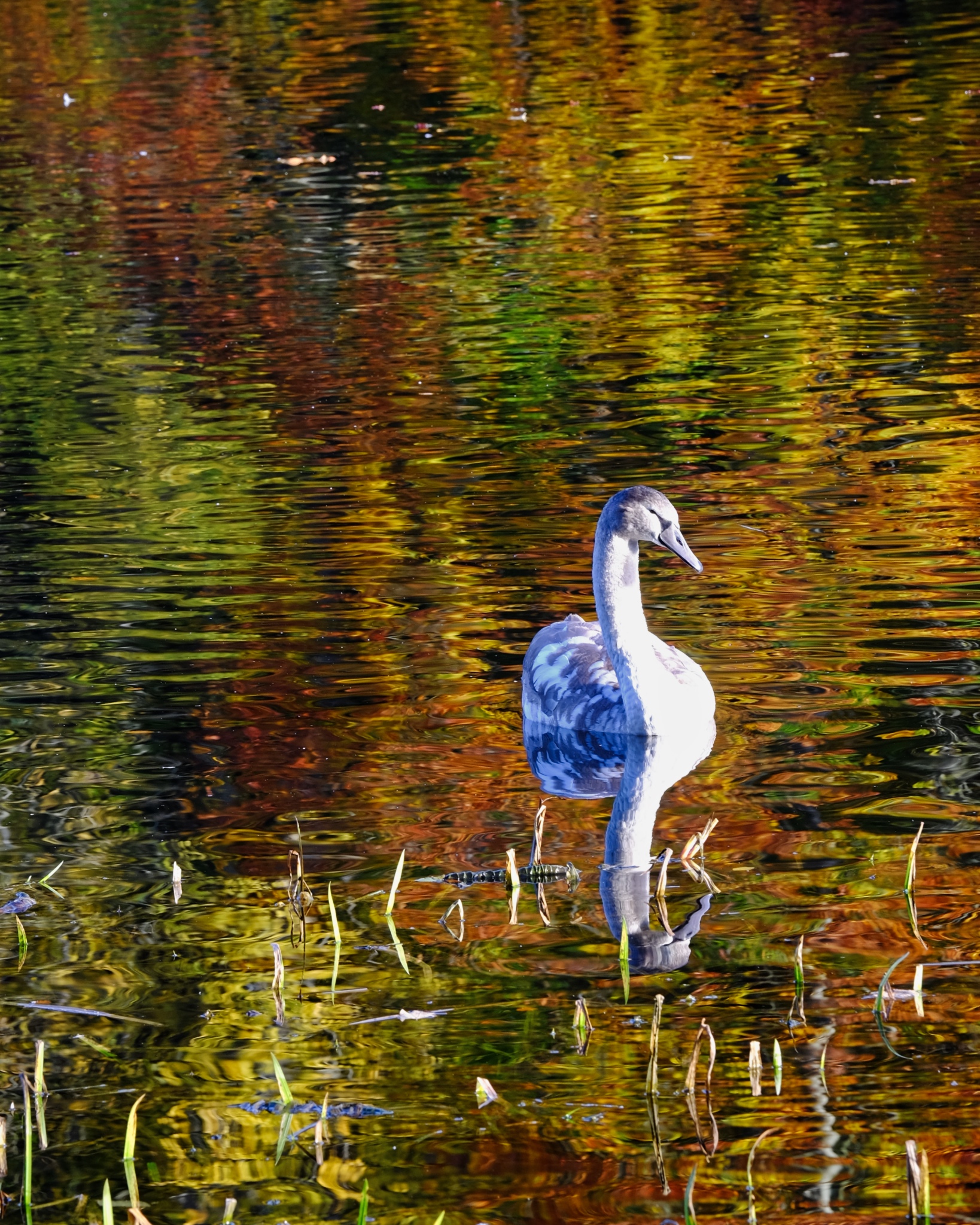 Superb Fall colors reflected in the castle goose pond.
Superb Fall colors reflected in the castle goose pond.
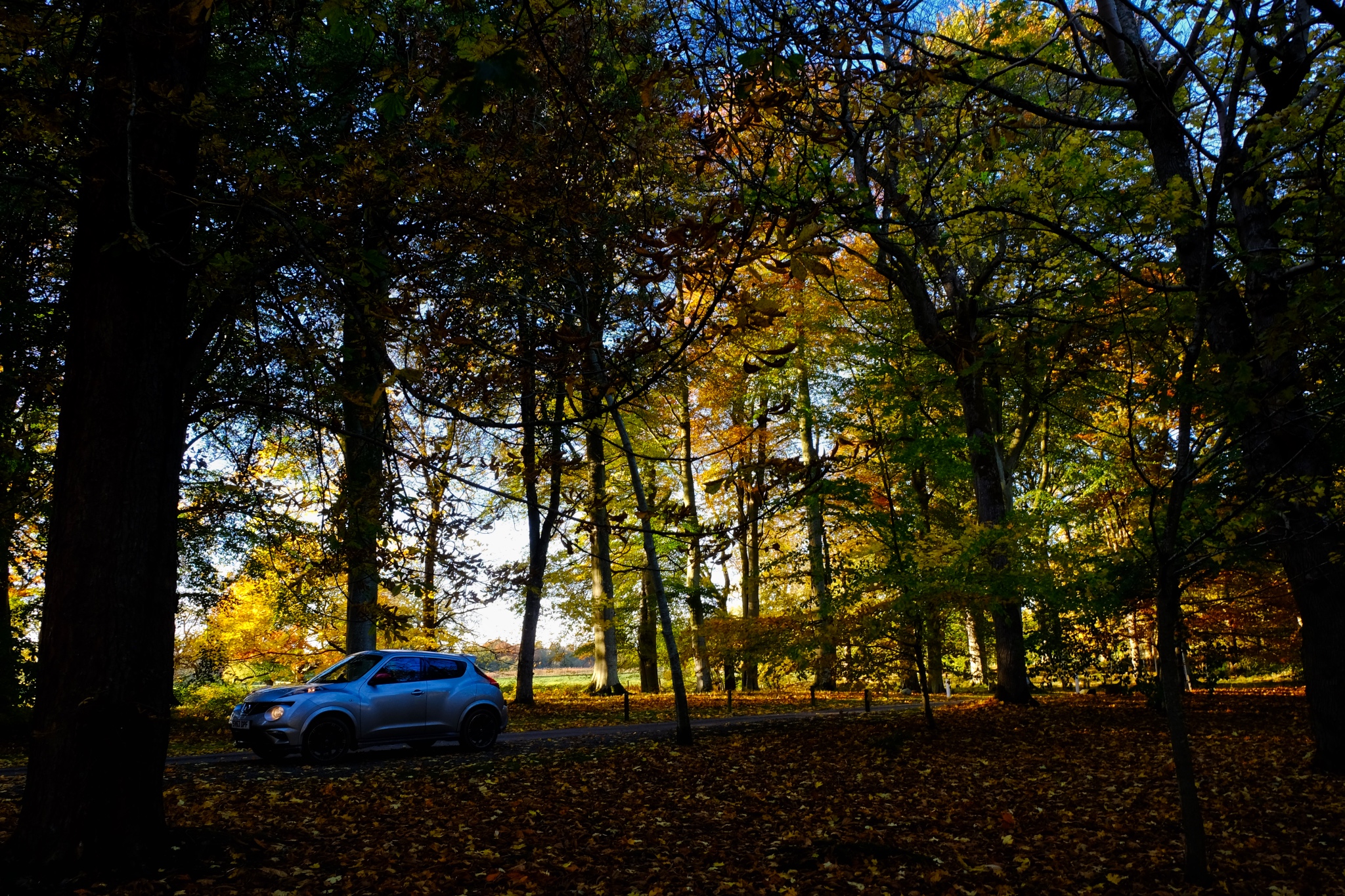 For three glorious days we rambled about the small roads of northeast Scotland. My AWD Juke NISMO was the perfect car for the narrow, winding, wet-leaf-covered country lanes.
For three glorious days we rambled about the small roads of northeast Scotland. My AWD Juke NISMO was the perfect car for the narrow, winding, wet-leaf-covered country lanes.
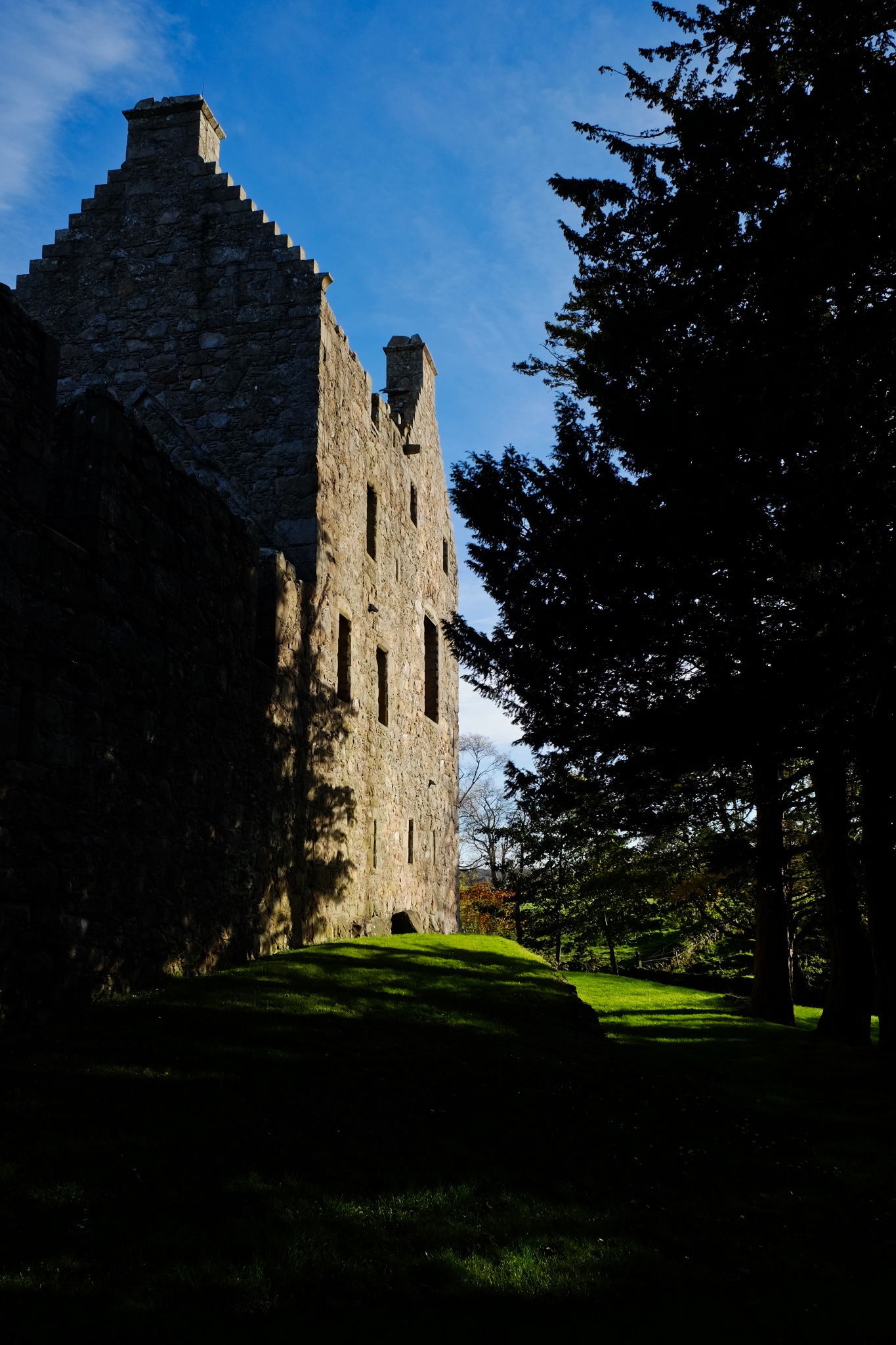 Castles and castle ruins everywhere in Aberdeenshire.
Castles and castle ruins everywhere in Aberdeenshire.
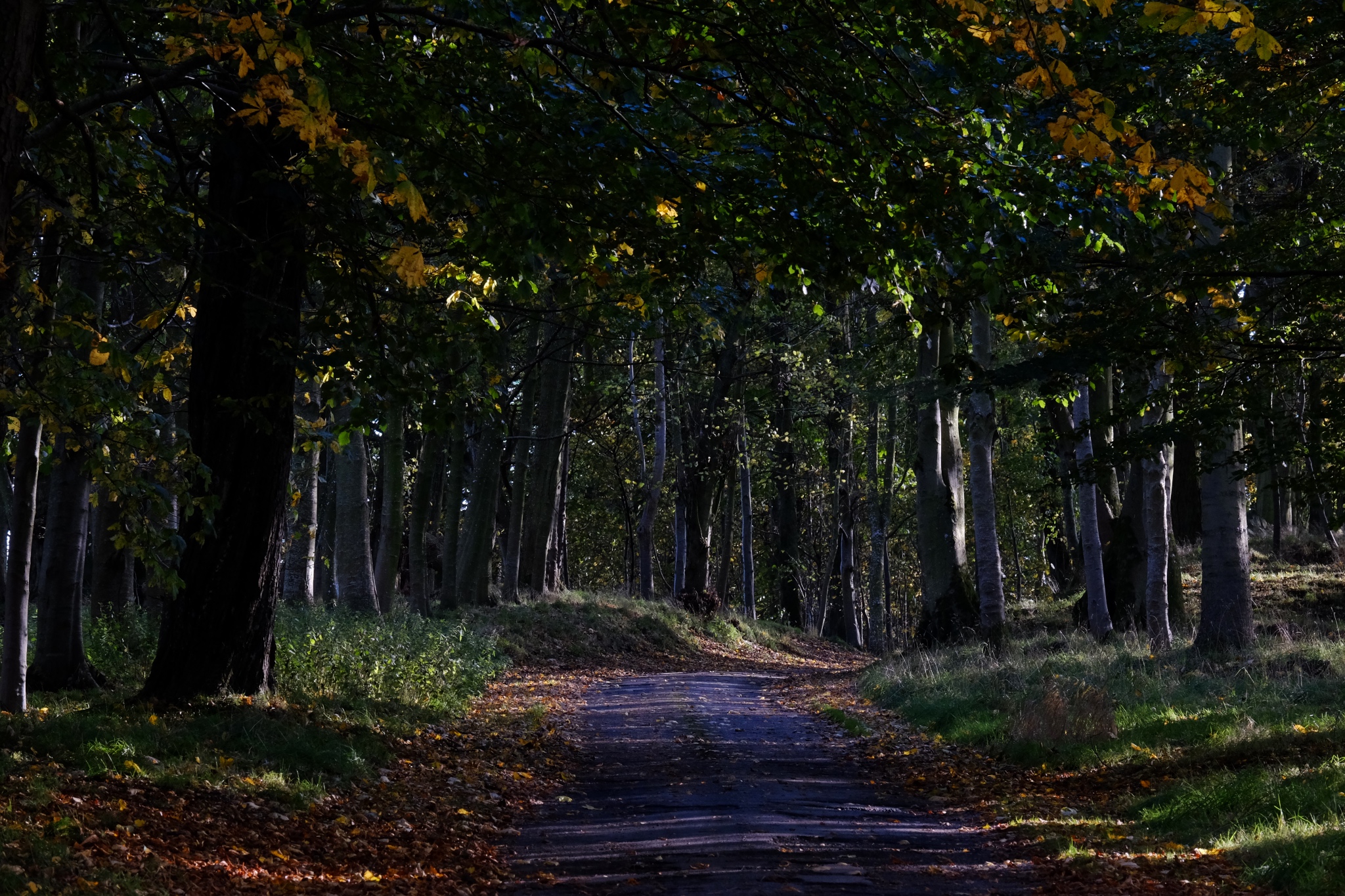 The Aberdeenshire roads would alternately suddenly diving into the deep shade of small forests . . .
The Aberdeenshire roads would alternately suddenly diving into the deep shade of small forests . . .
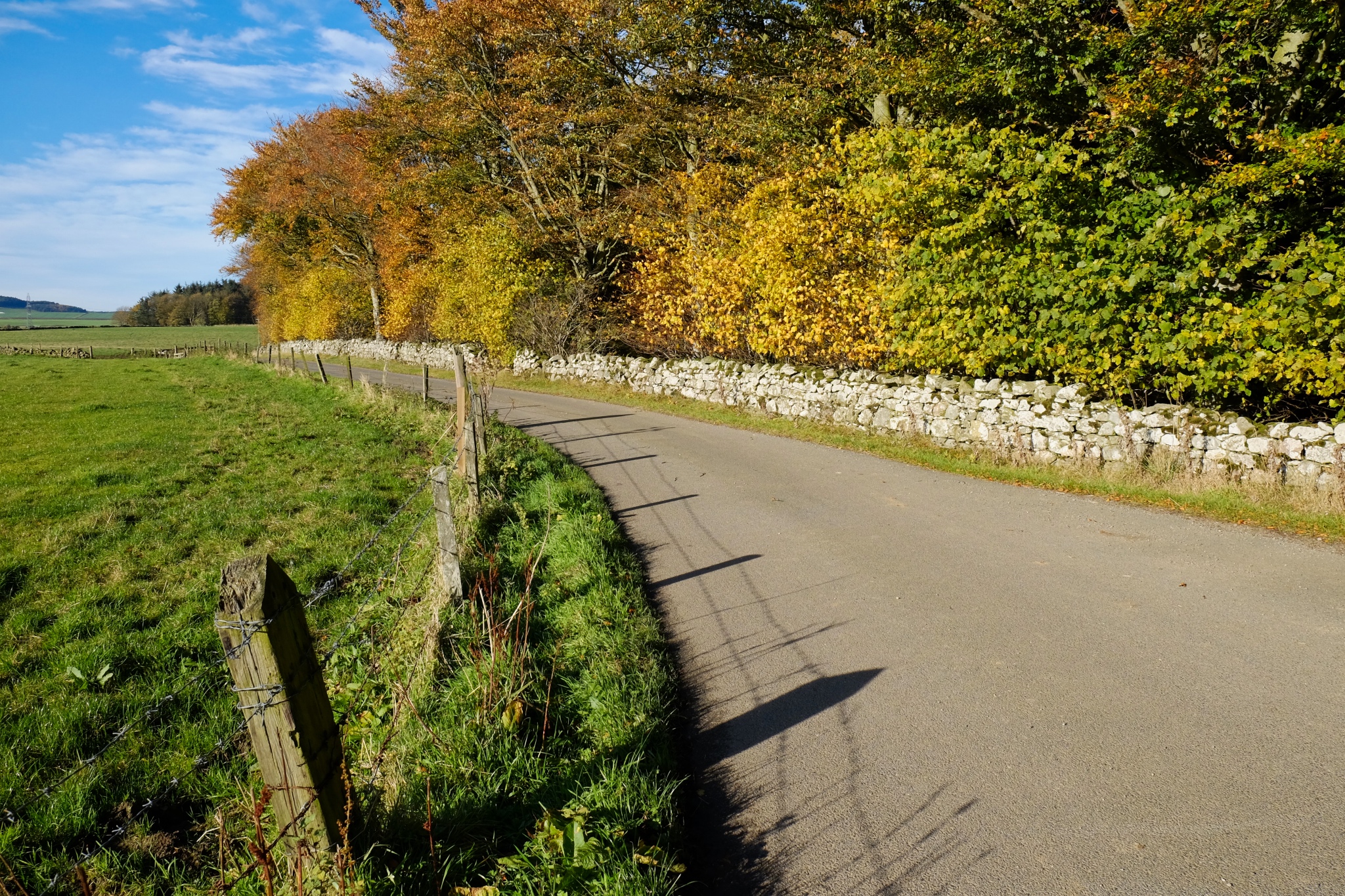 . . . and back out onto the bright, stone wall lined country roads.
. . . and back out onto the bright, stone wall lined country roads.
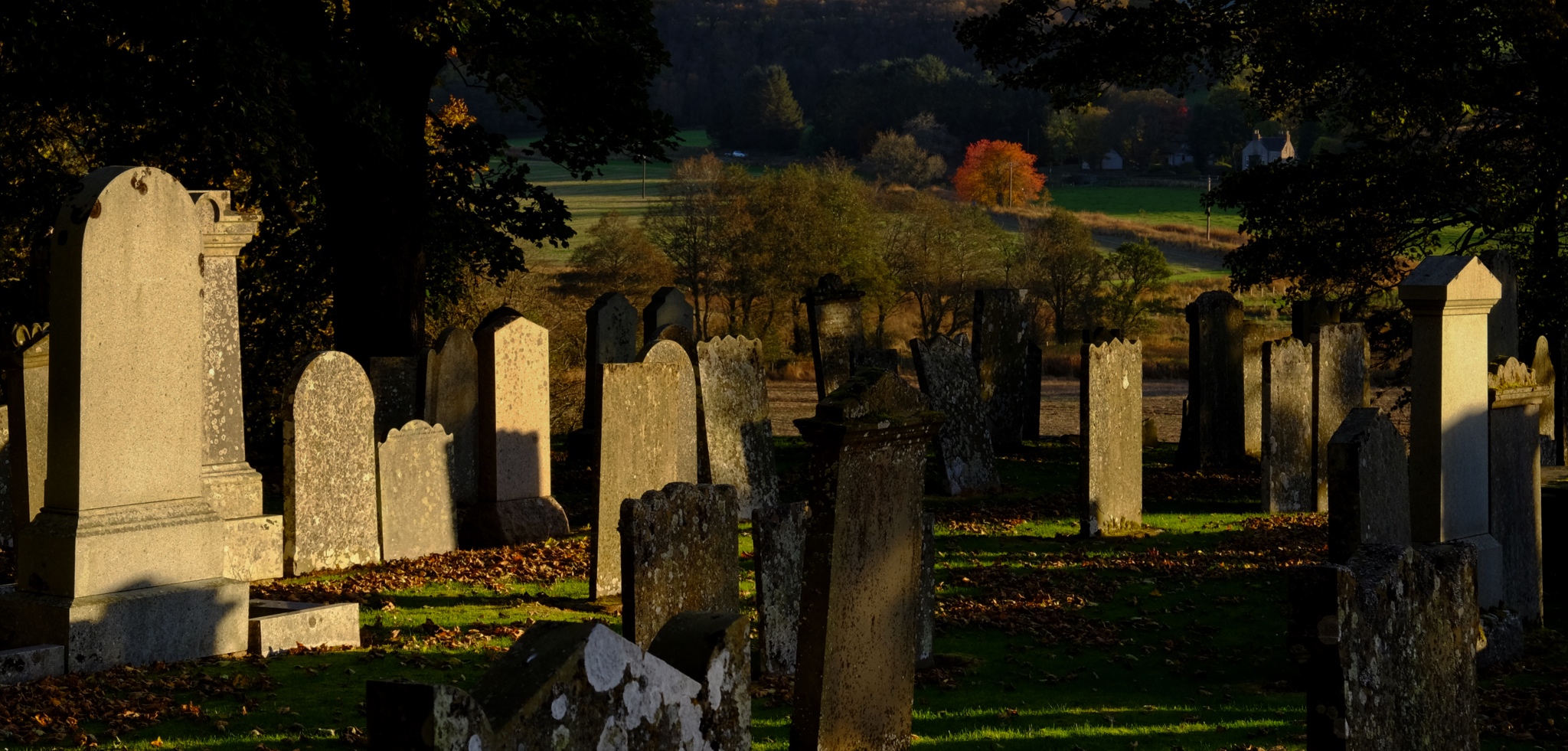 We were always up for a quick stop at an old country cemetery.
We were always up for a quick stop at an old country cemetery.
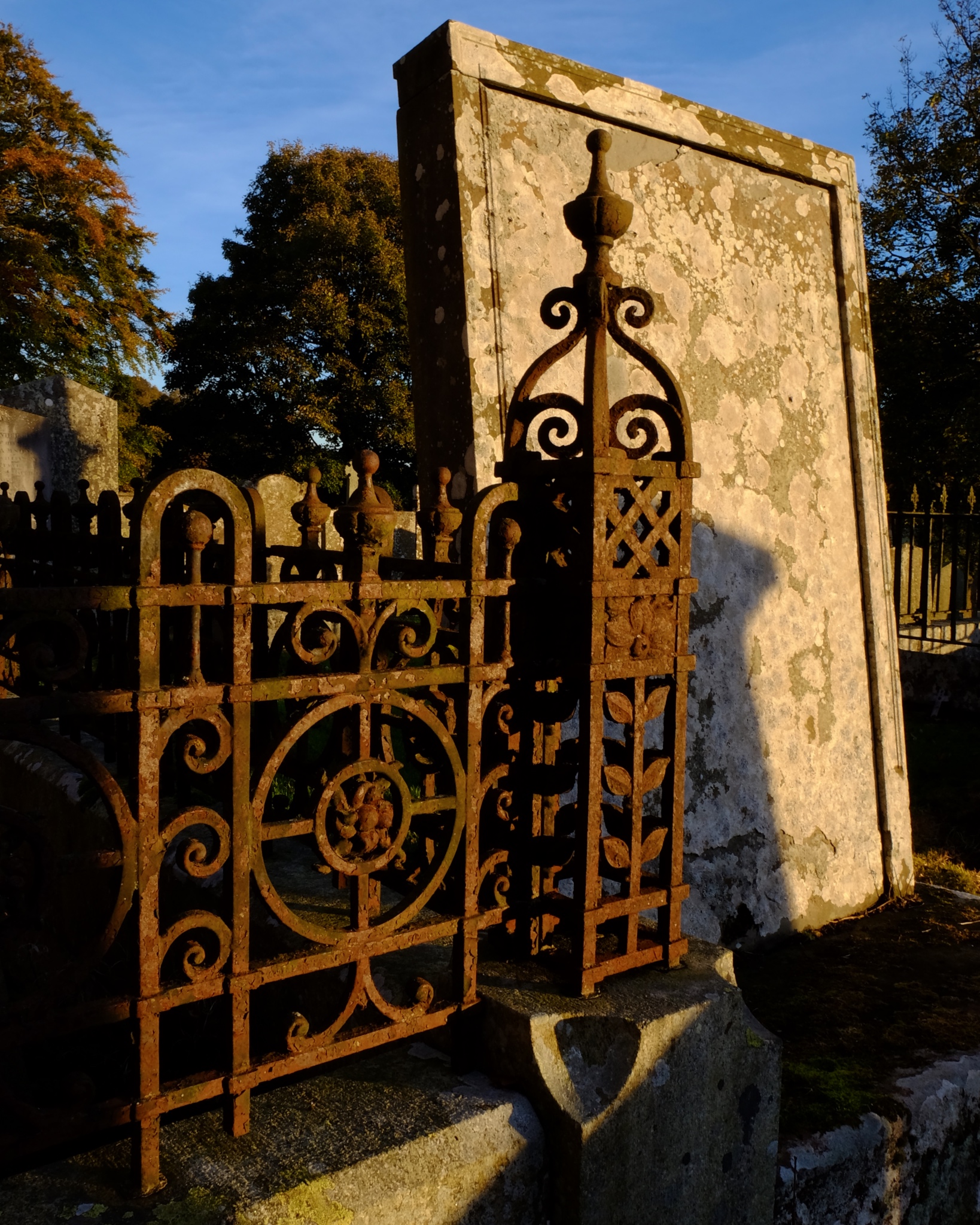 There is so much to see in the old cemeteries: colors, textures, old surfaces . . . . and . . . .
There is so much to see in the old cemeteries: colors, textures, old surfaces . . . . and . . . .
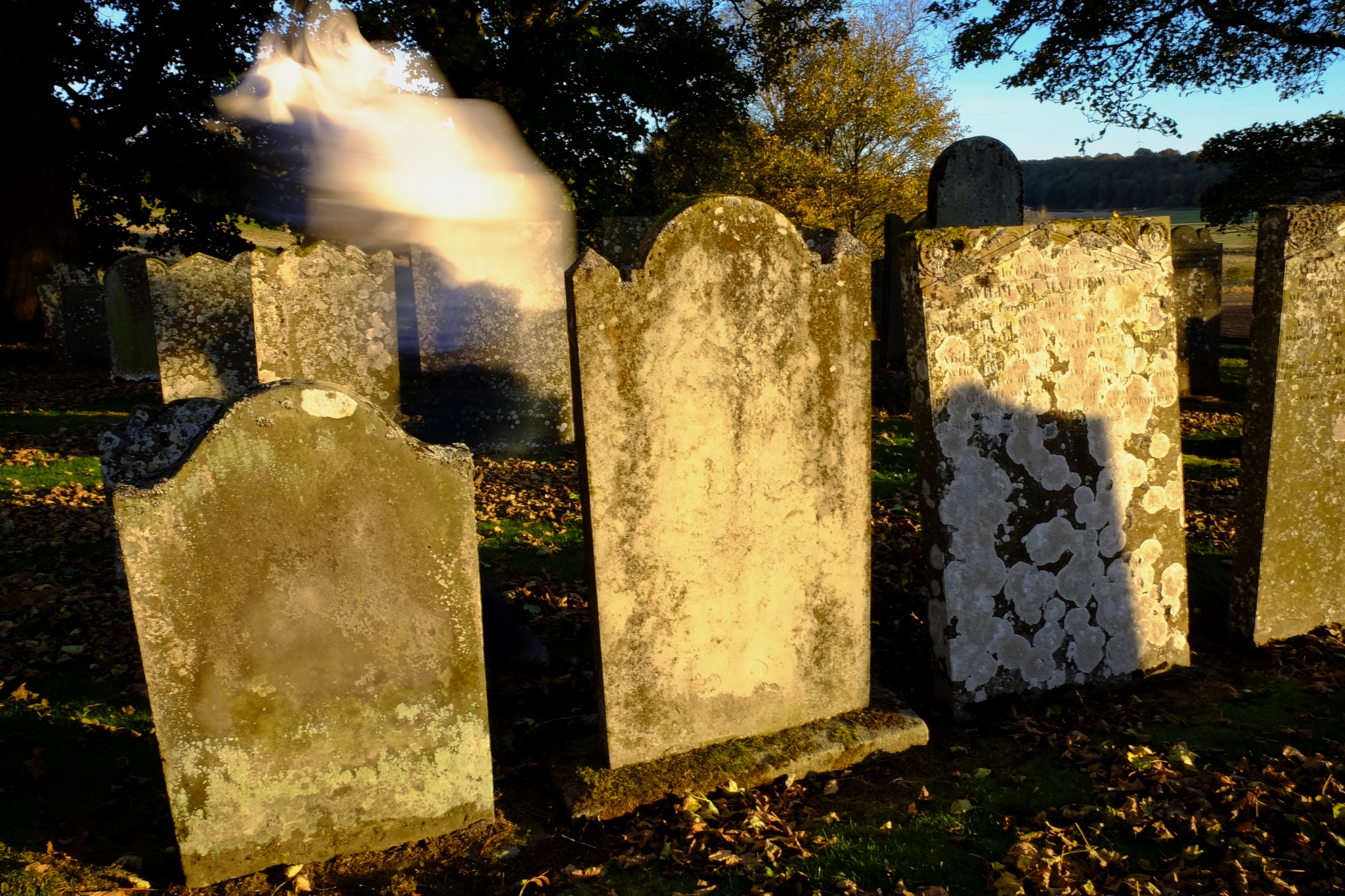 . . . and the occasional Class III freefloating spirit vapour.
. . . and the occasional Class III freefloating spirit vapour.
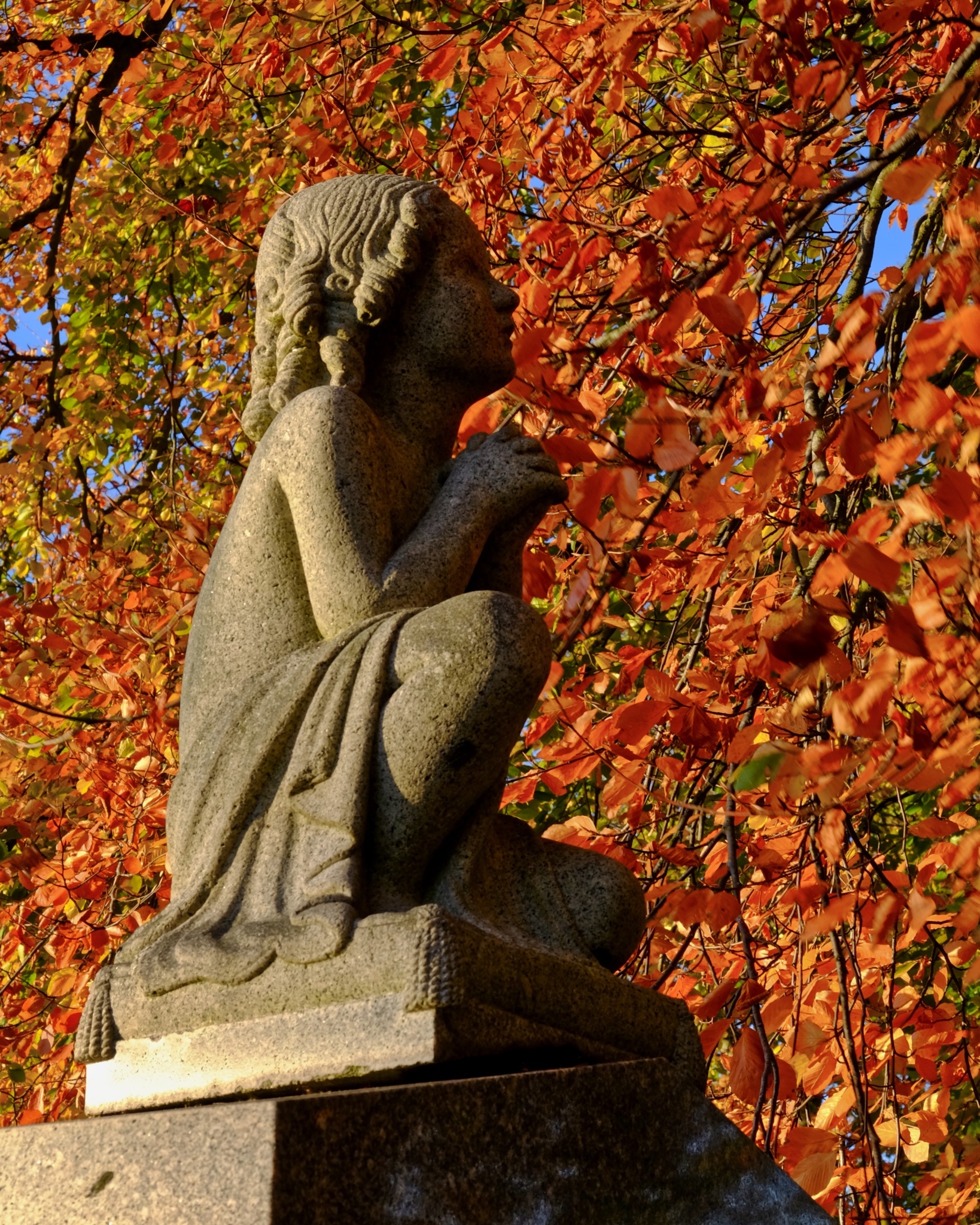 Autumn in a Scottish cemetery can be very beautiful.
Autumn in a Scottish cemetery can be very beautiful.
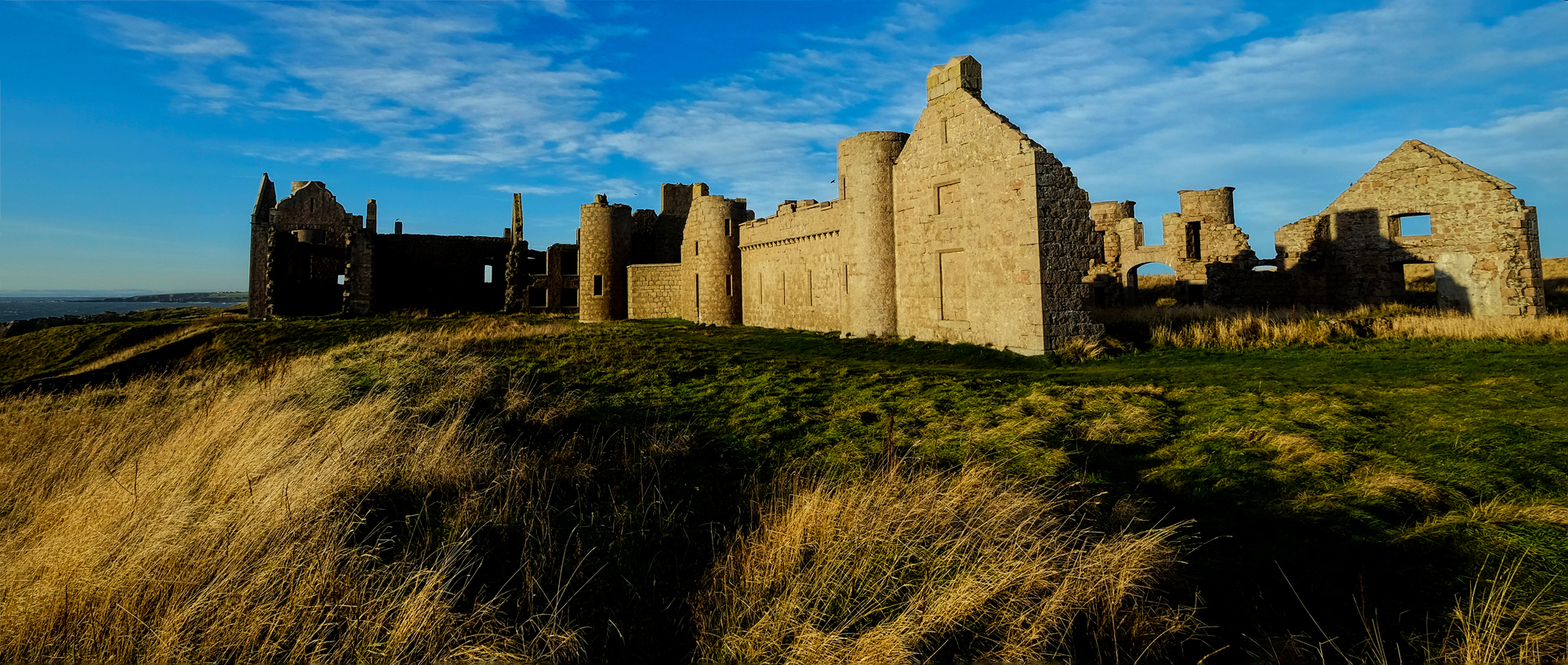 No trip to Aberdeenshire would be complete without a stop at New Slaines Castle . . . a photographer's paradise.
No trip to Aberdeenshire would be complete without a stop at New Slaines Castle . . . a photographer's paradise.
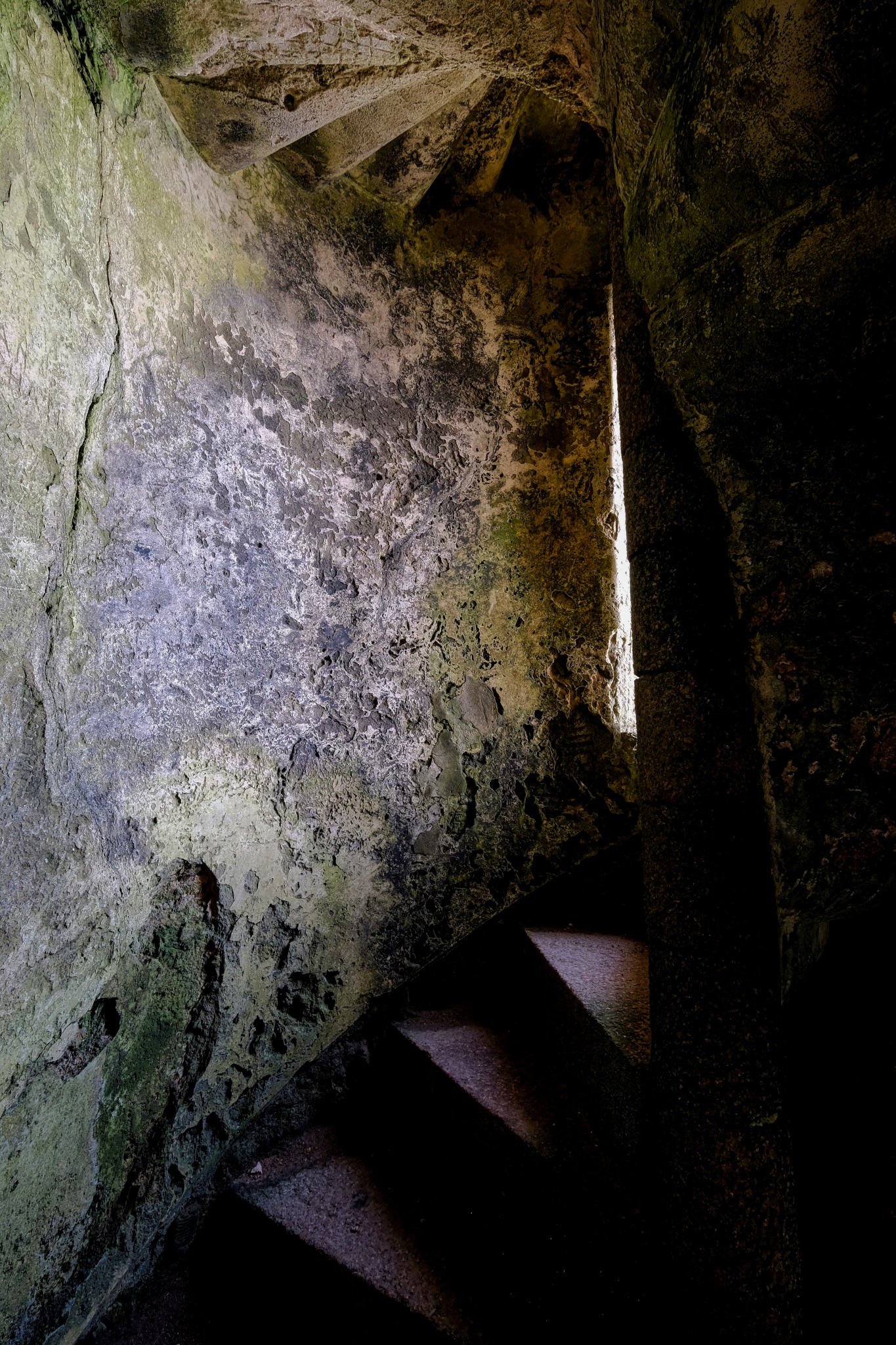 A stairwell in the ruins of New Slains Castle.
A stairwell in the ruins of New Slains Castle.
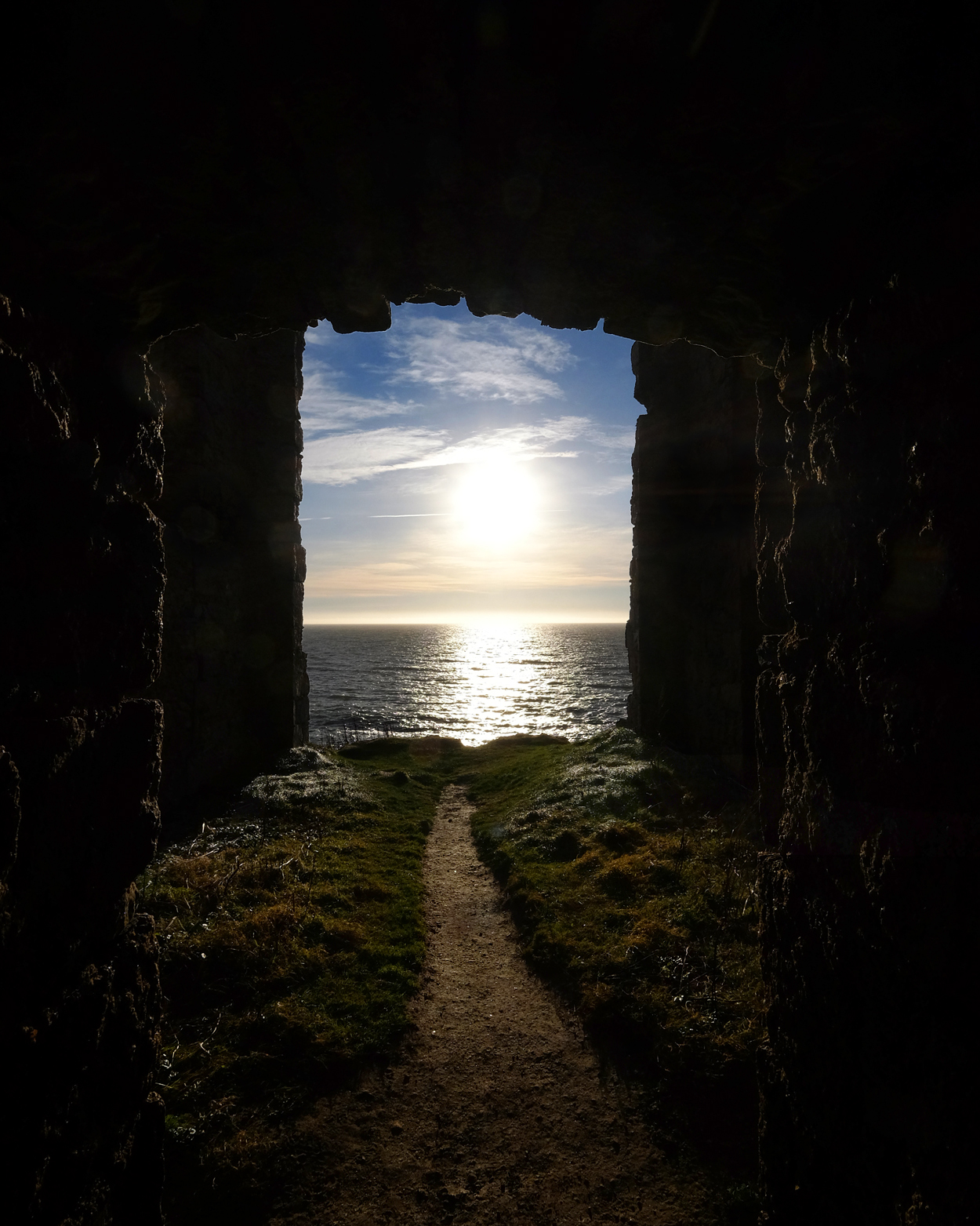 Some of the views from inside the castle ruins onto the North Sea were stunning.
Some of the views from inside the castle ruins onto the North Sea were stunning.
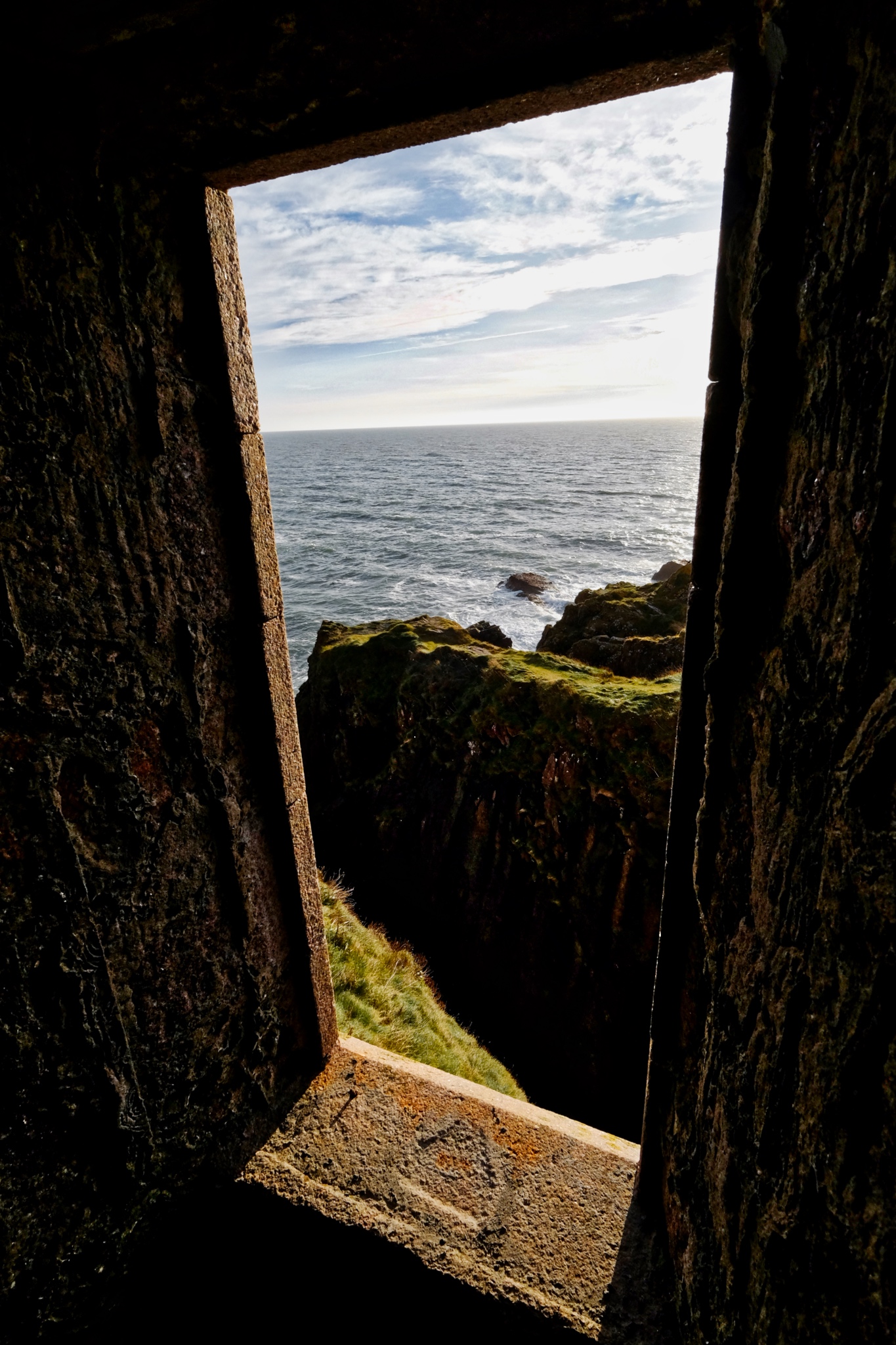 North Sea view from New Slaines Castle, Aberdeenshire, Scotland.
North Sea view from New Slaines Castle, Aberdeenshire, Scotland.
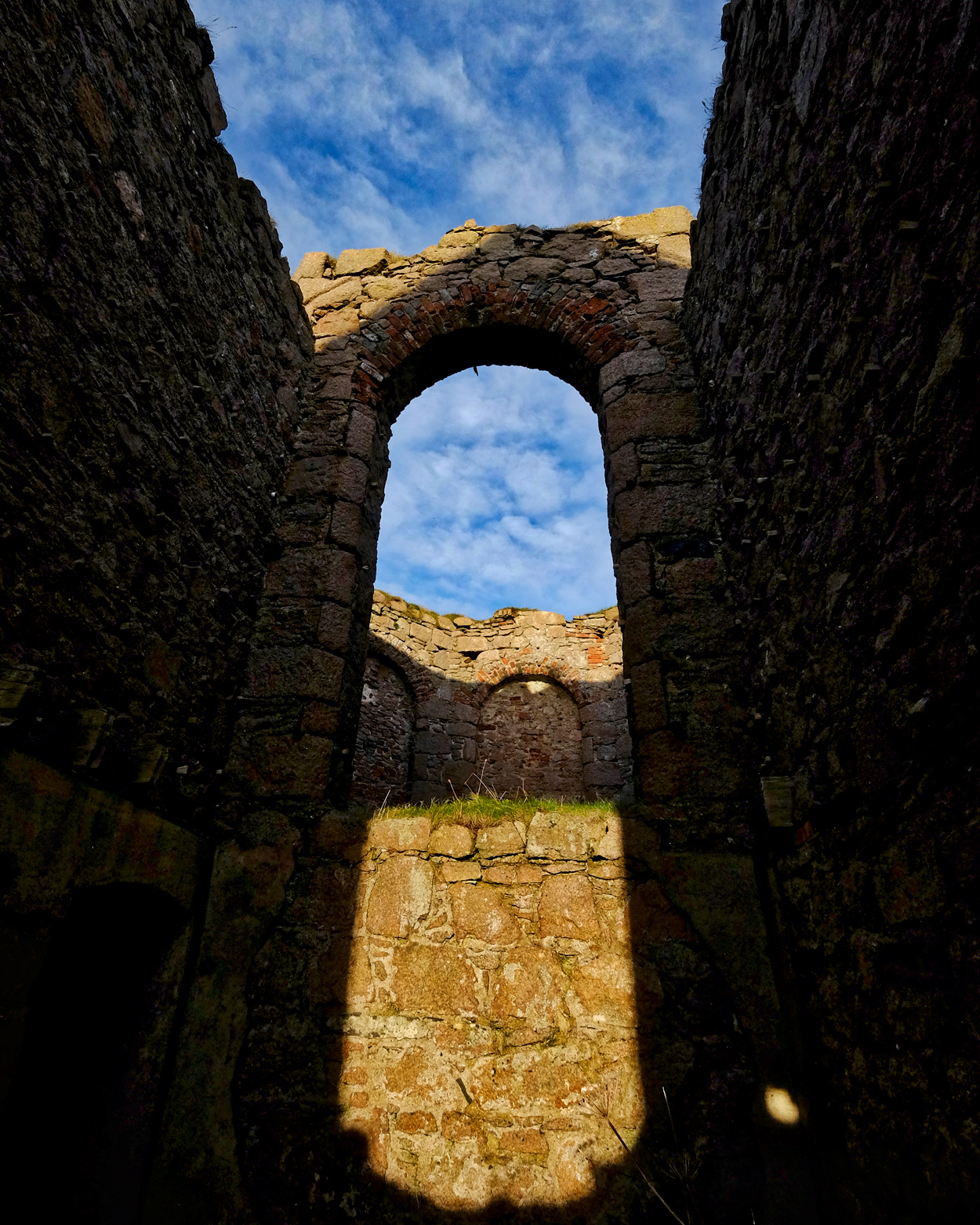 John and I spent several hours wandering around inside the ruins of New Slaines Castle enjoying the play of light and shadow on the deserted halls and rooms . . .
John and I spent several hours wandering around inside the ruins of New Slaines Castle enjoying the play of light and shadow on the deserted halls and rooms . . . 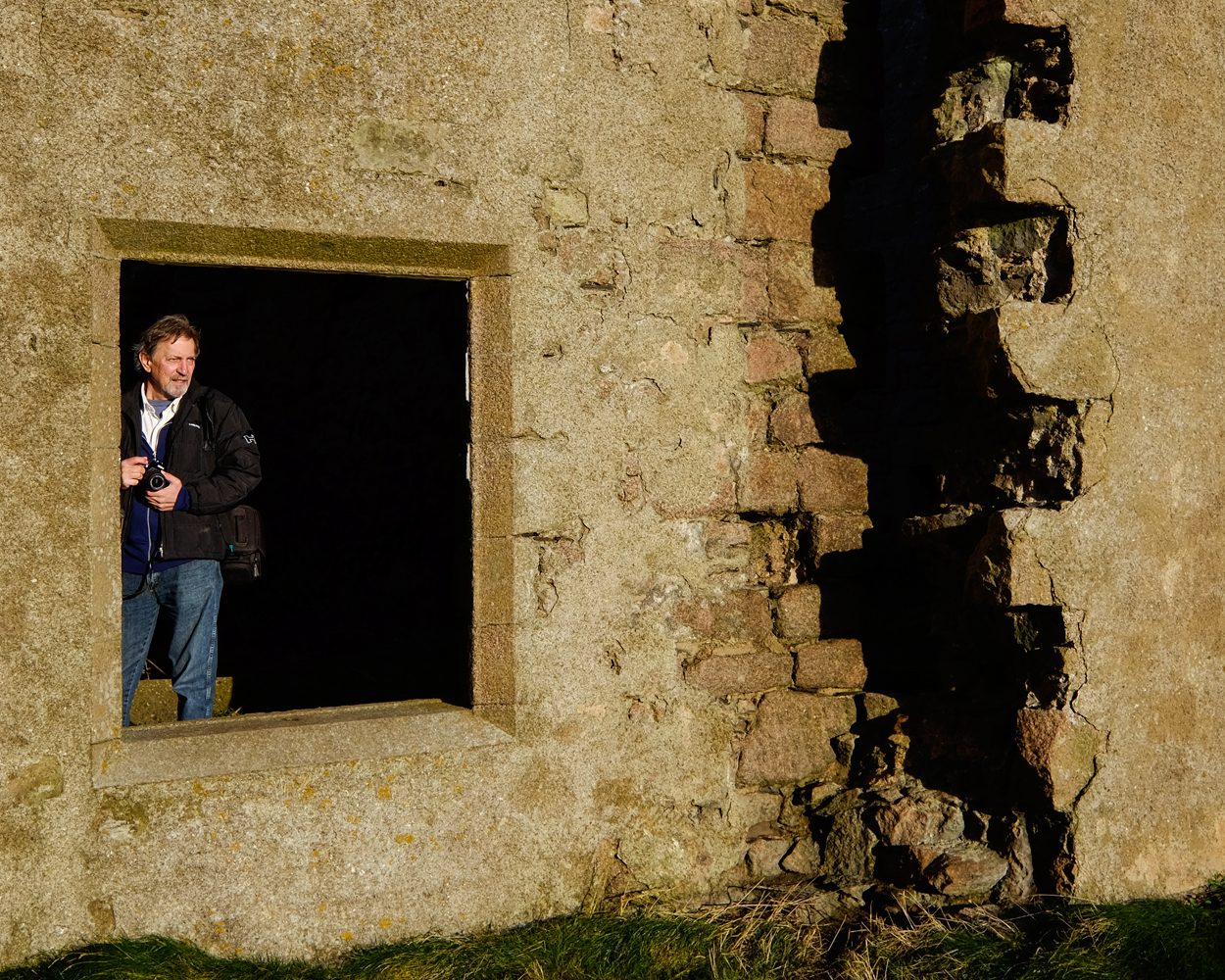 . . . as well as making portraits of each other among the ruins.
. . . as well as making portraits of each other among the ruins.
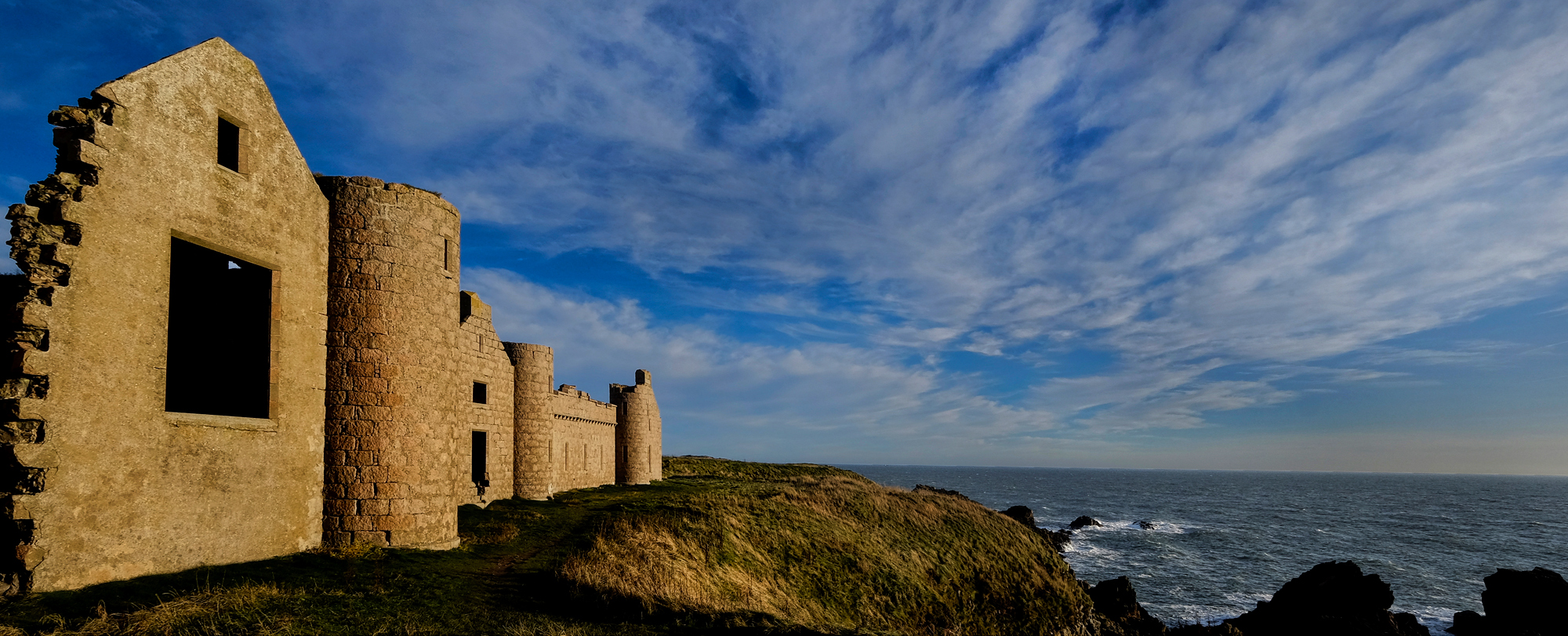 The castle on the North Sea cliffs, New Slaines.
The castle on the North Sea cliffs, New Slaines.
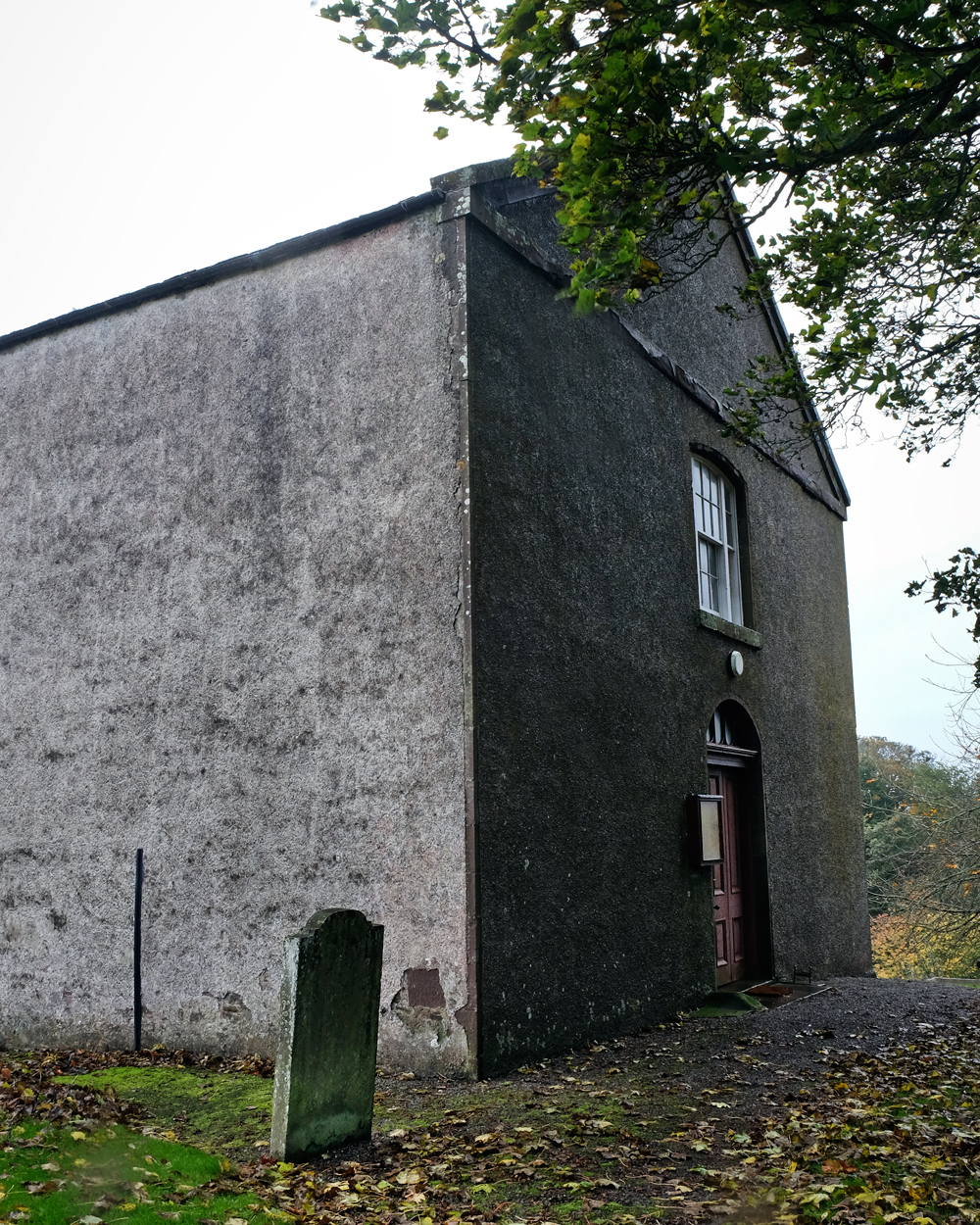 The Benholme Kirke, built on the site of a 9th century hermitage.
The Benholme Kirke, built on the site of a 9th century hermitage.
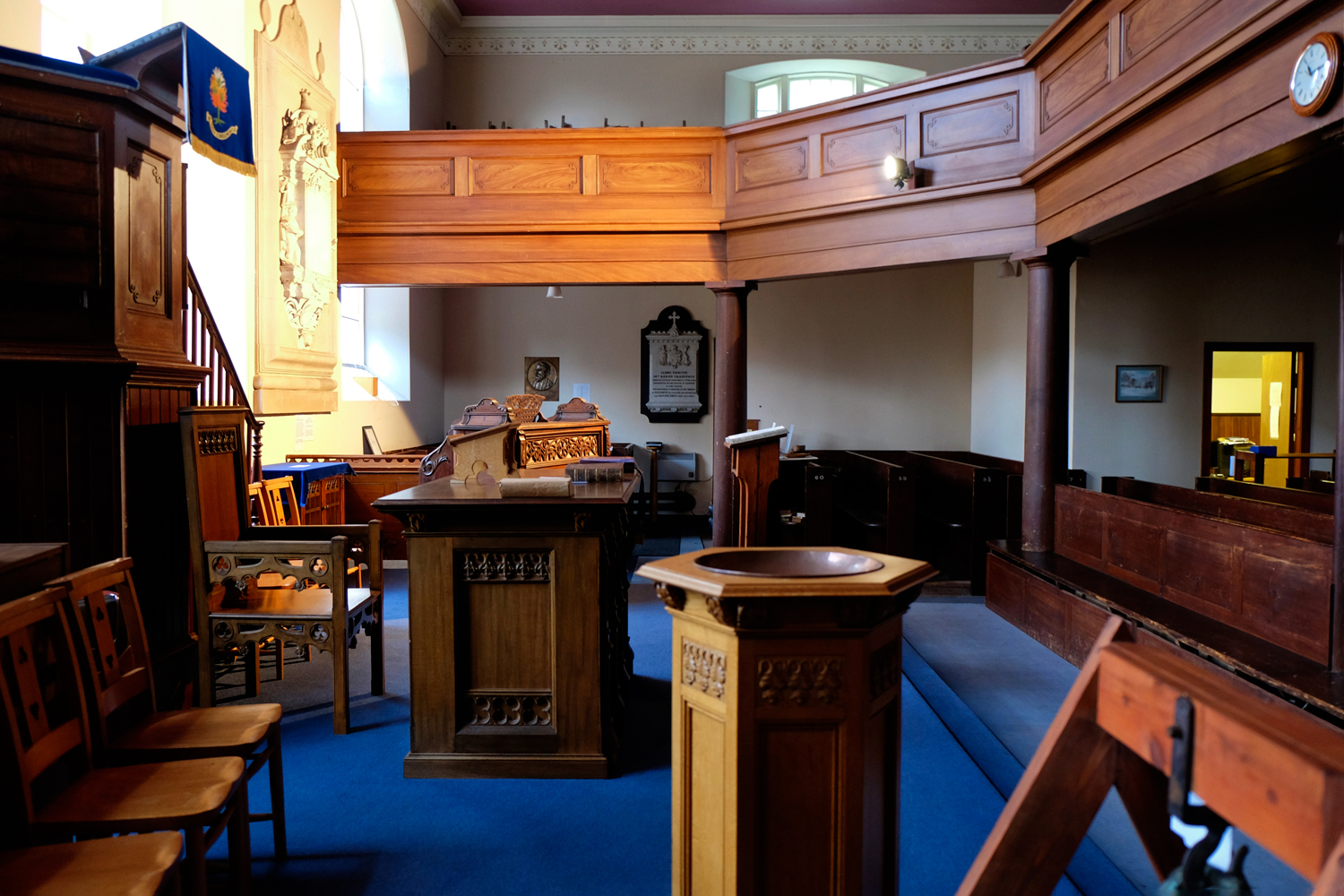 Although we interrupted the Benholm Kirke bookkeeper . . . but he obliged with a tour and short history of this interesting place.
Although we interrupted the Benholm Kirke bookkeeper . . . but he obliged with a tour and short history of this interesting place.
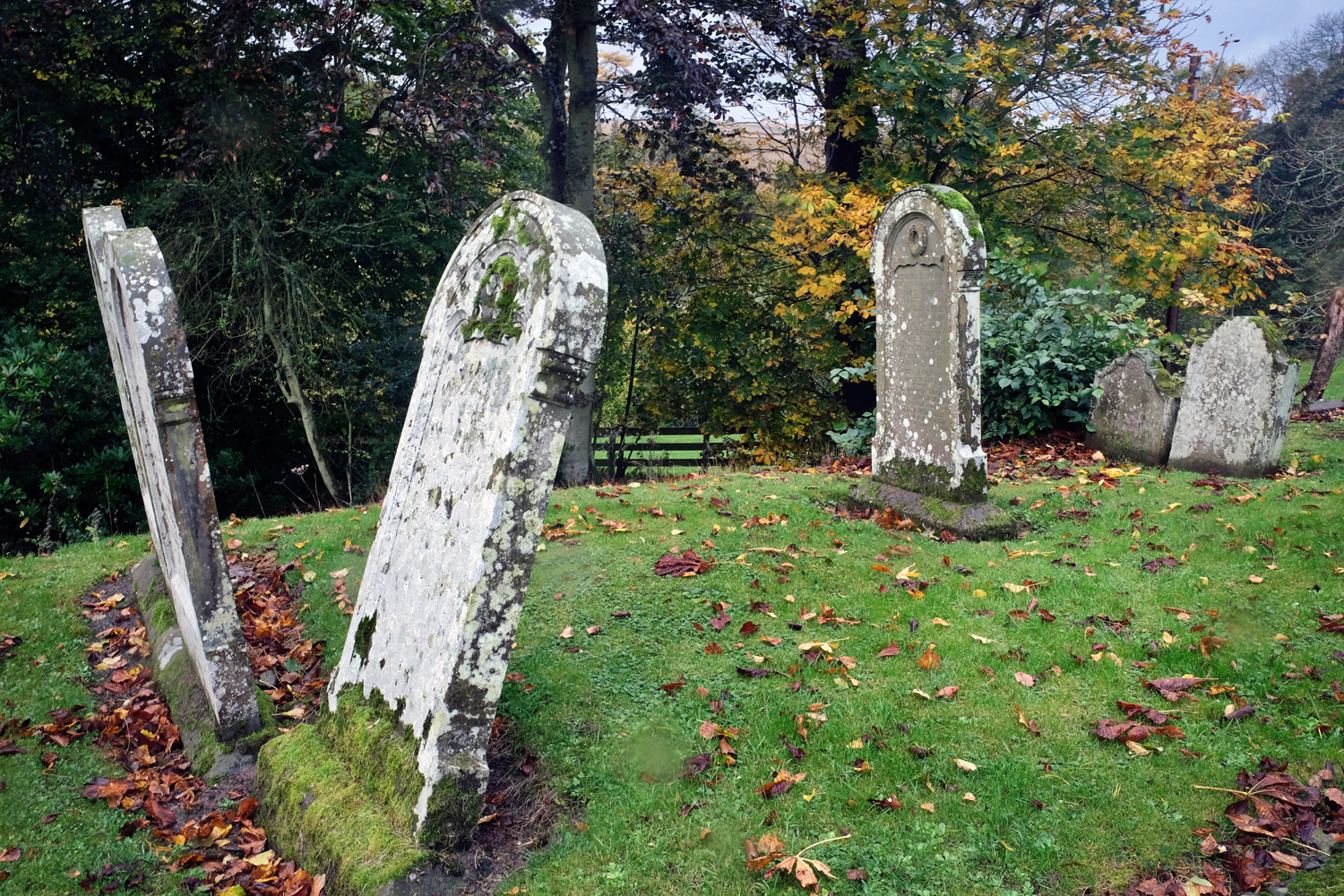 Benholm Kirke had a fine old 'kirkegaard' as well.
Benholm Kirke had a fine old 'kirkegaard' as well.
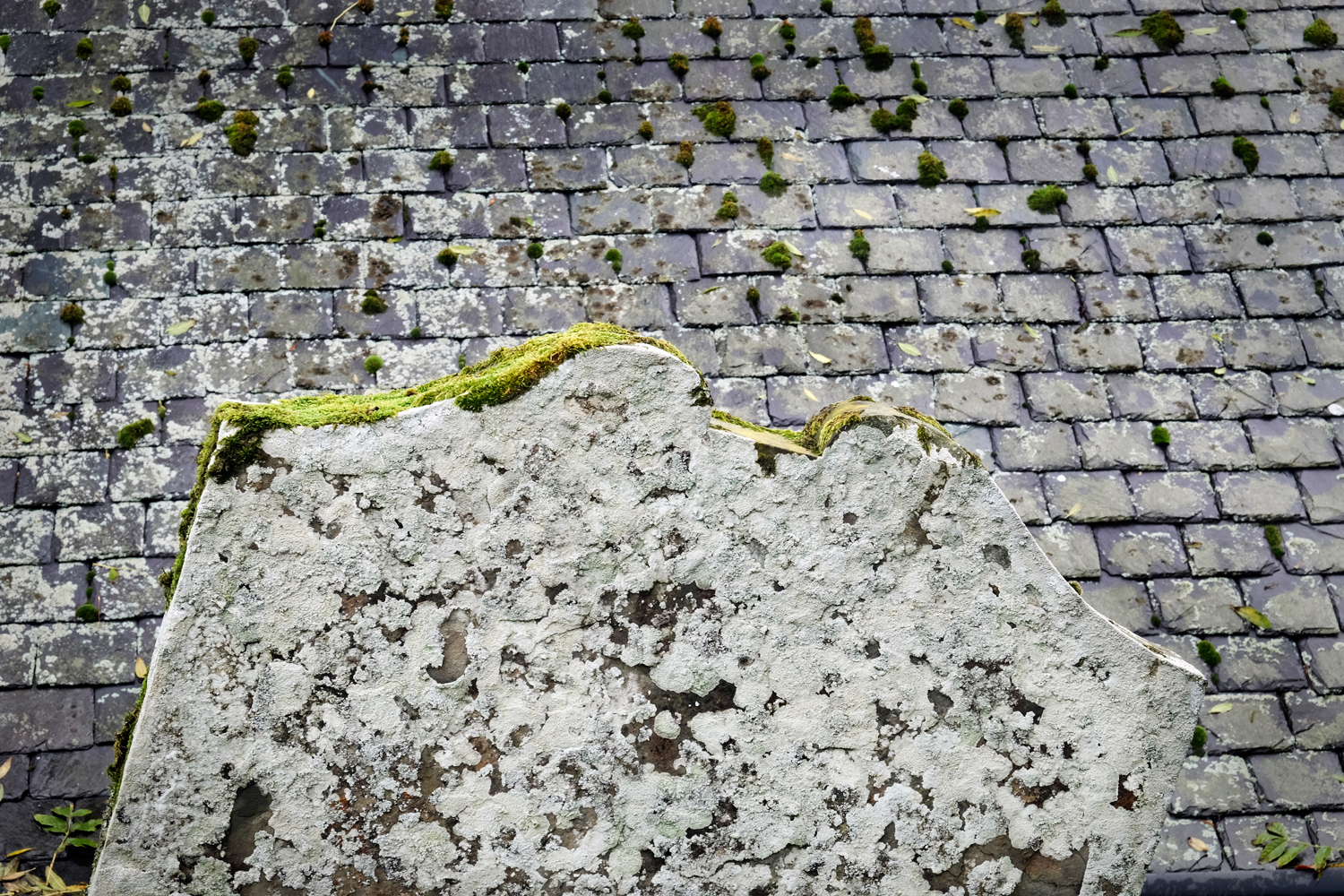 Moss and lichen-covered grave stone and ancient cottage slate roof . . .
Moss and lichen-covered grave stone and ancient cottage slate roof . . .
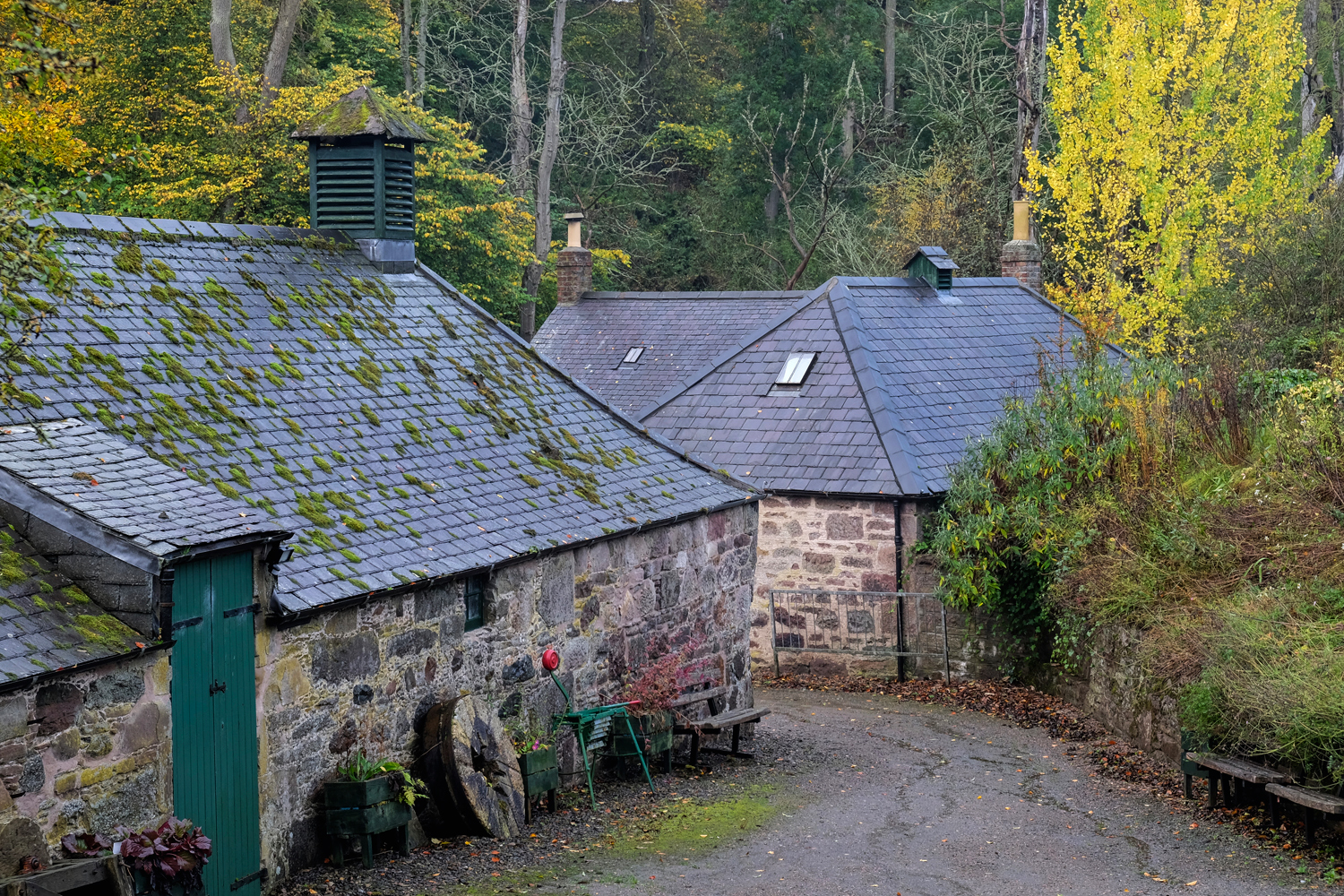 We sometimes consulted the GPS as to any 'points of interest' . . . and discovered this old mill.
We sometimes consulted the GPS as to any 'points of interest' . . . and discovered this old mill.
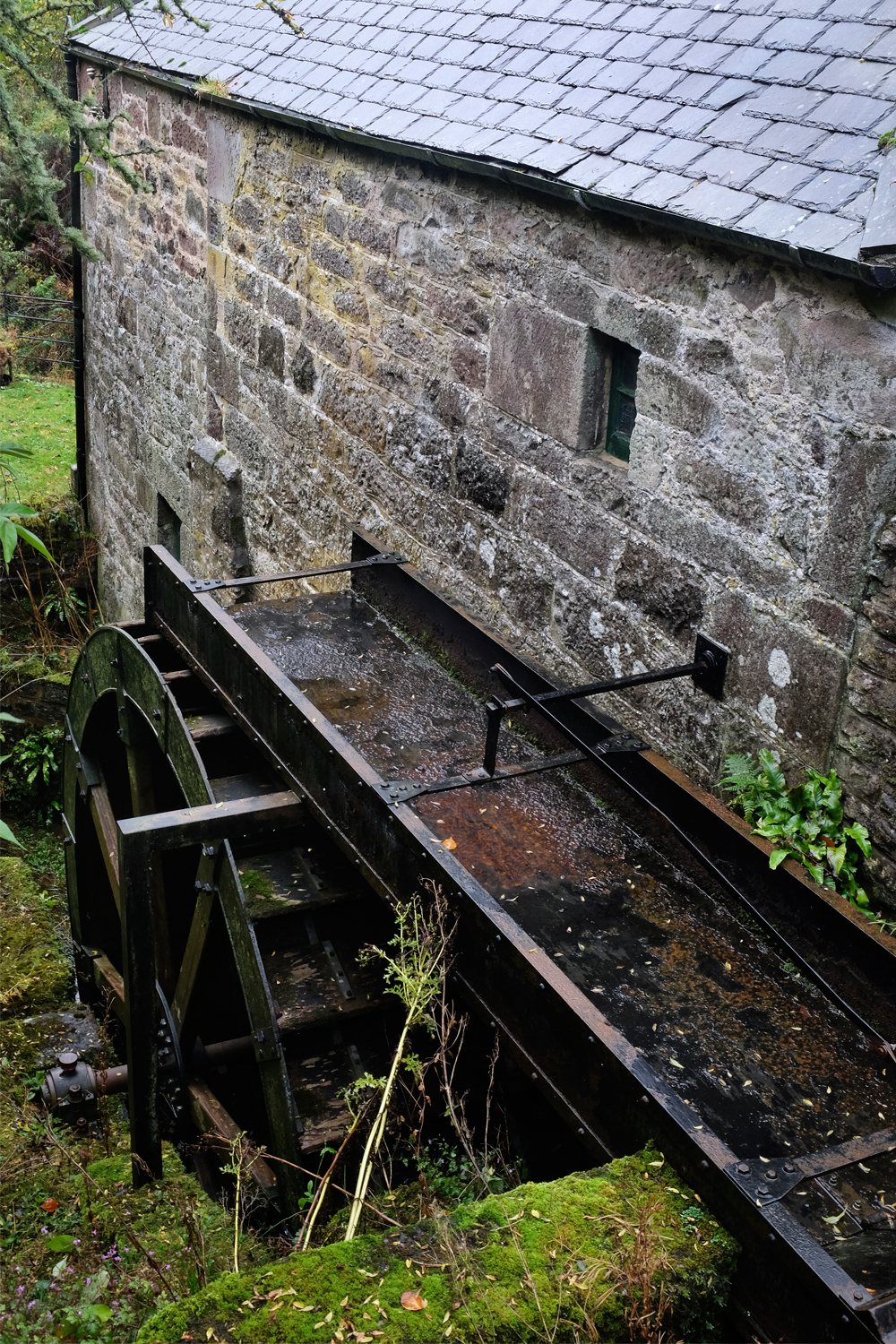 The sluice and water wheel were still there and still intact.
The sluice and water wheel were still there and still intact.
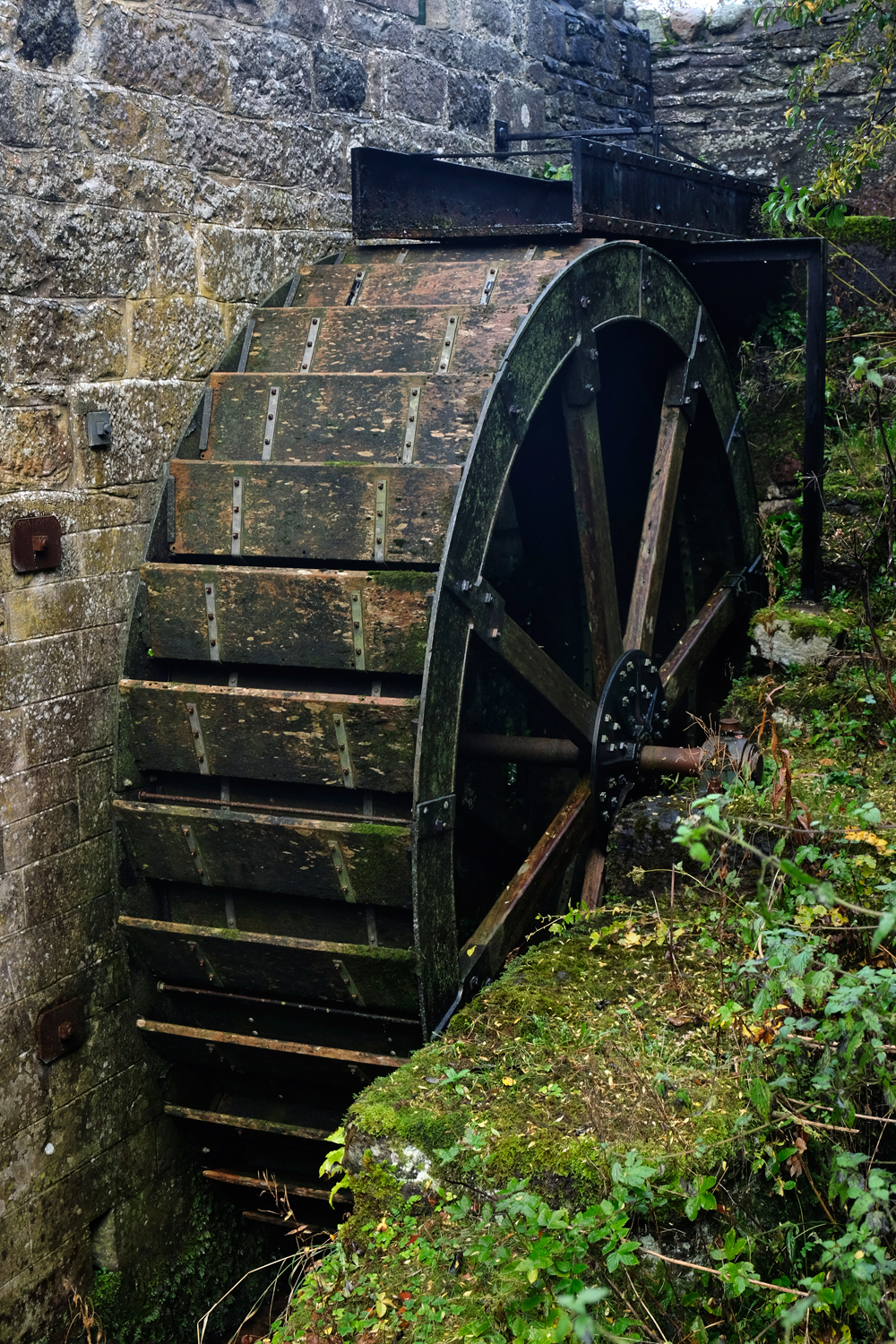 Down by the Old Mill Stream . . . A photographer's dream!
Down by the Old Mill Stream . . . A photographer's dream!
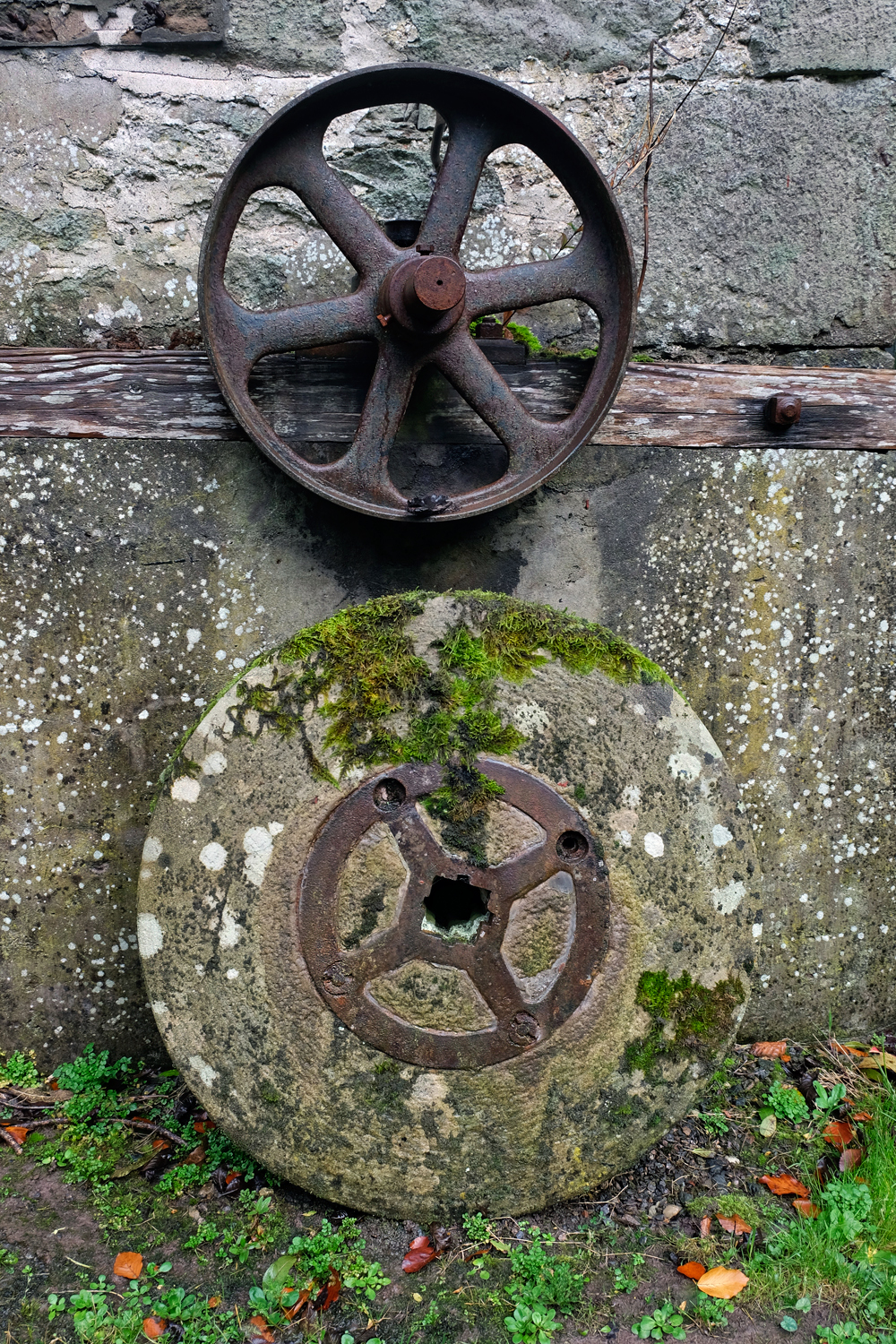 The opportunities for still life studies of mill paraphernalia was incredible. I enter only a few of the many beautiful photographs I took here.
The opportunities for still life studies of mill paraphernalia was incredible. I enter only a few of the many beautiful photographs I took here.
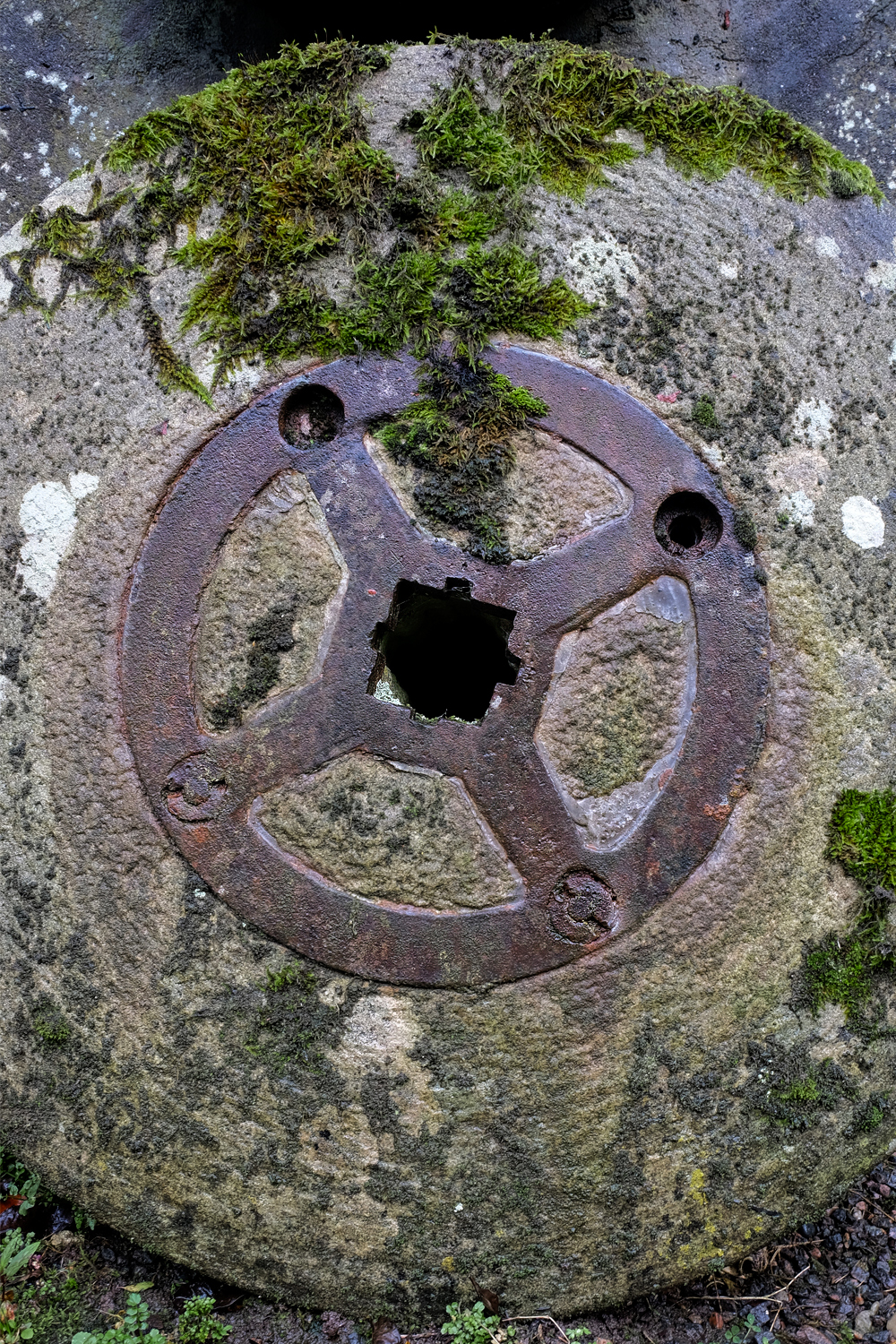 An old mill stone.
An old mill stone.
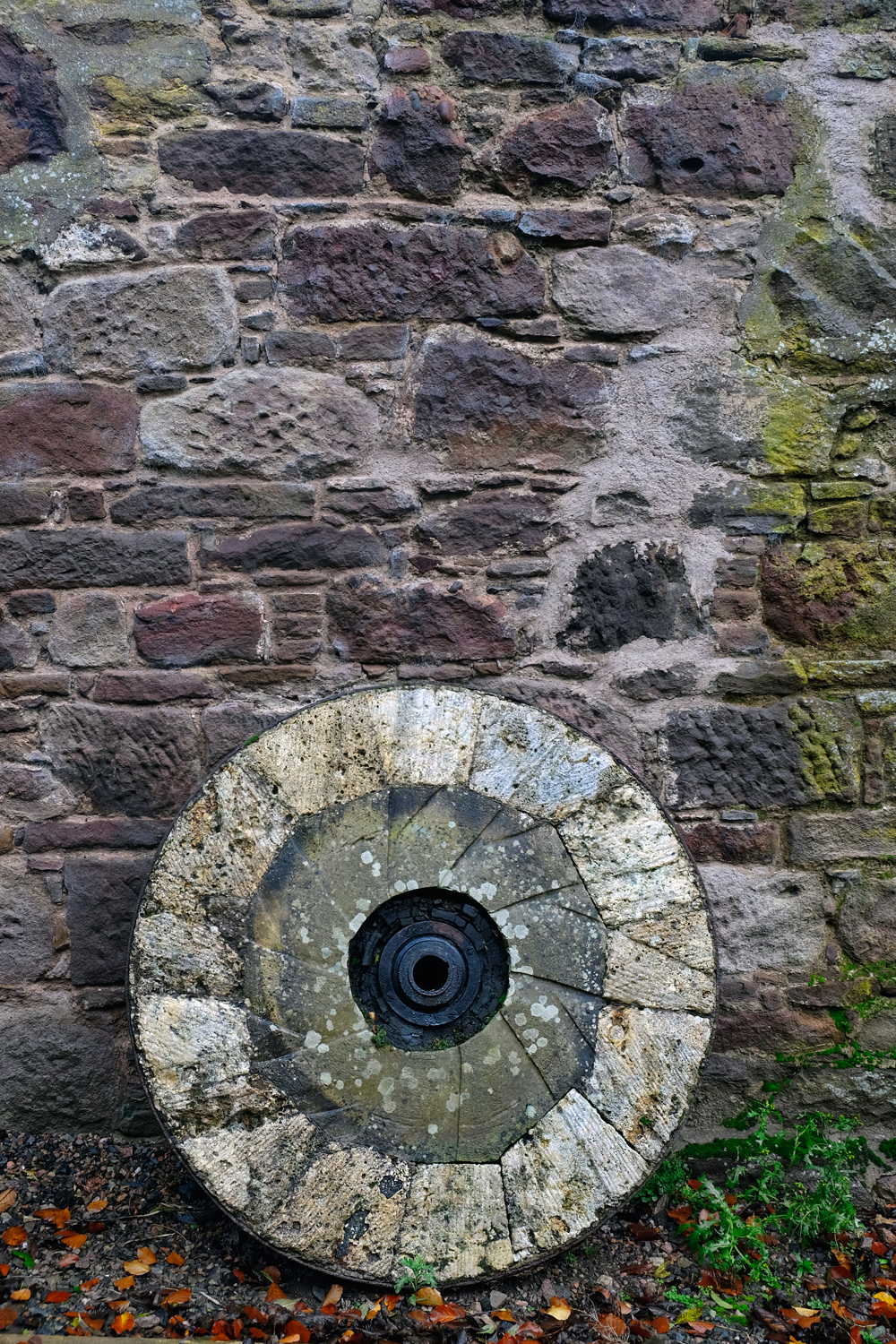 An old mill stone made of several stone segments.
An old mill stone made of several stone segments.
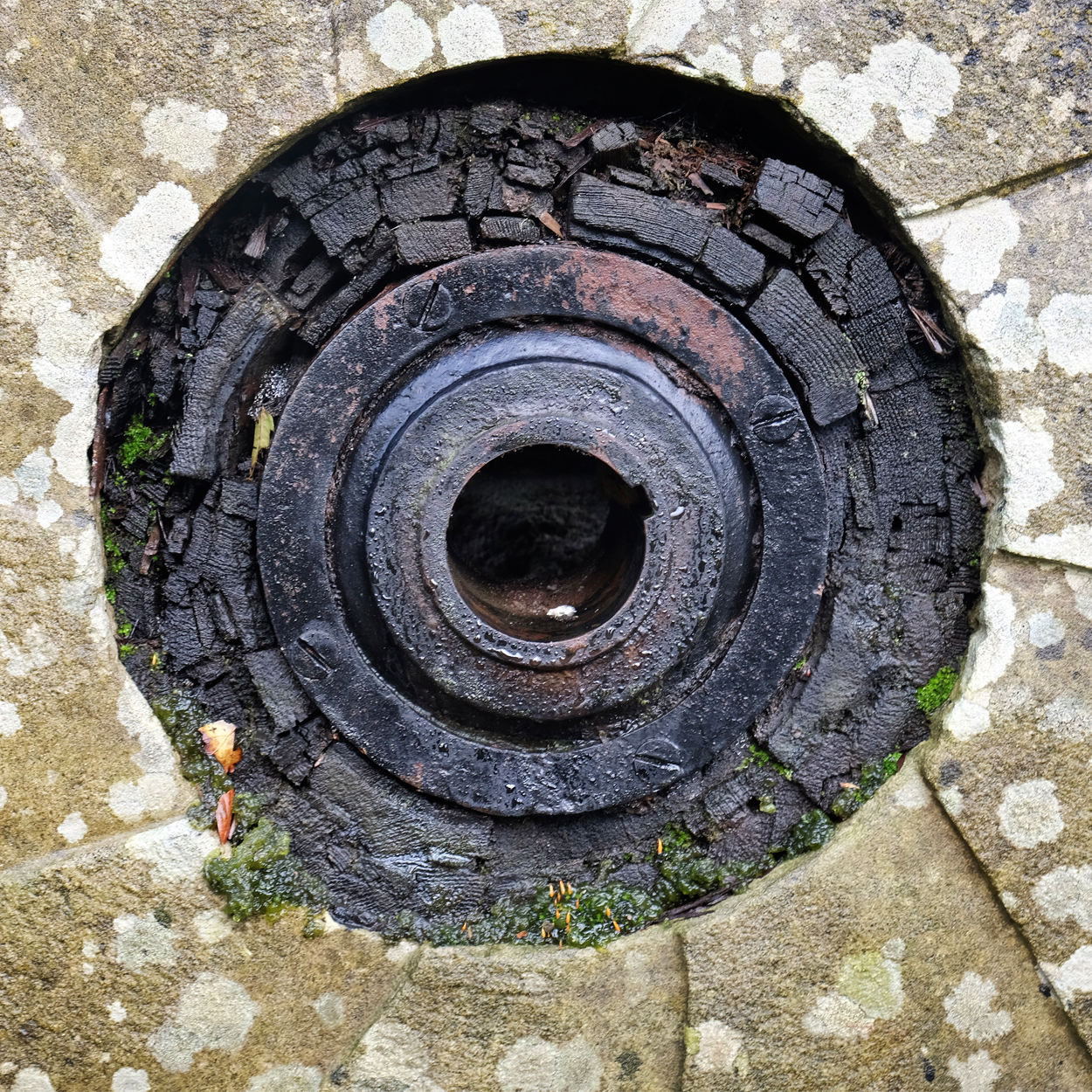 The wood-shimed center bearing of an old mill stone.
The wood-shimed center bearing of an old mill stone.
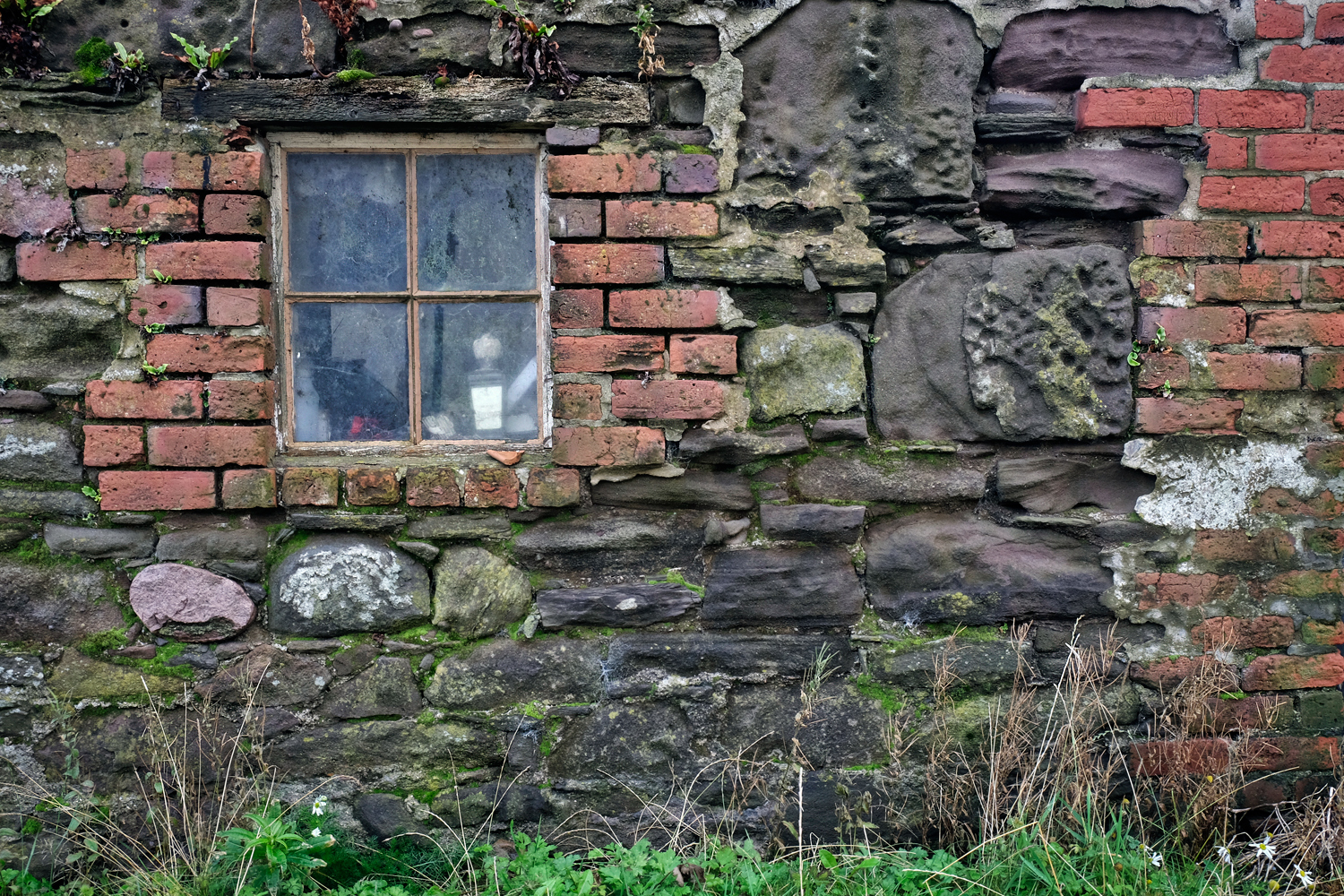 One morning we drove south on the old coastal road to the fishing village of Johnshaven.
One morning we drove south on the old coastal road to the fishing village of Johnshaven.
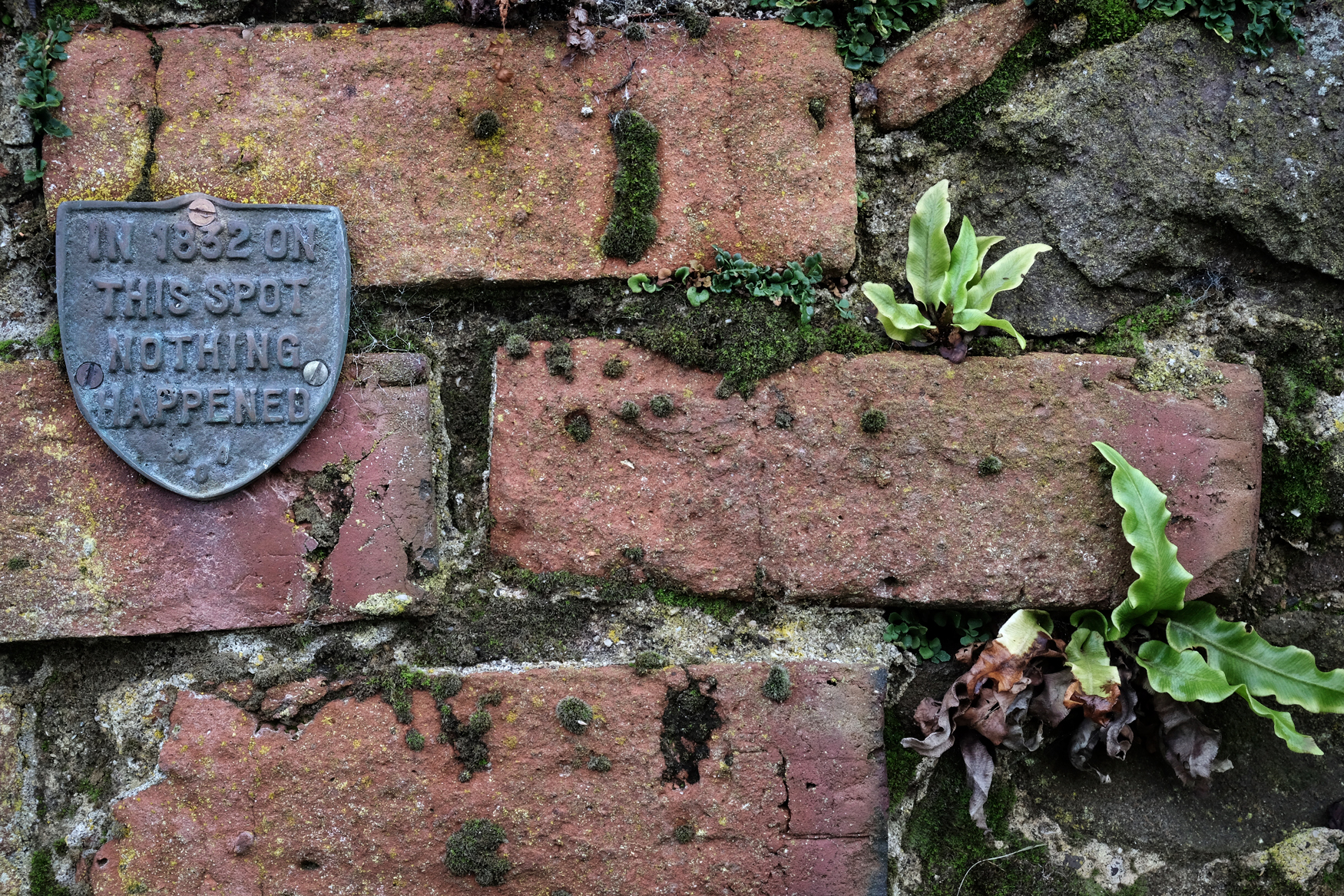 The Johnshaven townsfolk had quite the sense of humor!
The Johnshaven townsfolk had quite the sense of humor!
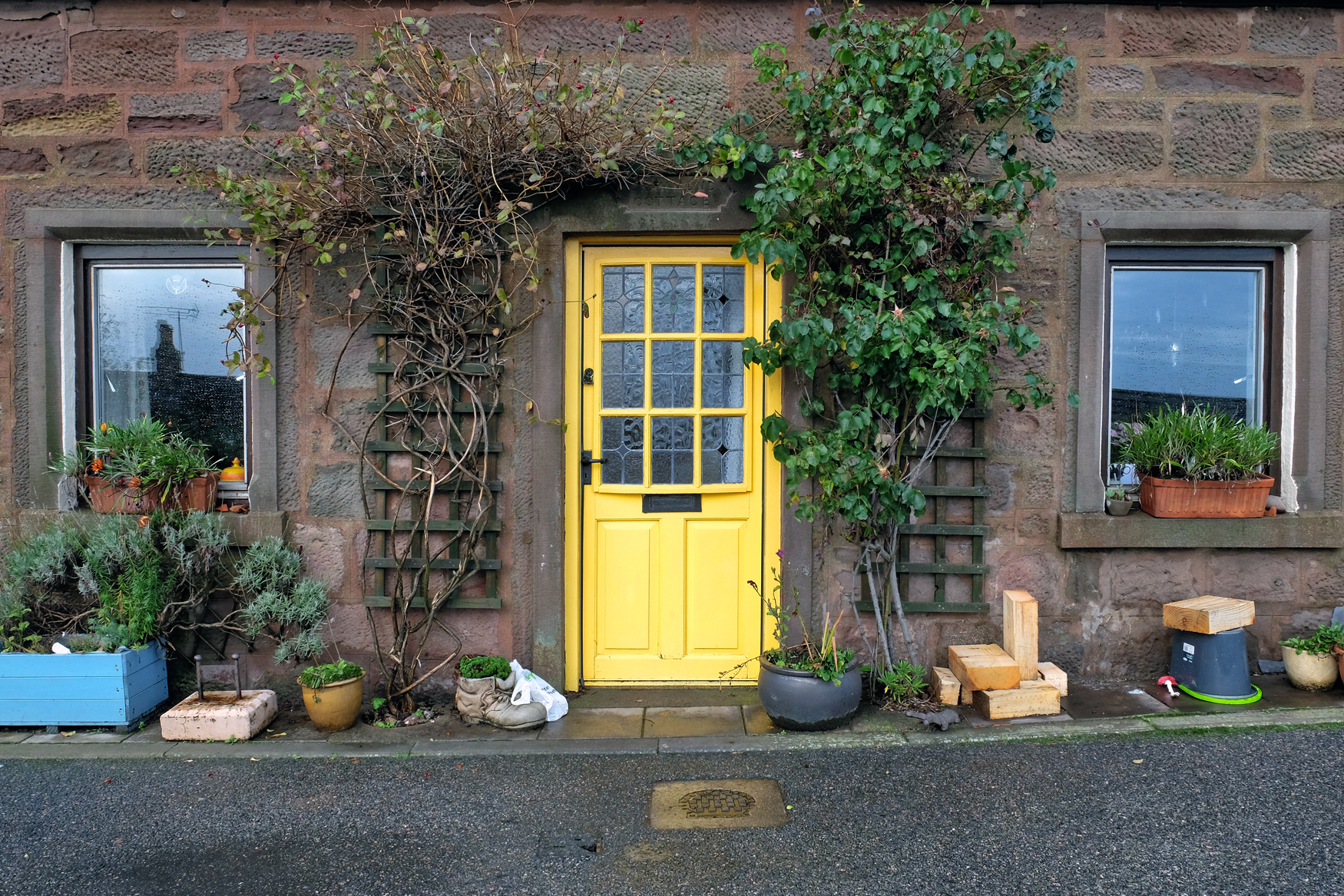 Johnshaven was a grey and austere village (like many Scottish villages) but with a splash of color here and there.
Johnshaven was a grey and austere village (like many Scottish villages) but with a splash of color here and there.
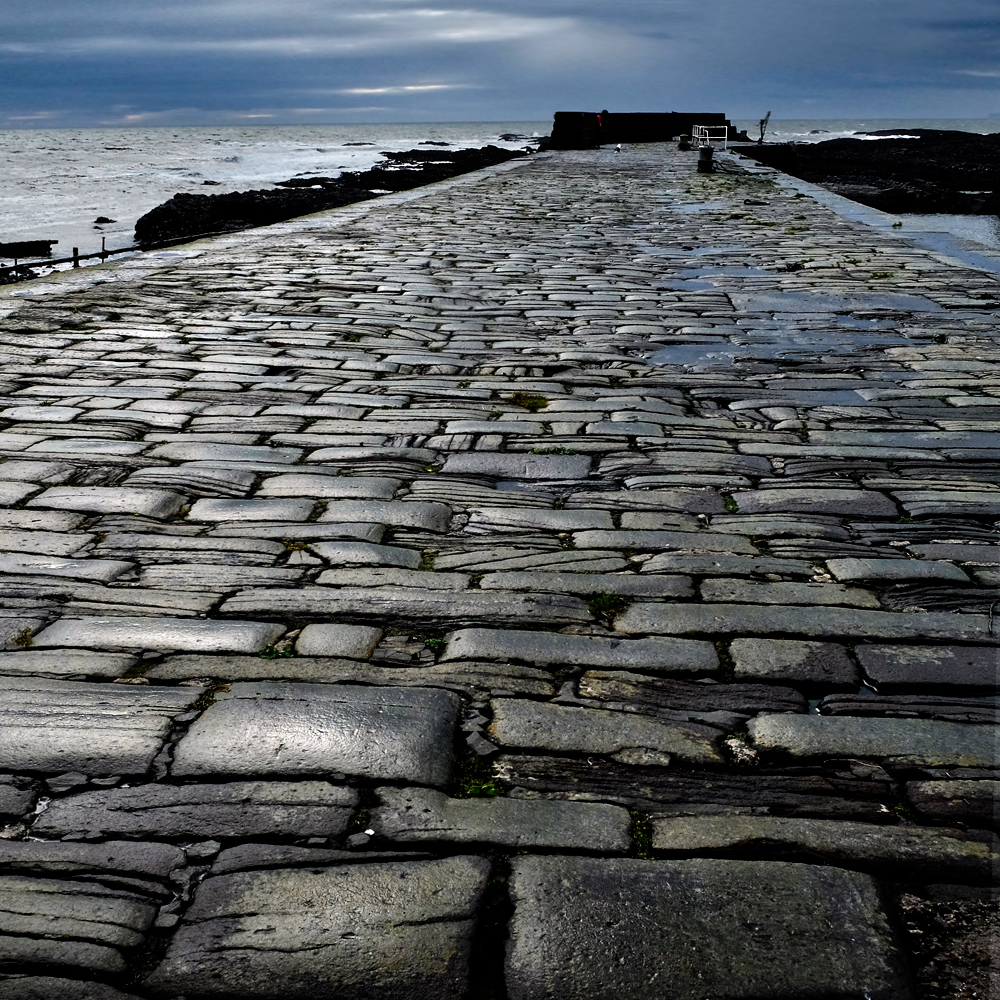 The fine old stone harbour jetty of Johnshaven.
The fine old stone harbour jetty of Johnshaven.
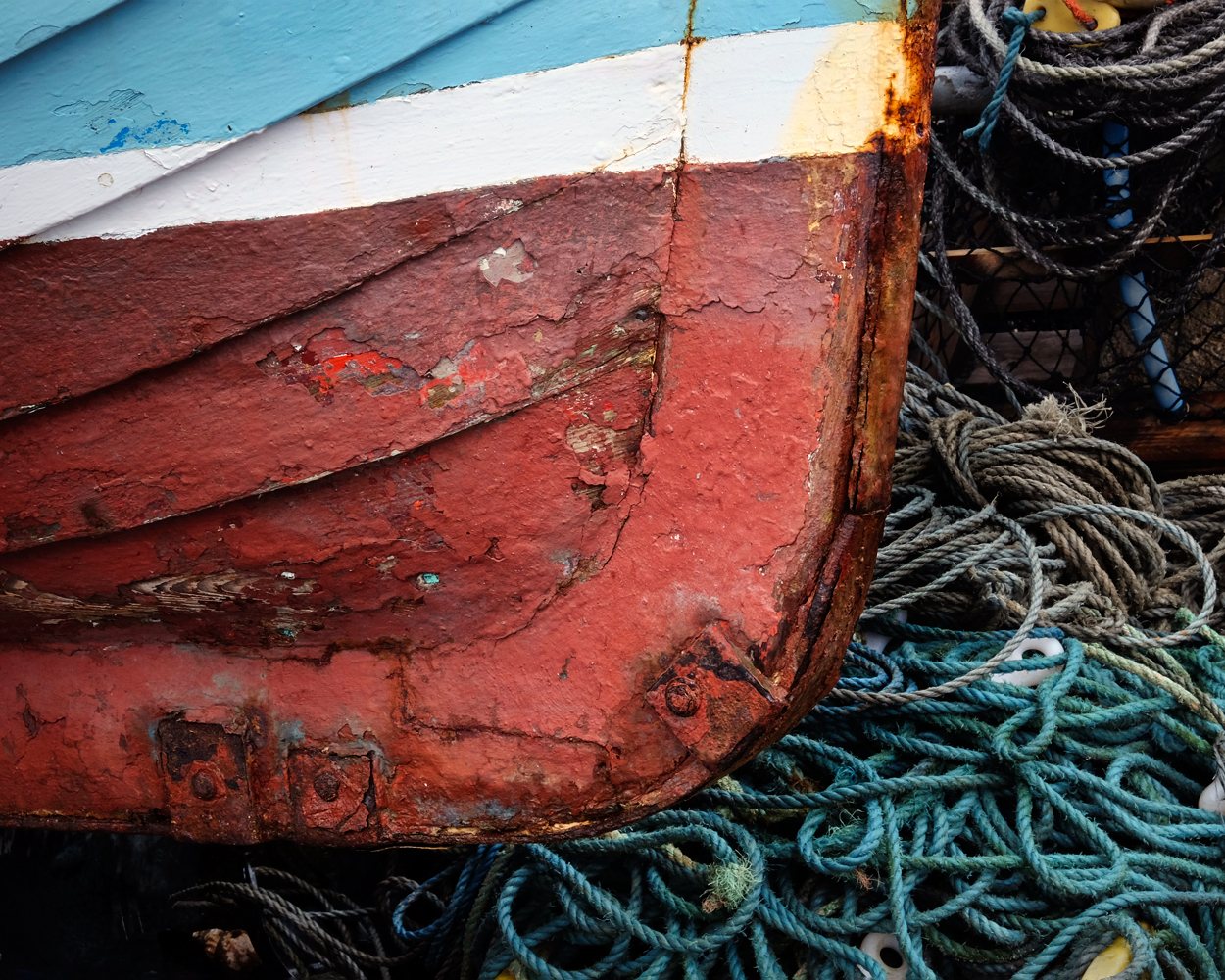 Johnshaven is a fishing village with many great nautical-themed photos to be had.
Johnshaven is a fishing village with many great nautical-themed photos to be had.
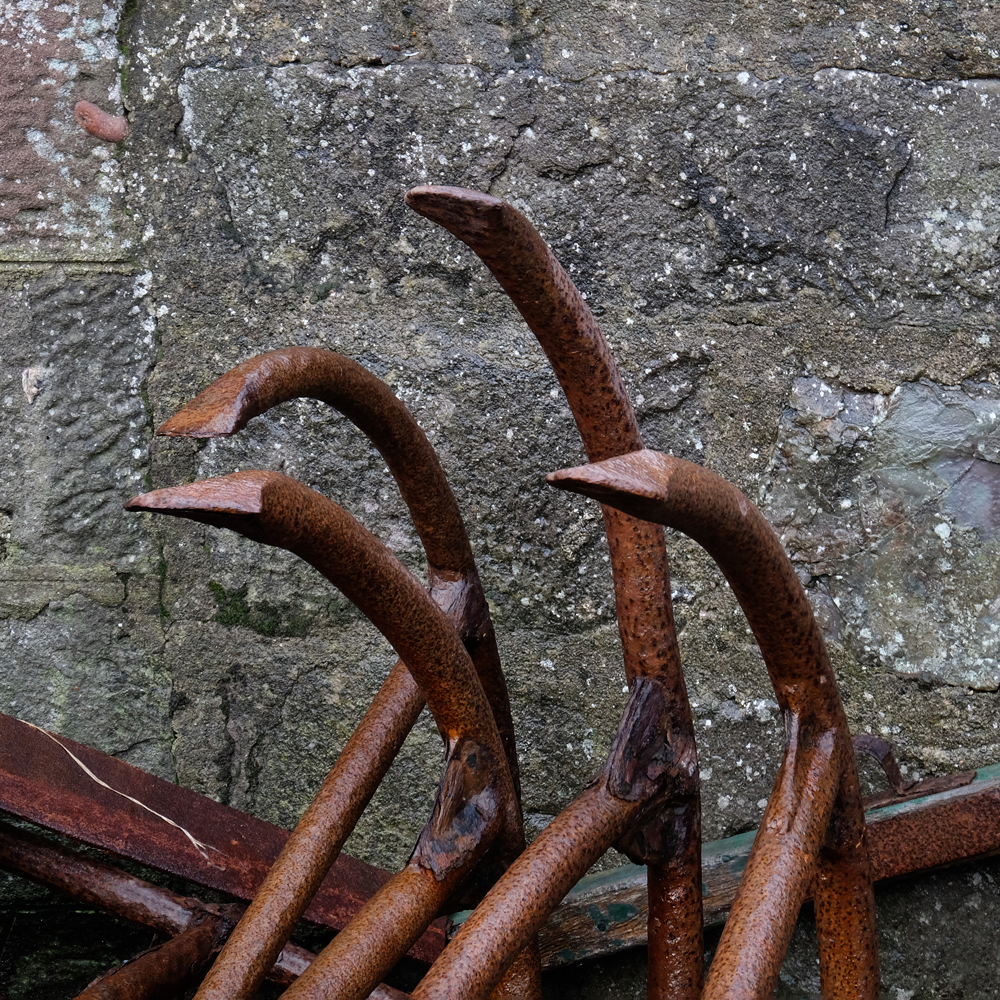 Old anchors in the boatyards.
Old anchors in the boatyards.
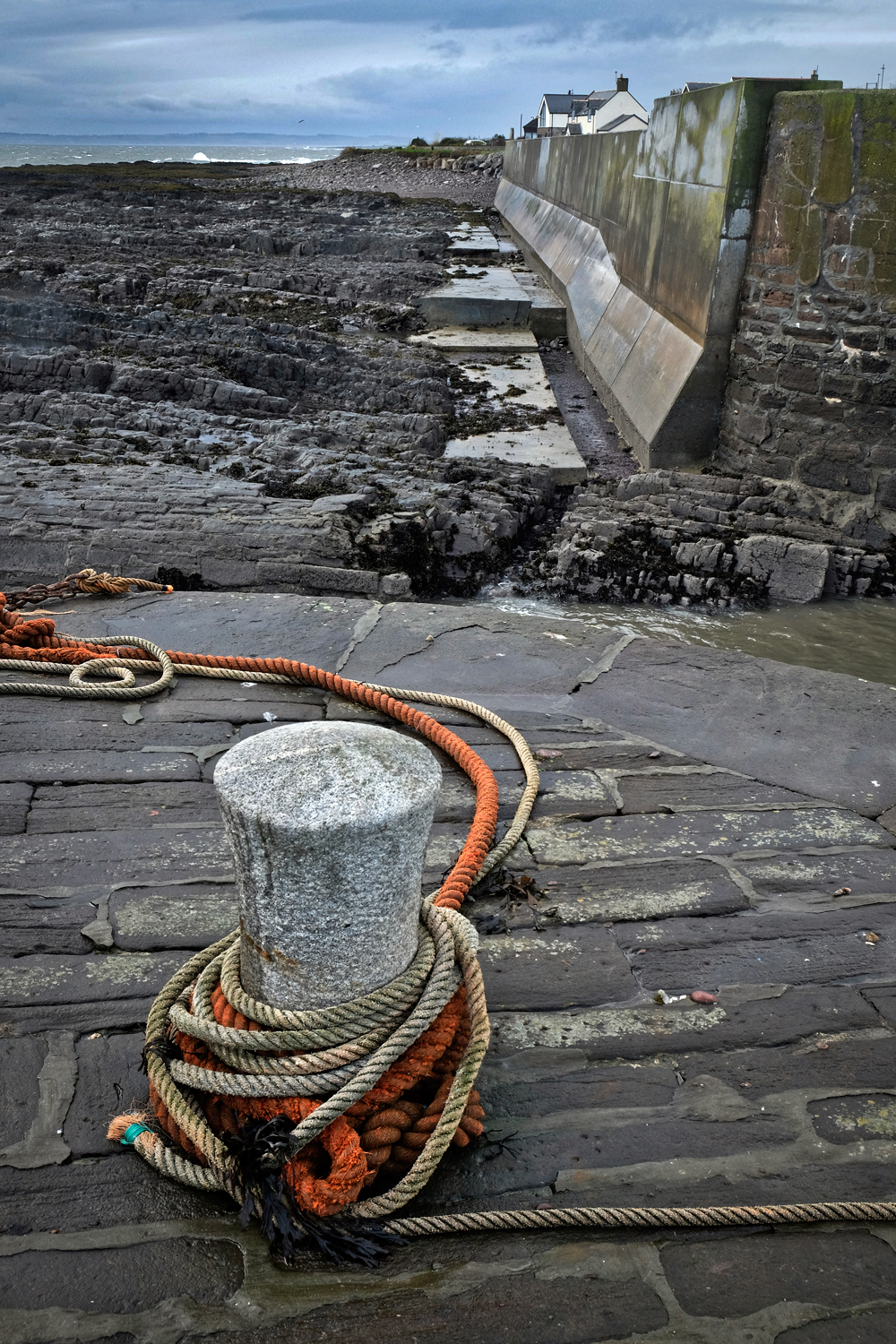 Low tide along the Johnshaven sea wall.
Low tide along the Johnshaven sea wall.
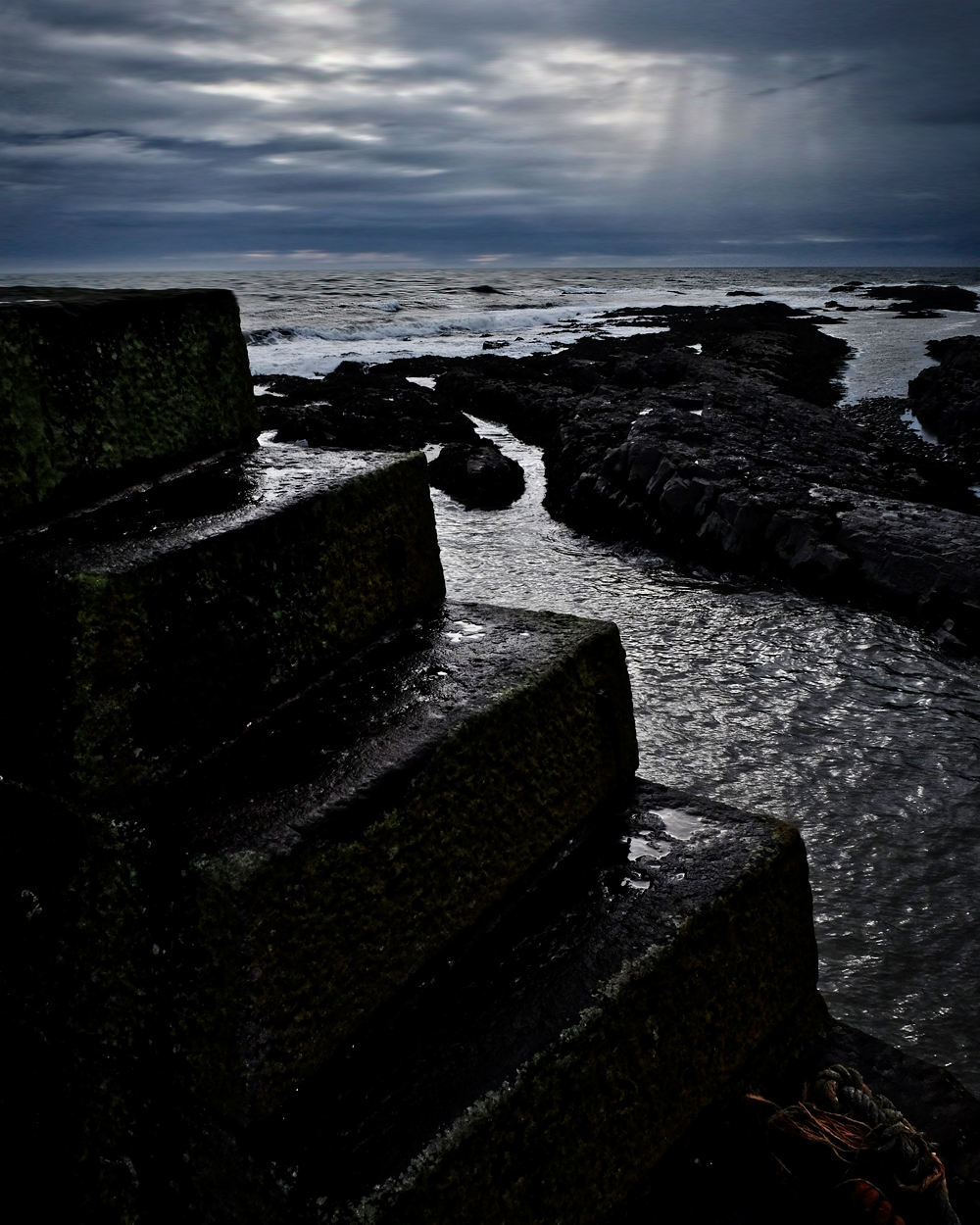 The only bad weather we saw during three days. A stormy North Sea.
The only bad weather we saw during three days. A stormy North Sea.
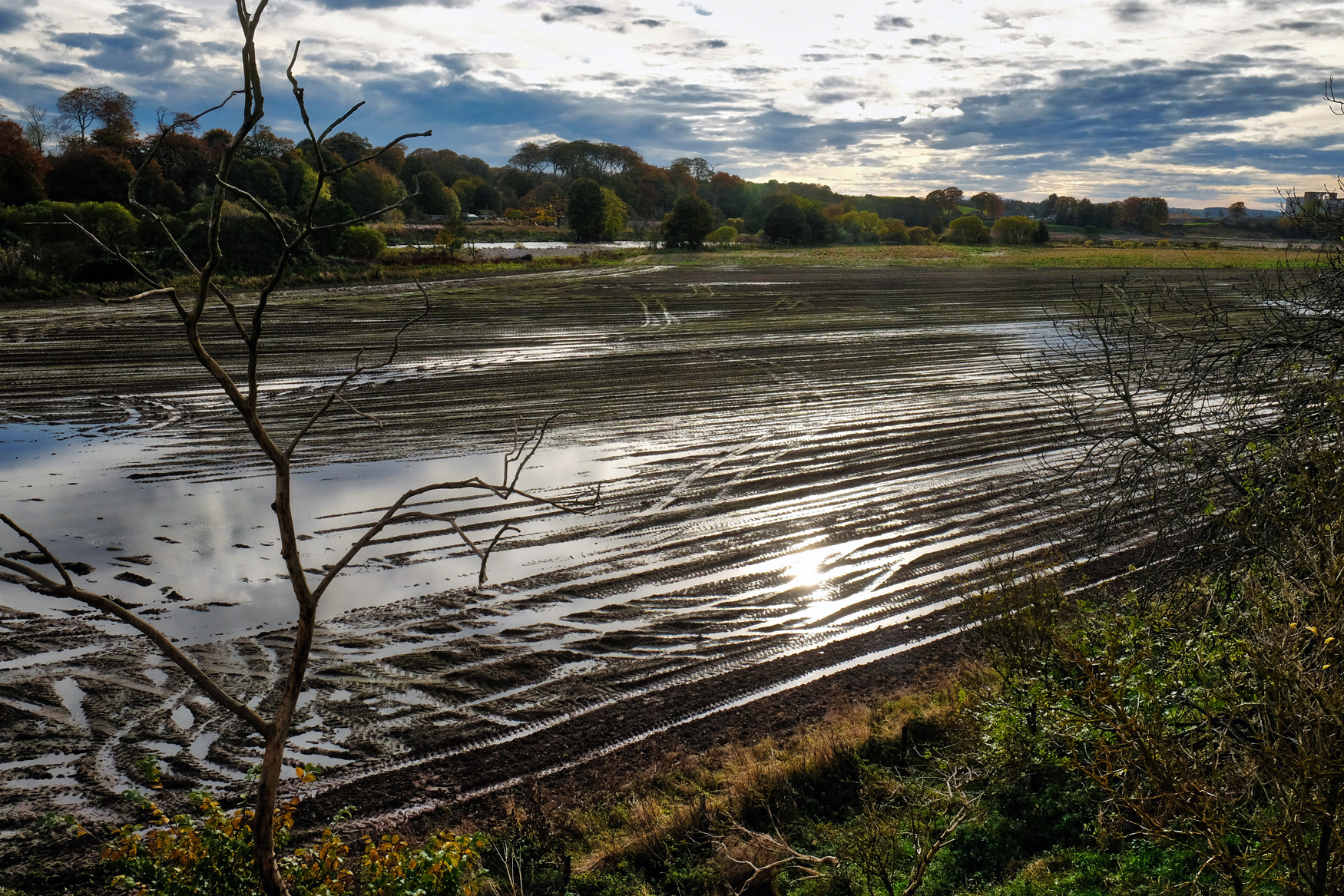 Near Montrose there were signs of a recent flood of the River Esk.
Near Montrose there were signs of a recent flood of the River Esk.
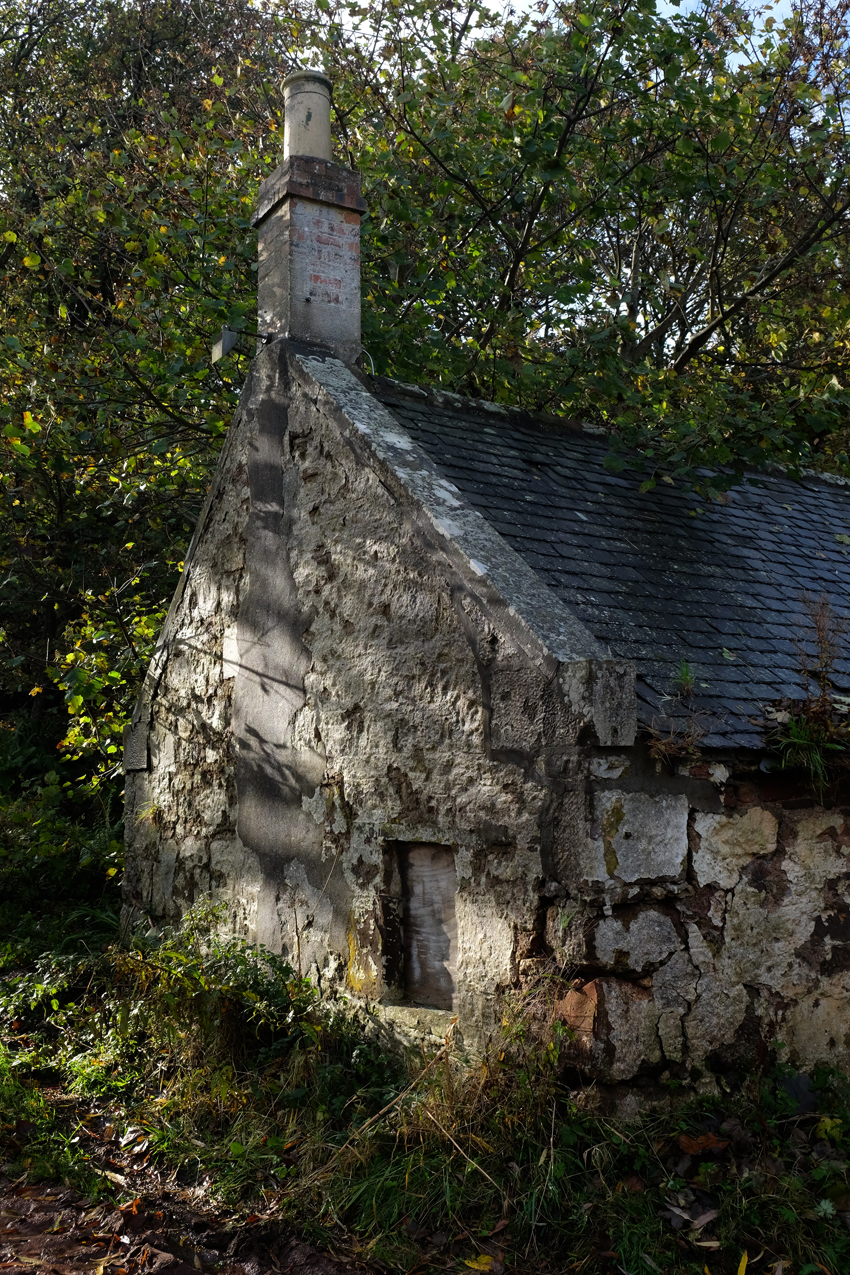 Whenever we would see magic light on an old stone building we would stop and take photographs.
Whenever we would see magic light on an old stone building we would stop and take photographs.
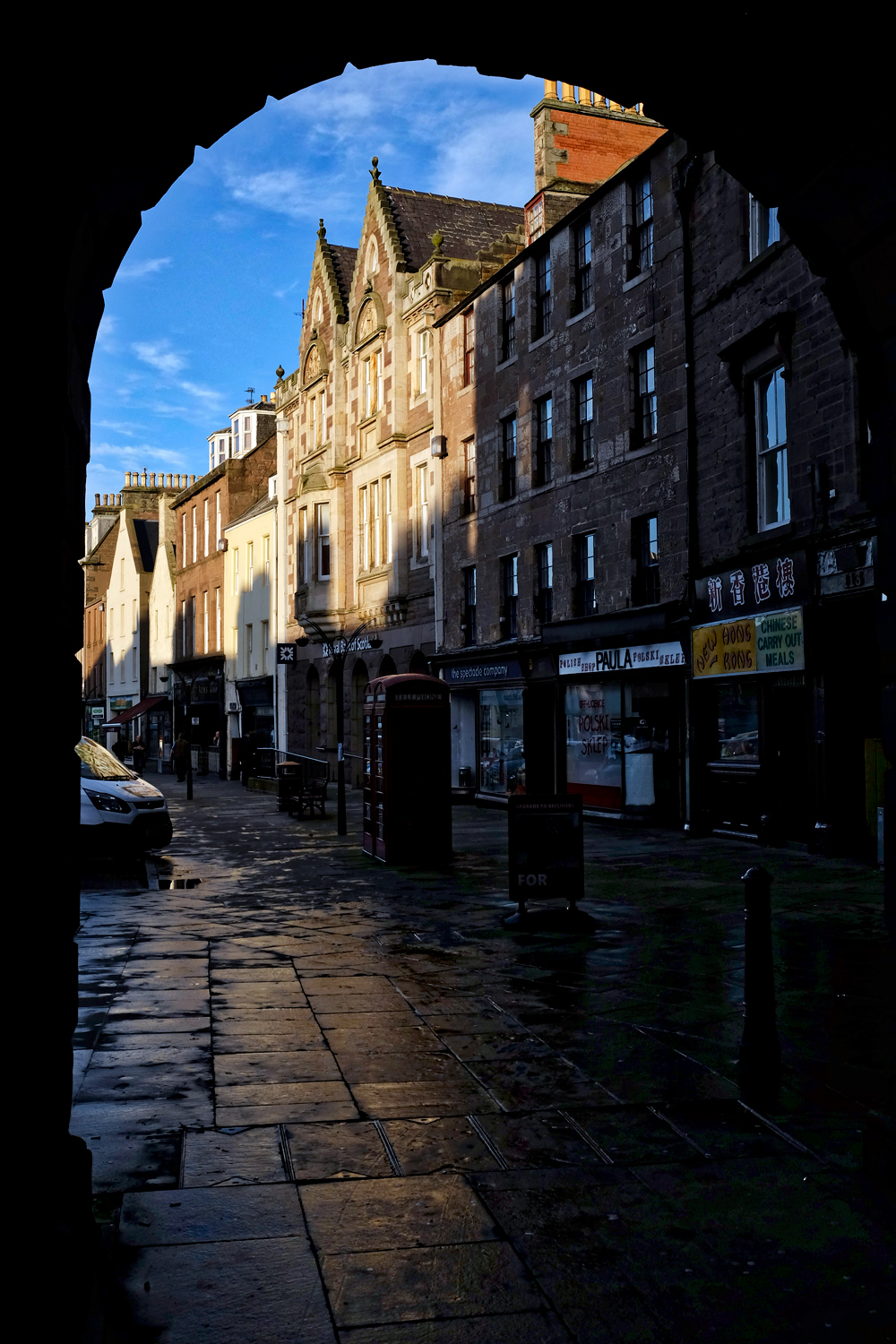 We stopped for coffee one late afternoon in the old market town of Montrose.
We stopped for coffee one late afternoon in the old market town of Montrose.
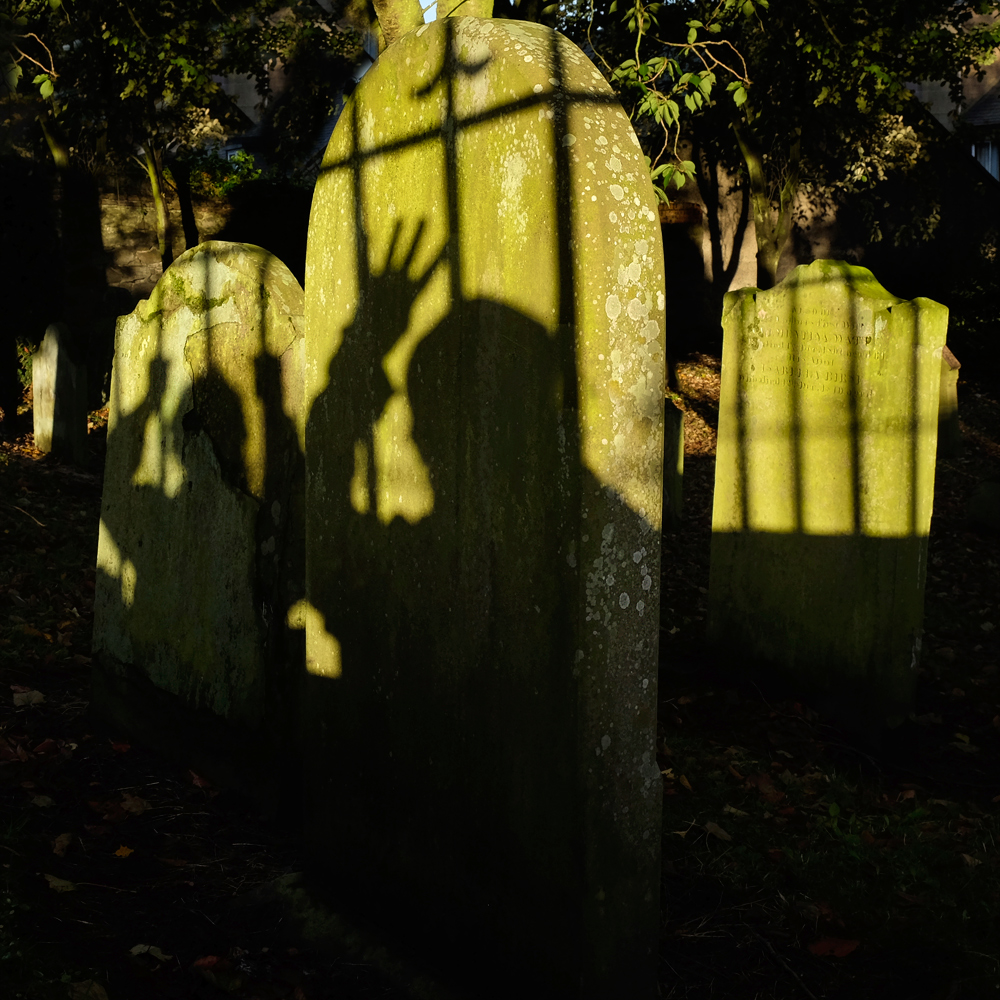 Yes, more ghoulish fun . . . in the Montrose Cemetery.
Yes, more ghoulish fun . . . in the Montrose Cemetery.
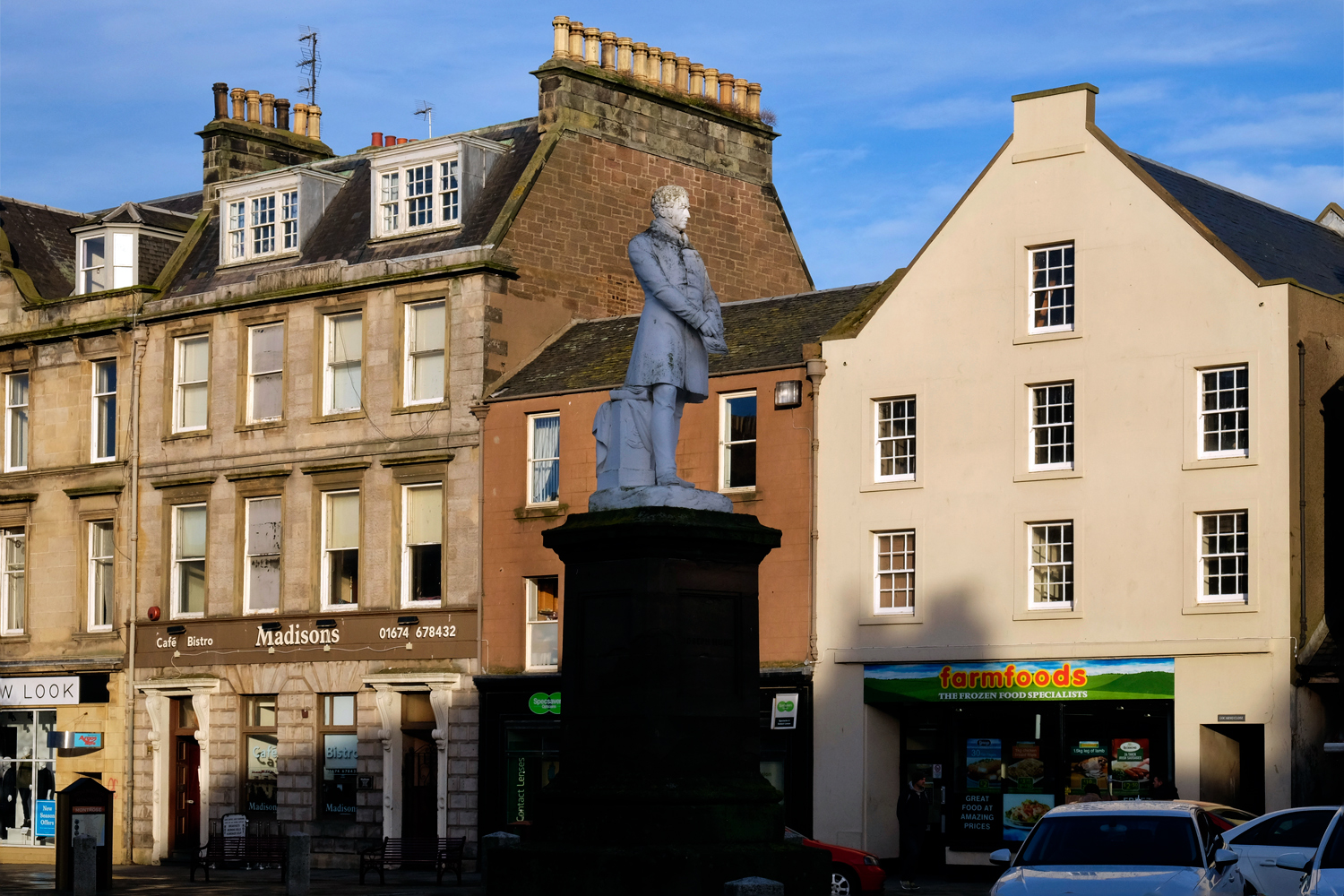 Montrose had some fine statues in the town square . . . here a good Samaritan was honored.
Montrose had some fine statues in the town square . . . here a good Samaritan was honored.
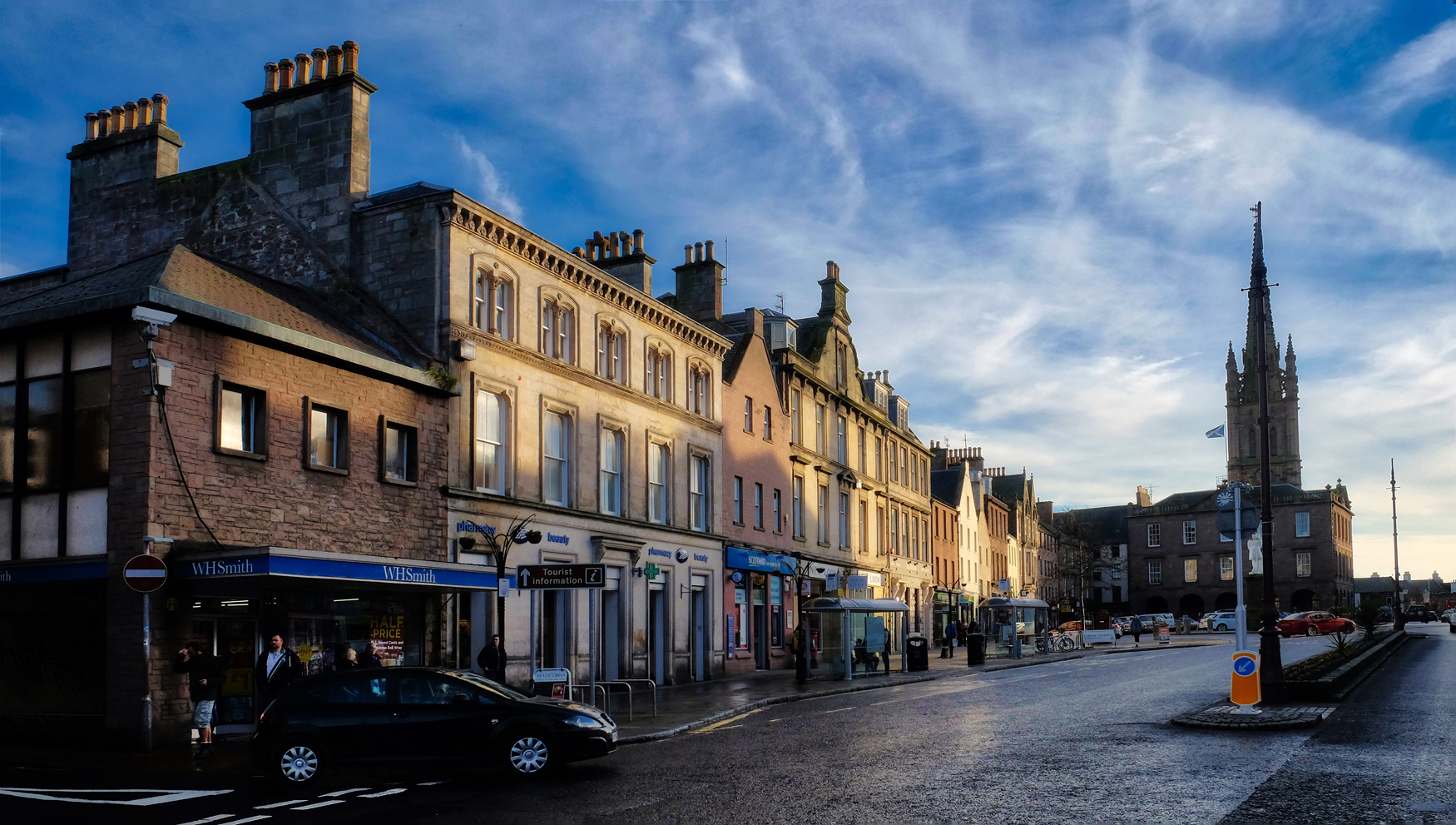 Montrose is typical of many Scottish towns.
Montrose is typical of many Scottish towns.
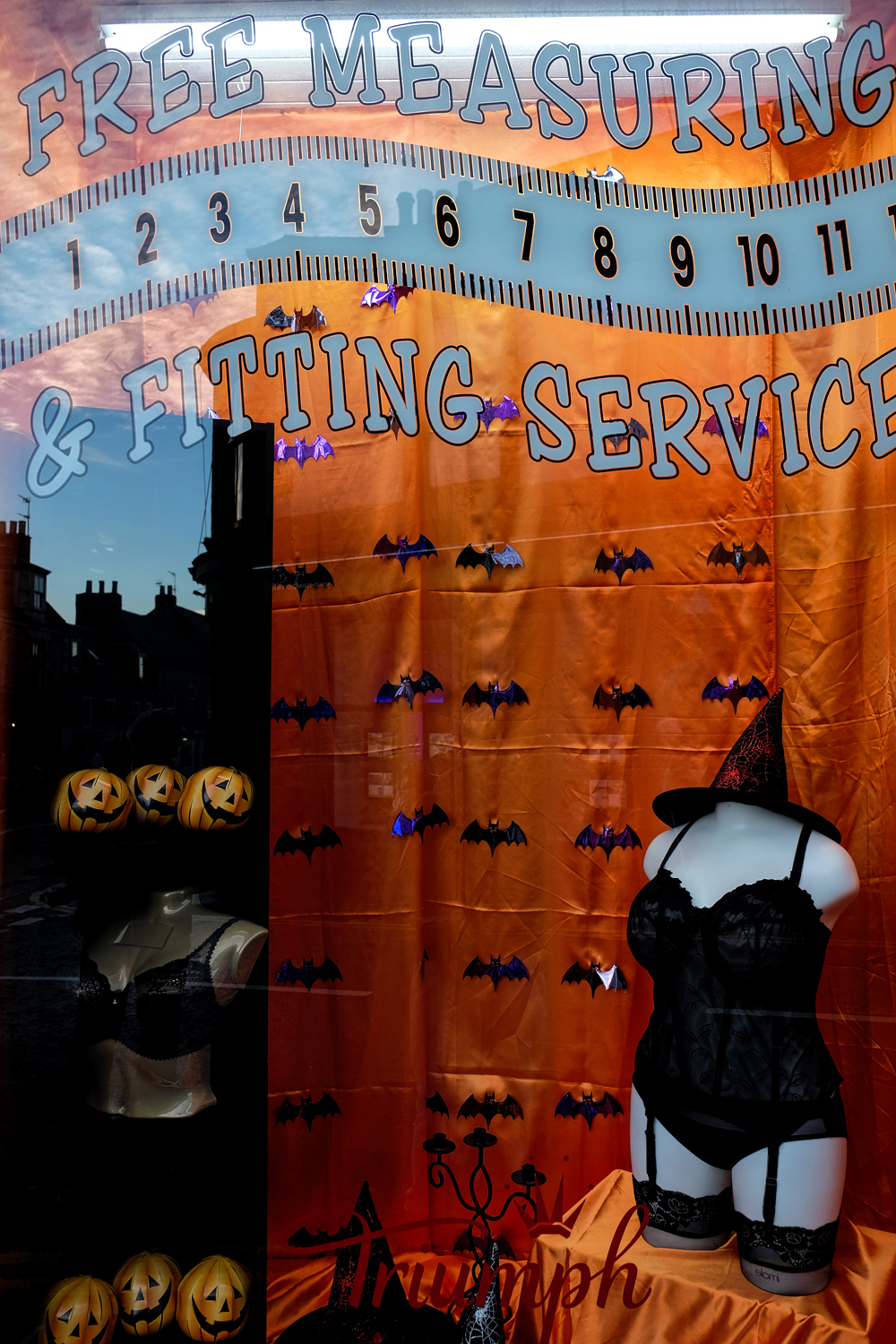 OK, maybe Montrose is not so typical after all.
OK, maybe Montrose is not so typical after all.
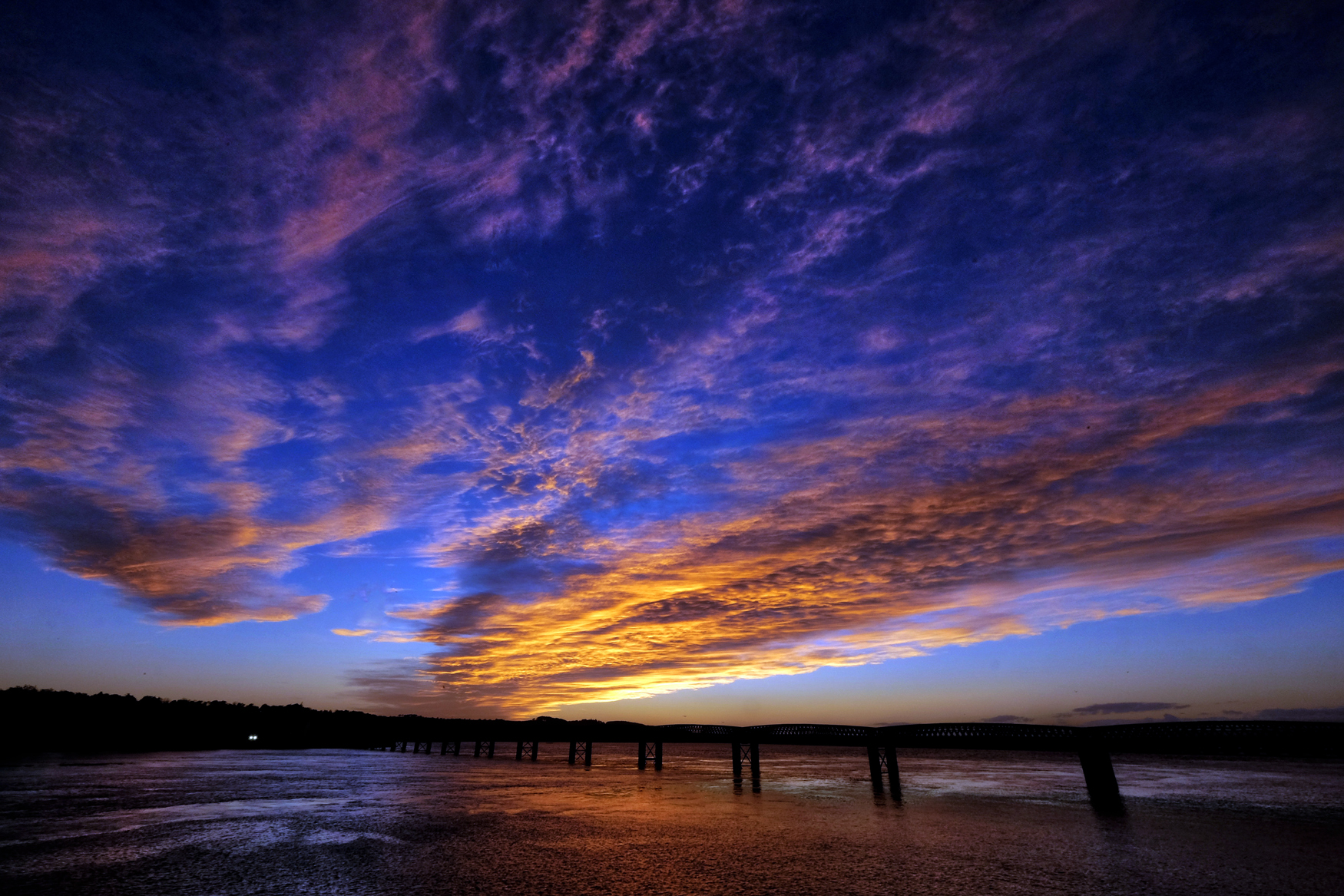 But what I will remember most about Montrose was the most incredible sunset of my life playing over us across the estuary bridge!
But what I will remember most about Montrose was the most incredible sunset of my life playing over us across the estuary bridge!
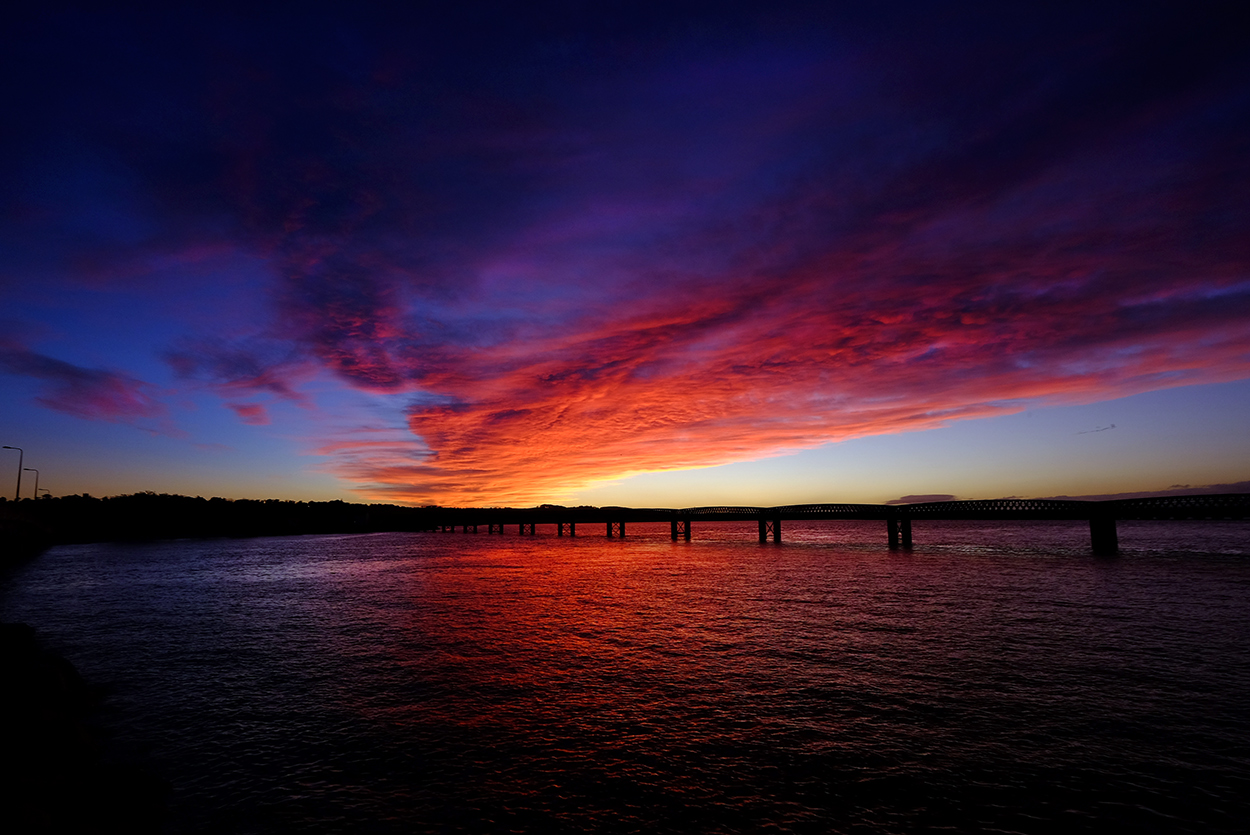 From beginning to end . . . we were completely enthralled.
From beginning to end . . . we were completely enthralled.
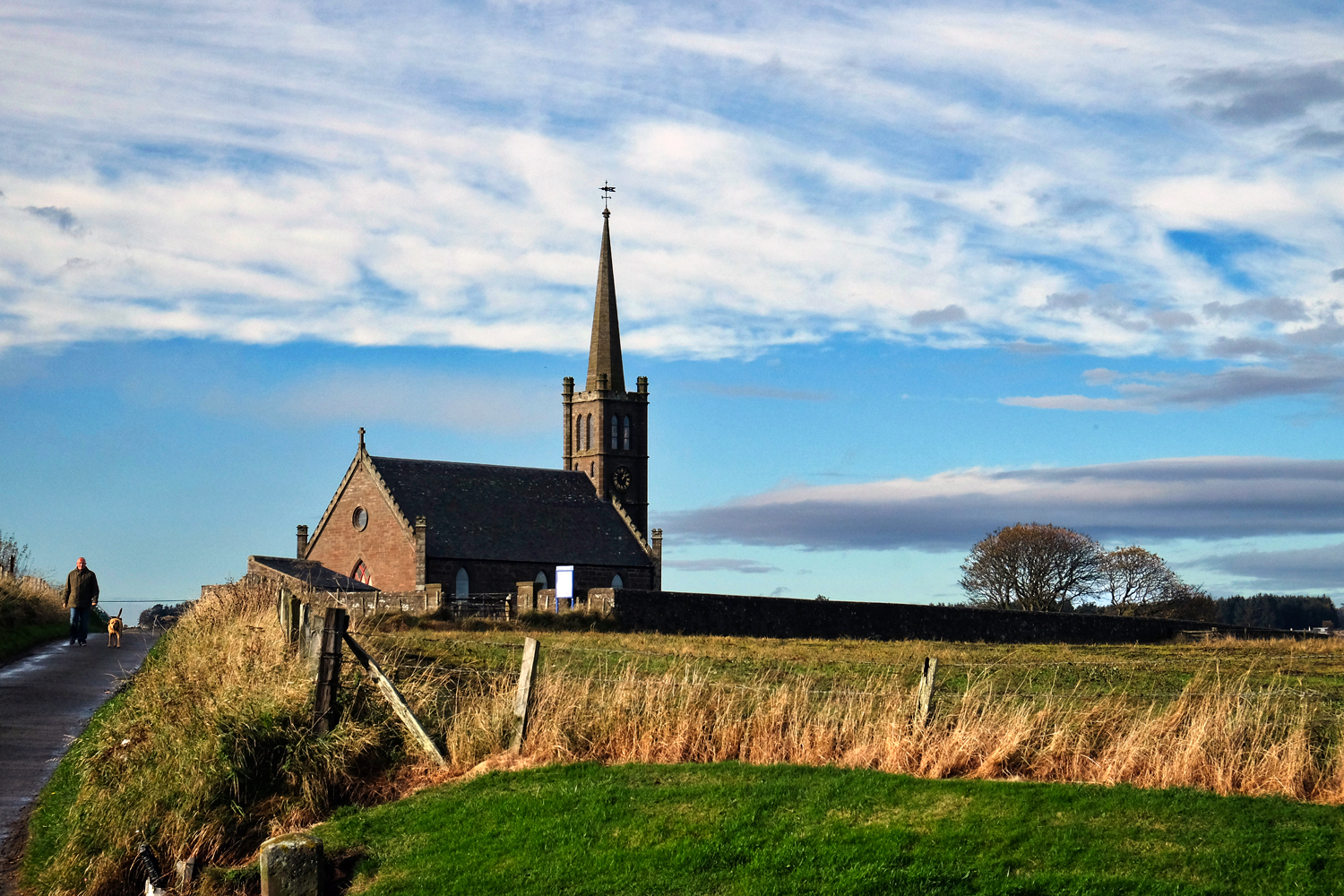 Another day along the small country lanes above the North Sea.
Another day along the small country lanes above the North Sea.
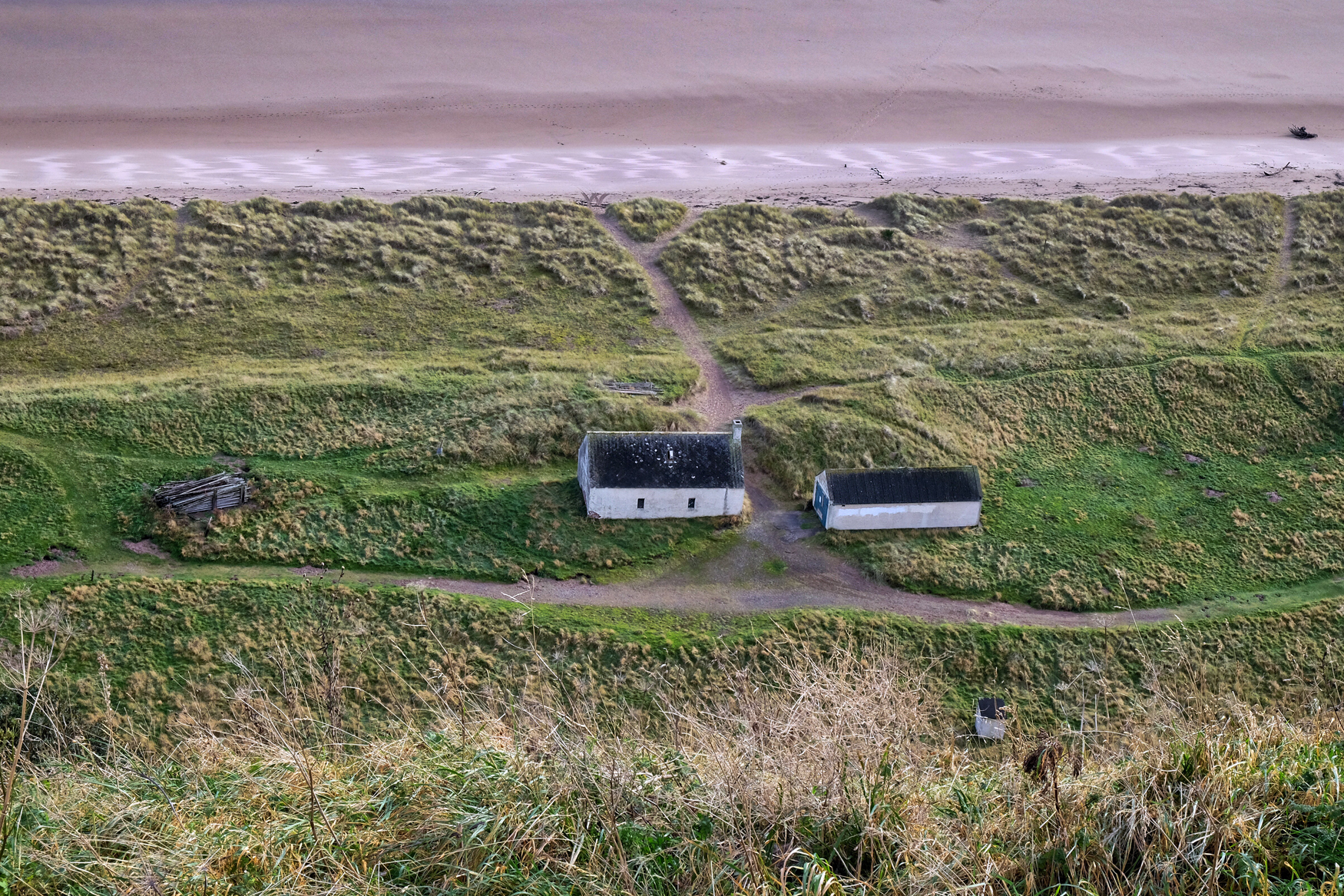 Old farm houses along a strand of the North Sea.
Old farm houses along a strand of the North Sea.
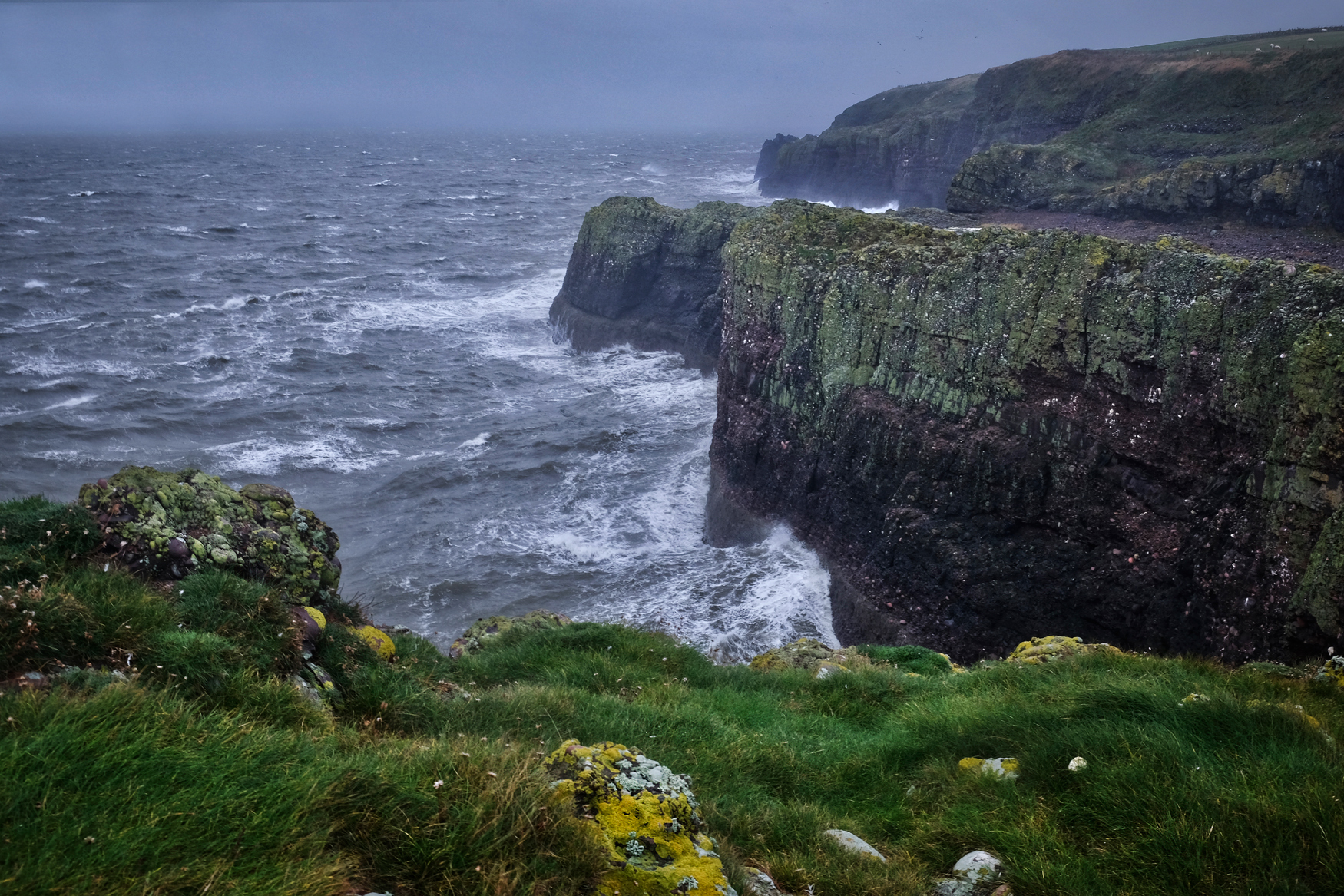 A wild North Sea below the cliffs of Aberdeenshire.
A wild North Sea below the cliffs of Aberdeenshire.
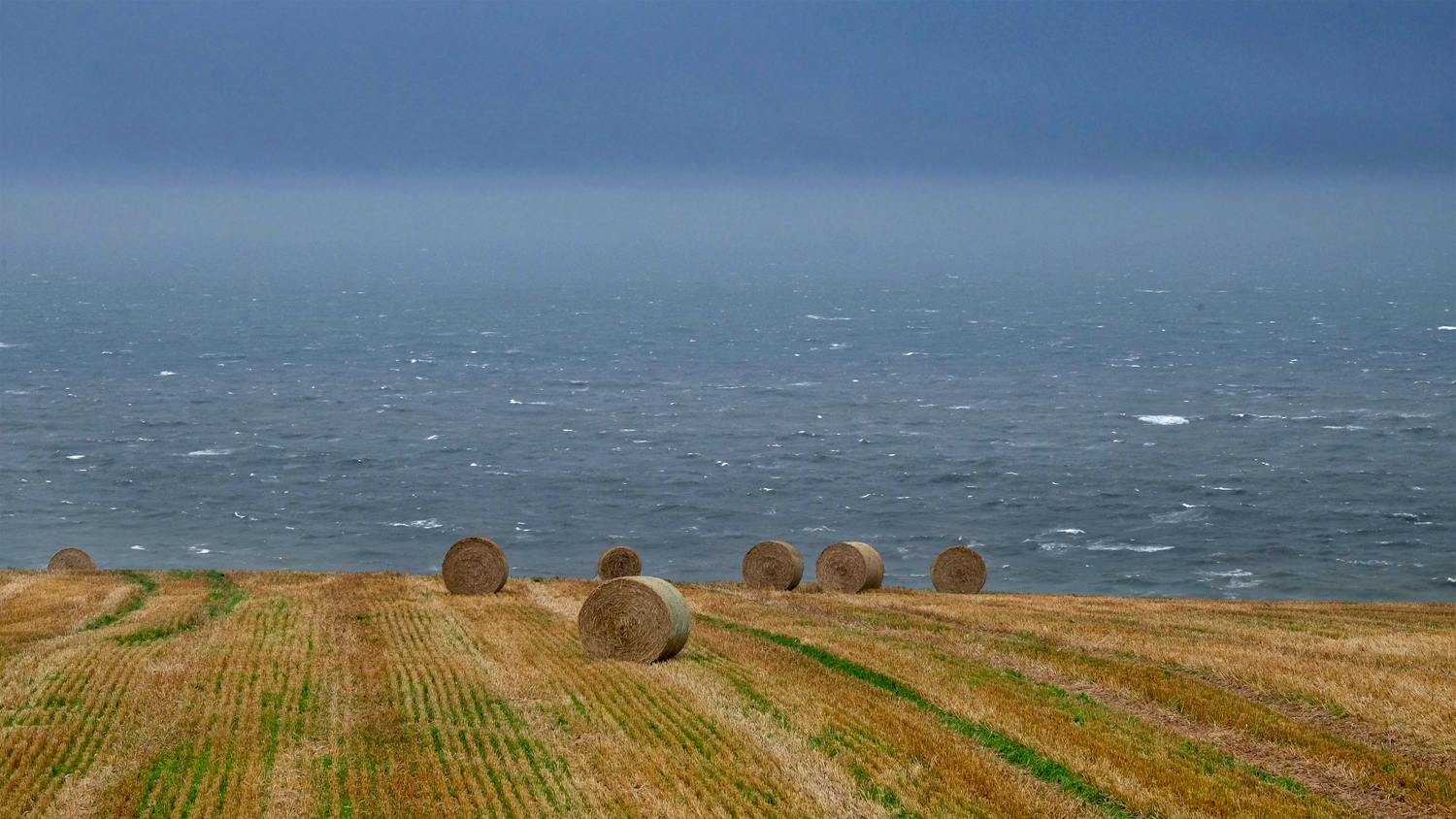 North Sea hay bales.
North Sea hay bales.
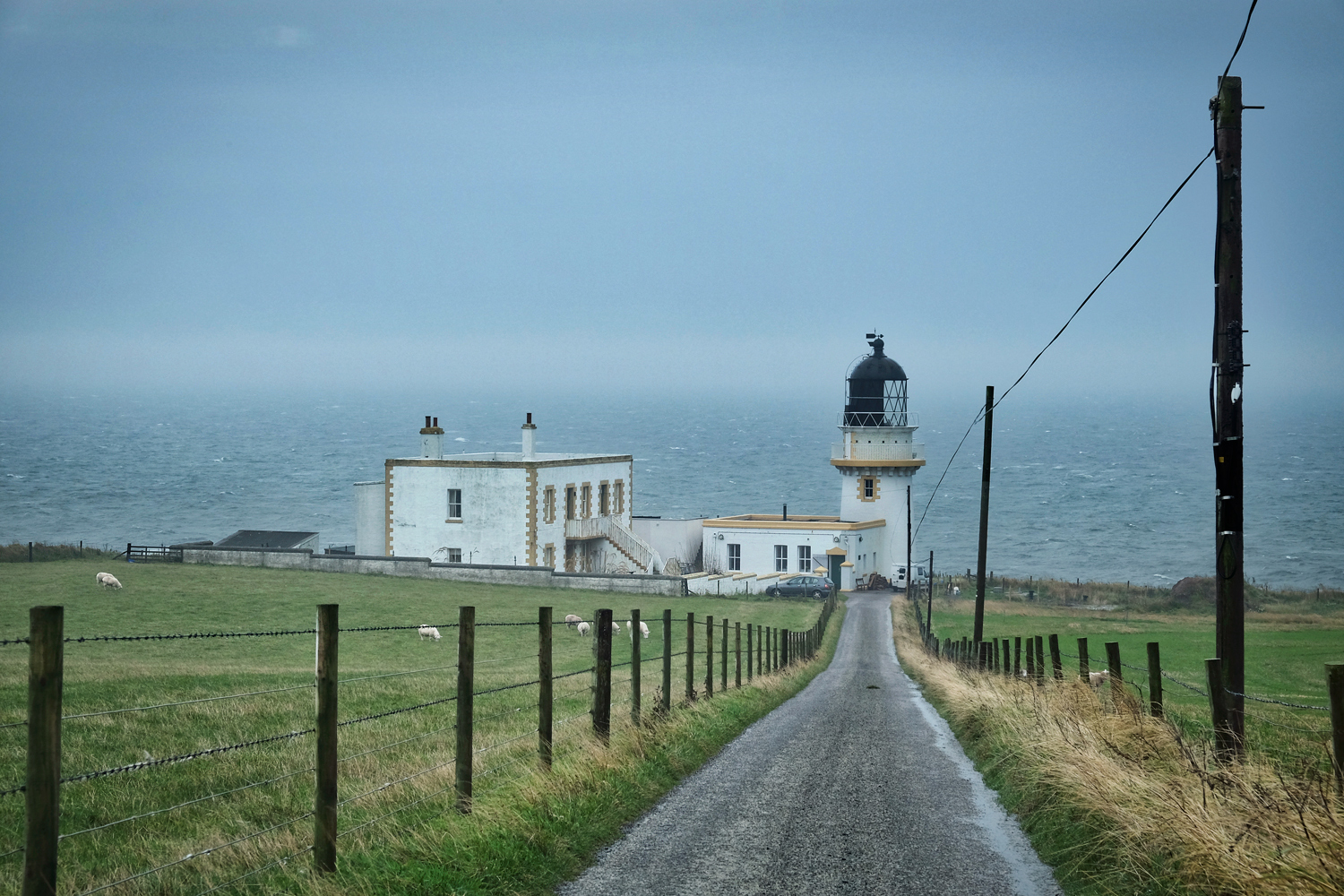 We saw so much and did so much in those short three days . . . and this blog entry represents only a small part of it all. I may elaborate more on this entry at a later date, but for now, that is all.
We saw so much and did so much in those short three days . . . and this blog entry represents only a small part of it all. I may elaborate more on this entry at a later date, but for now, that is all.
Scotland Coastal Villages - Banff and MacDuff
 Tuesday, June 21, 2016 at 4:21AM
Tuesday, June 21, 2016 at 4:21AM  Here I am again . . . tagging along with my wife on her golf tournament. I dropped her off at Duff House Royal Golf Club and set off for a little photographic expedition to the coastal villeges nearby: Banff and MacDuff. This is the village center of Banff.
Here I am again . . . tagging along with my wife on her golf tournament. I dropped her off at Duff House Royal Golf Club and set off for a little photographic expedition to the coastal villeges nearby: Banff and MacDuff. This is the village center of Banff.
 Banff is a very old village. It had its first castle in 1163, build to repel the invading Vikings.
Banff is a very old village. It had its first castle in 1163, build to repel the invading Vikings.
 Banff is a more prosperous village. It was a trading center until the 1770s, when a port was constructed.
Banff is a more prosperous village. It was a trading center until the 1770s, when a port was constructed.
 Banff is built up the side of a rather steel hill that rises up from a broad bay. There are still narrow walking paths that give the only access to quaint cottages.
Banff is built up the side of a rather steel hill that rises up from a broad bay. There are still narrow walking paths that give the only access to quaint cottages.
 A typical 17th century house in Banff.
A typical 17th century house in Banff.
 Banff is a lovely village. It is just big enough to offer all the amenities, but small enough to still feel like a village. I could see living in this house (it's for sale) on street off the bay.
Banff is a lovely village. It is just big enough to offer all the amenities, but small enough to still feel like a village. I could see living in this house (it's for sale) on street off the bay.
 There are a couple of scaled-down 'supermarkets' in Banff, but the downtown is still vibrant, owing to the fact that the nearest mall is 50 miles away.
There are a couple of scaled-down 'supermarkets' in Banff, but the downtown is still vibrant, owing to the fact that the nearest mall is 50 miles away.
 There are several quaint old hotels in town.
There are several quaint old hotels in town.
 I couldn't resist snooping around the fascinating old cemetery . . . right in the middle of the village.
I couldn't resist snooping around the fascinating old cemetery . . . right in the middle of the village.
 I come from a very wet place (Western Oregon in the USA), so I understand this kind of moss.
I come from a very wet place (Western Oregon in the USA), so I understand this kind of moss.
 There were several extraordinary crypts and carved grave covers.
There were several extraordinary crypts and carved grave covers.
 Just so your survivors wouldn't have to wonder what happened to you . . . you put a skull and bones on your grave marker. [Note to self: do not have horizontal grave stone in rainy environment.]
Just so your survivors wouldn't have to wonder what happened to you . . . you put a skull and bones on your grave marker. [Note to self: do not have horizontal grave stone in rainy environment.]
 I decided to walk back through old town Banff toward the sea and the jetty. These are the oldest continuously inhabited buildings in Banff, dating from the mid-14th century.
I decided to walk back through old town Banff toward the sea and the jetty. These are the oldest continuously inhabited buildings in Banff, dating from the mid-14th century.
 Being such a very old village, there were, of course, a few buildings that were in full deterioration. My favorite photo subject!
Being such a very old village, there were, of course, a few buildings that were in full deterioration. My favorite photo subject!
 House number 30.
House number 30.
 I love the story of time and weather written on these old, unattended, doors.
I love the story of time and weather written on these old, unattended, doors.
 House number 32. Nobody home.
House number 32. Nobody home.
 The sea wall at high tide. I followed the wall out to the jetty next to a raging North Sea.
The sea wall at high tide. I followed the wall out to the jetty next to a raging North Sea.
 Crabbing and shrimping pots lined the old stone jetty.
Crabbing and shrimping pots lined the old stone jetty.
 I studied these for a few minutes, imagining myself as a crab, but I couldn't work out how these thing worked.
I studied these for a few minutes, imagining myself as a crab, but I couldn't work out how these thing worked.
 View from the jetty: A broad bay separates Banff from the even smaller village of MacDuff, seen on the horizon. This is where the River Deveron estuary ends in the North Sea.
View from the jetty: A broad bay separates Banff from the even smaller village of MacDuff, seen on the horizon. This is where the River Deveron estuary ends in the North Sea.
 Ther is a small light at the end of the jetty. At high tide the waves occasionally break over sea wall.
Ther is a small light at the end of the jetty. At high tide the waves occasionally break over sea wall.
 I was getting hungry, so I took a different street back to my car. I passed this relic of days gone bye.
I was getting hungry, so I took a different street back to my car. I passed this relic of days gone bye.
 I often ask myself, what is it about old doors that compel me to take a photograph? Something about mortality, I believe.
I often ask myself, what is it about old doors that compel me to take a photograph? Something about mortality, I believe.
 I made my way back to the village center and then on up the steep hill to a nice cafe and had a bowl of Cullen Skink, a scone, and a cup of coffee.
I made my way back to the village center and then on up the steep hill to a nice cafe and had a bowl of Cullen Skink, a scone, and a cup of coffee.
 After lunch I decided to find the castle whose sign I saw driving in. My GPS said there was a castle only four miles away. I ended up on this gravel road through a beautiful wood.
After lunch I decided to find the castle whose sign I saw driving in. My GPS said there was a castle only four miles away. I ended up on this gravel road through a beautiful wood.
 I knew I was getting close to a castle when I started to see the old outbuildings.
I knew I was getting close to a castle when I started to see the old outbuildings.
 I love these old abandoned stone houses. I have a fantasy each time of fixing it up and living in it.
I love these old abandoned stone houses. I have a fantasy each time of fixing it up and living in it.
 Now I knew I was getting close . . . a castle gate house . . . and occupied too.
Now I knew I was getting close . . . a castle gate house . . . and occupied too.
 AH! There it is. A castle through the trees. I was not sure if this particular castle was occupied by the laird, or was open to the public. I was a little concerned someone would run our and yell at me that I was trespassing.
AH! There it is. A castle through the trees. I was not sure if this particular castle was occupied by the laird, or was open to the public. I was a little concerned someone would run our and yell at me that I was trespassing.
 I stayed back in the trees, just in case . . .
I stayed back in the trees, just in case . . .
 Magnificent and stately Craigston Castle, built in 1604. As it turns out, you can stay in this castle as a "luxury self-catering vacation home." No kidding. You can make a booking here.
Magnificent and stately Craigston Castle, built in 1604. As it turns out, you can stay in this castle as a "luxury self-catering vacation home." No kidding. You can make a booking here.
 I left the castle for a short drive to the harbour village of MacDuff. We stayed in this village right after we moved to Scotland. In fact, it was the first over night stay we made.
I left the castle for a short drive to the harbour village of MacDuff. We stayed in this village right after we moved to Scotland. In fact, it was the first over night stay we made.
 MacDuff has a proper shipyard for refitting fishing boats.
MacDuff has a proper shipyard for refitting fishing boats.
 Shipyards are visually intereting places. What in the world are these sharpened steel 'blades' used for? I have no idea.
Shipyards are visually intereting places. What in the world are these sharpened steel 'blades' used for? I have no idea.
 The rust was thick, but the pattern and color was captivating.
The rust was thick, but the pattern and color was captivating.
 Nice clean and newly painted fishing boats. I got lucky as the sun finally came out in the afternoon.
Nice clean and newly painted fishing boats. I got lucky as the sun finally came out in the afternoon.
 I could have stayed all day in the MacDuff shipyards, but my wife called to say her round was over. Great idea to affix these benches inside the seawall.
I could have stayed all day in the MacDuff shipyards, but my wife called to say her round was over. Great idea to affix these benches inside the seawall.
 We drove on the A947 back to Aberdeen. We passed a sign for Fyvie Castle . . . and I couldn't resist going in. My wife hadn't been before.
We drove on the A947 back to Aberdeen. We passed a sign for Fyvie Castle . . . and I couldn't resist going in. My wife hadn't been before.
 Fyvie castle is a proper castle. Built in 1211, Fyvie was the site of an open-air court held by Robert the Bruce, and Charles I lived there as a child.
Fyvie castle is a proper castle. Built in 1211, Fyvie was the site of an open-air court held by Robert the Bruce, and Charles I lived there as a child.
 Fyvie Castle was closed, but the vast grounds and gardens were opened. I will post more from the fabulous gardens soon.
Fyvie Castle was closed, but the vast grounds and gardens were opened. I will post more from the fabulous gardens soon.
